EXTREMELY RARE! WWII SECRET March 1943 Solomon Islands & Alaskan Areas Headquarters of the Commander in Chief Military Intelligence Report*
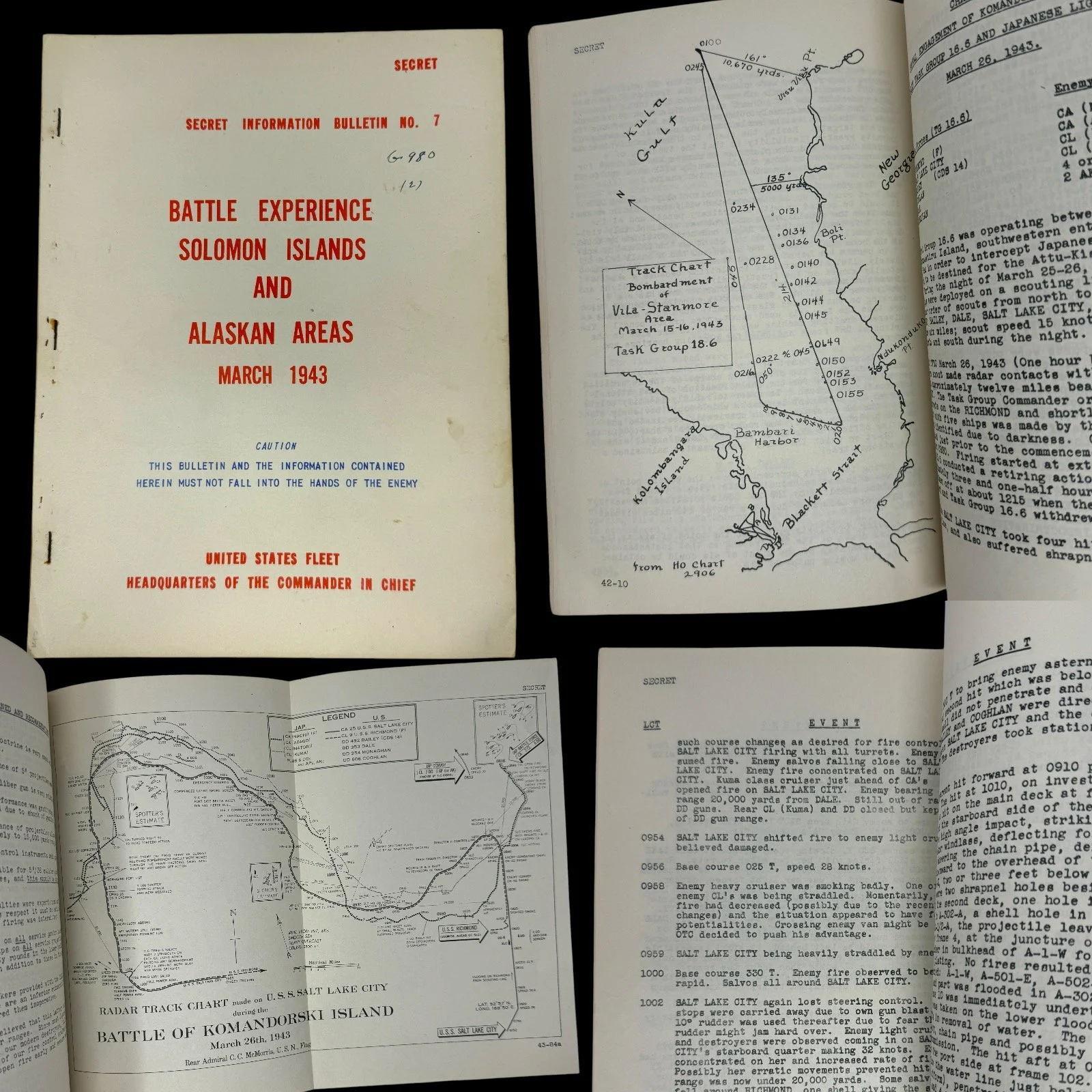
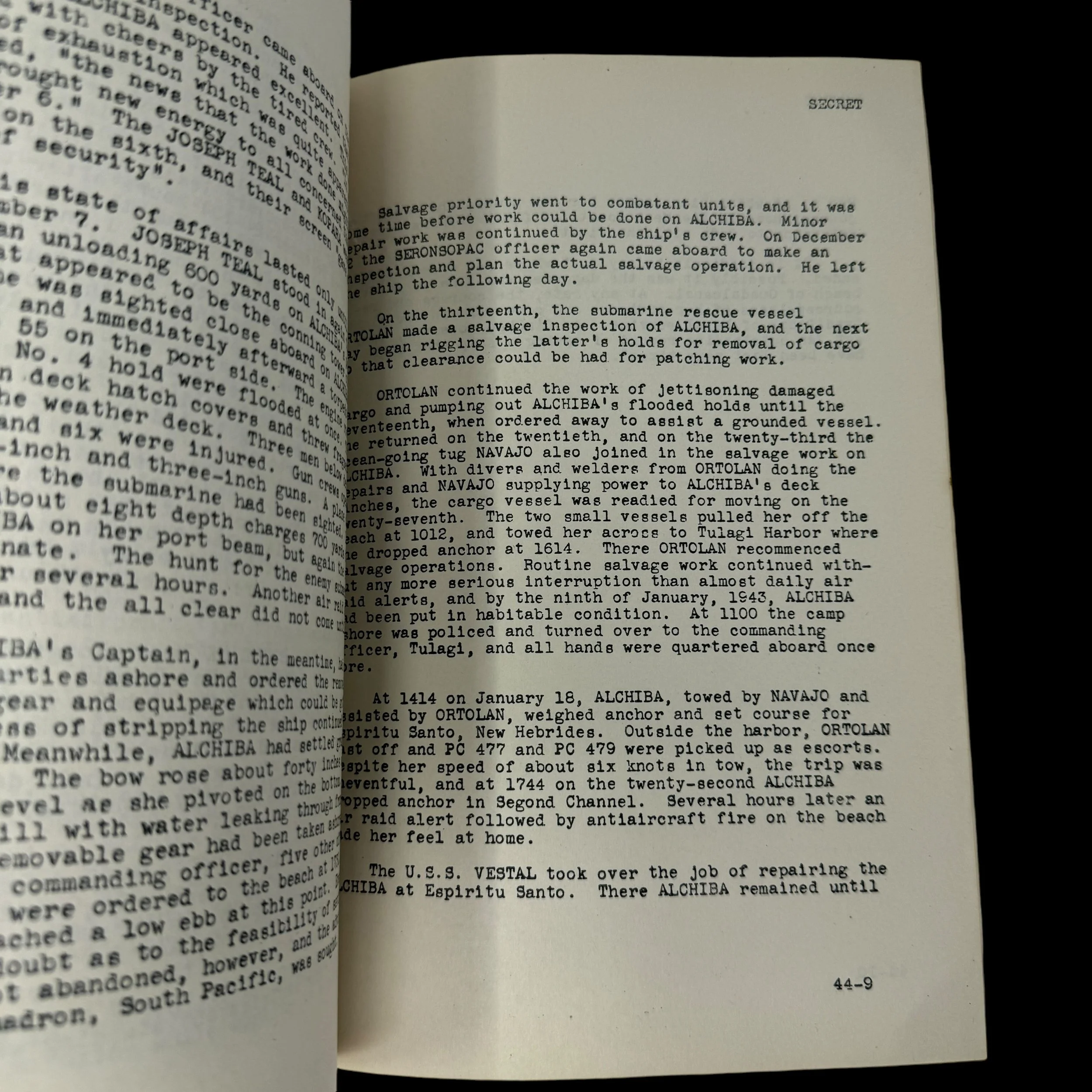
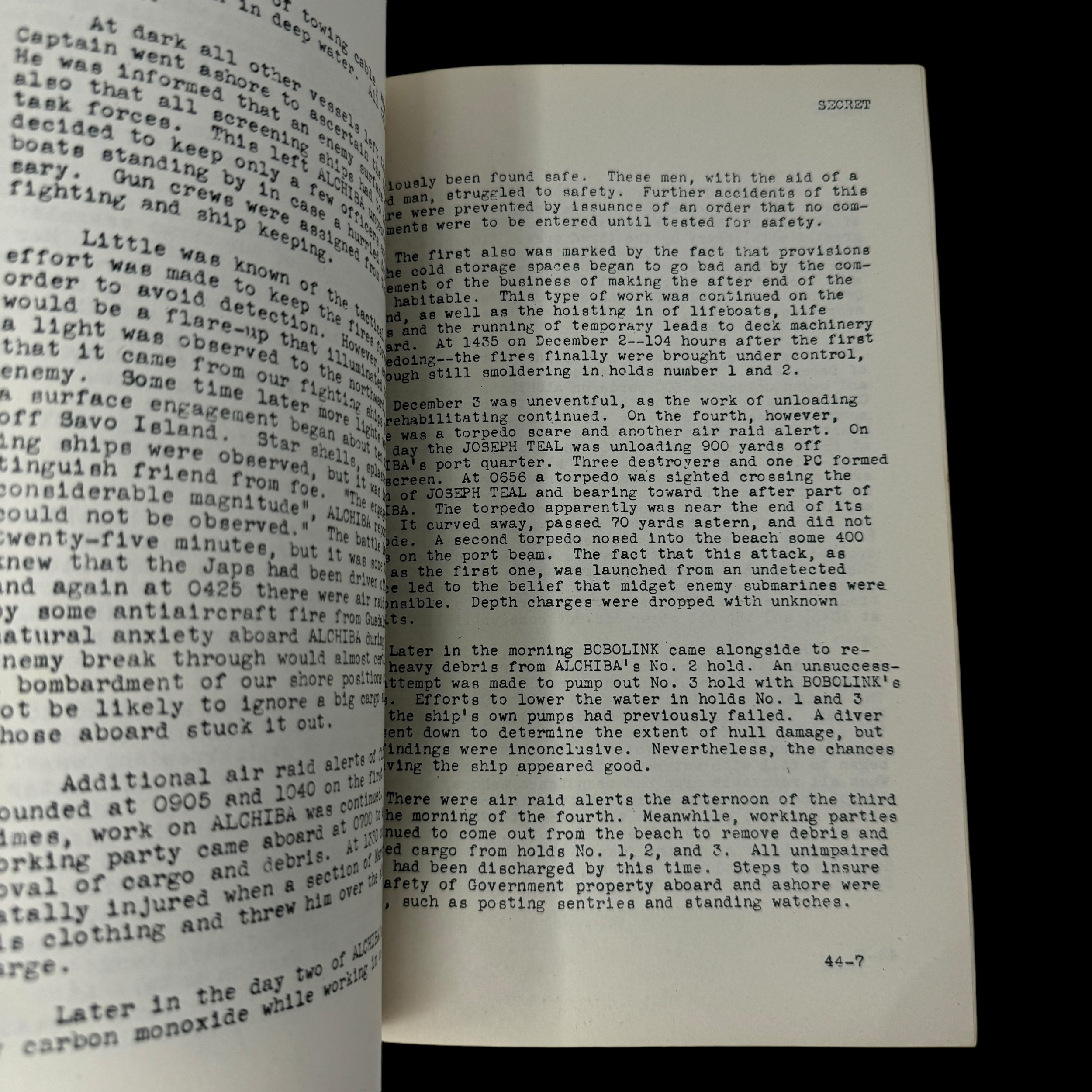
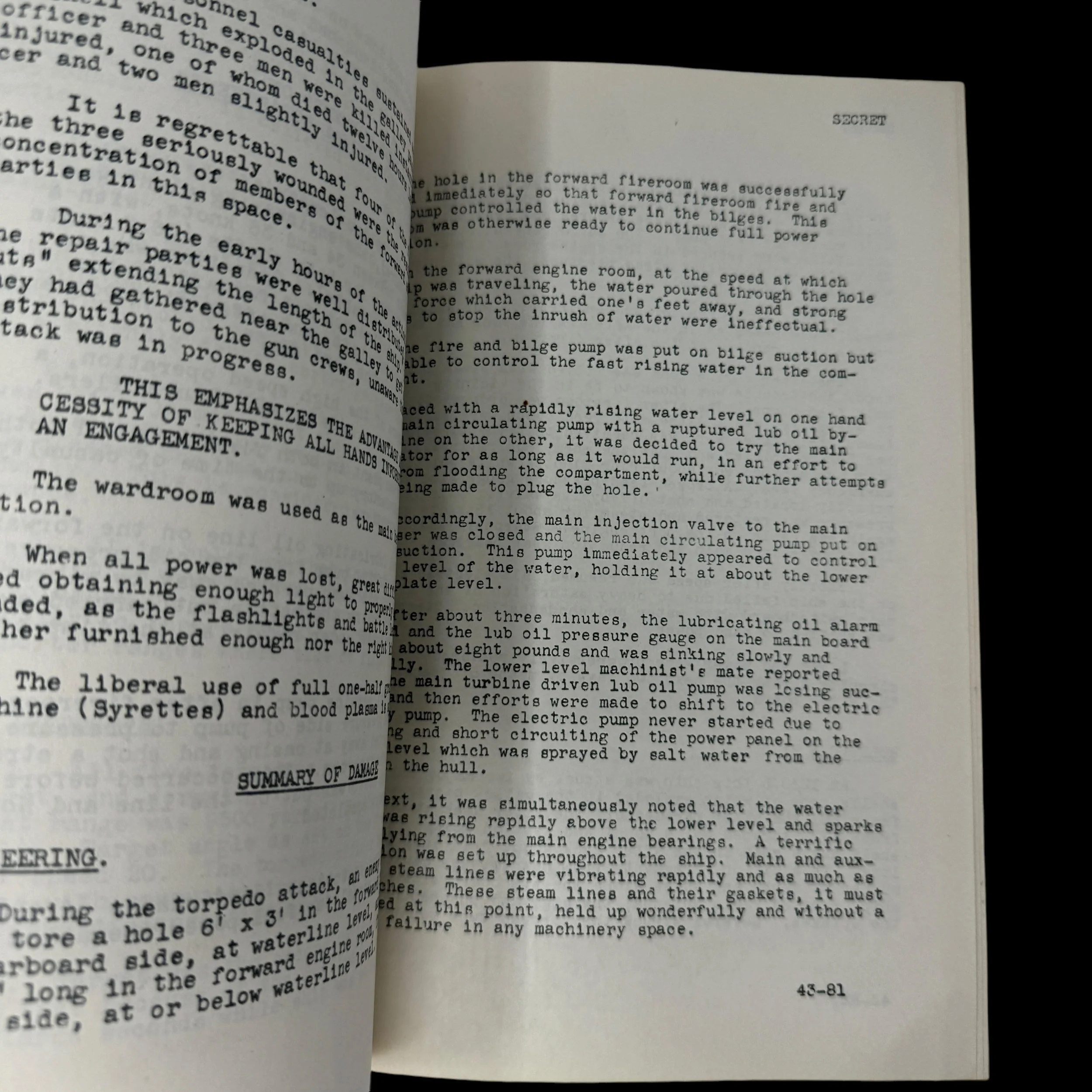

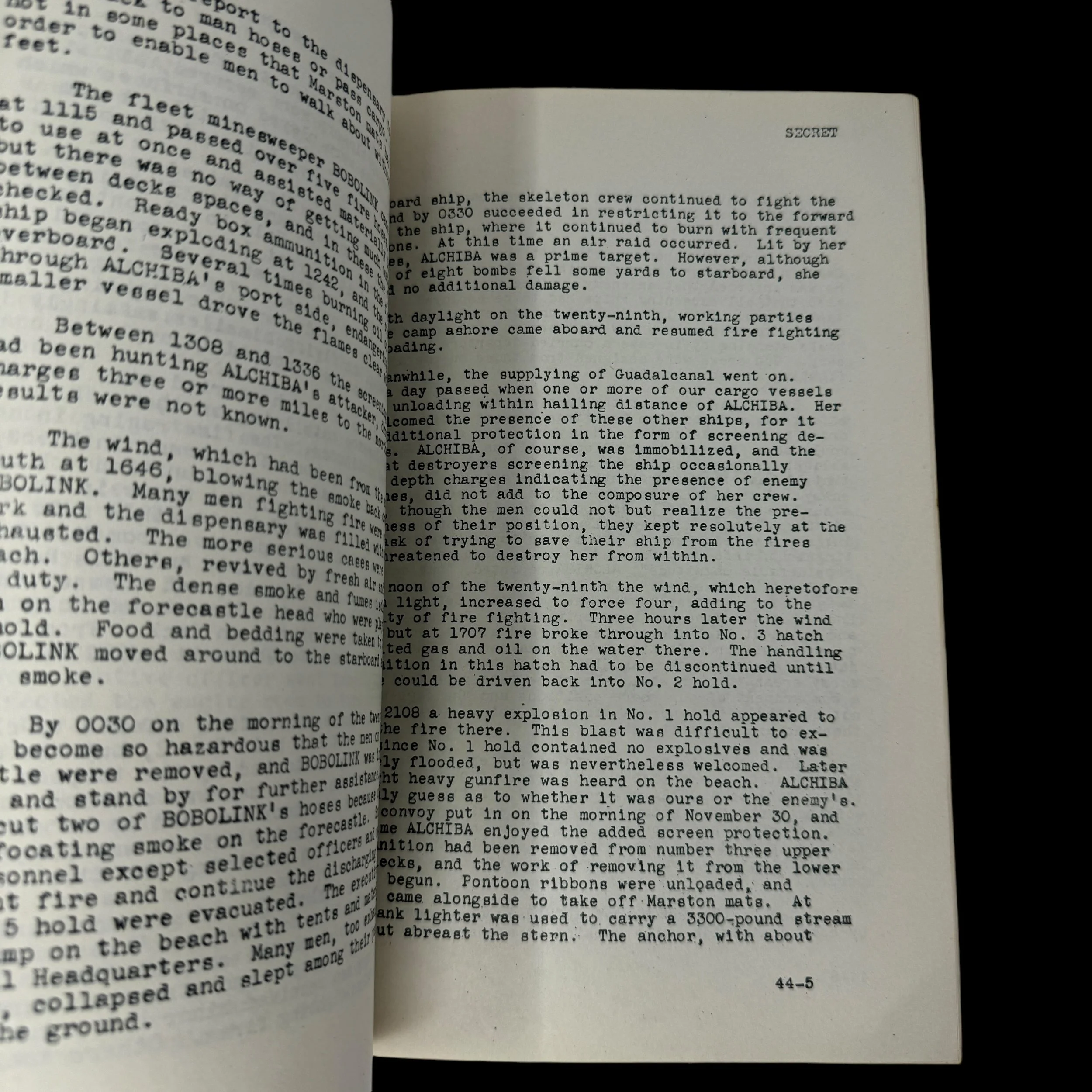
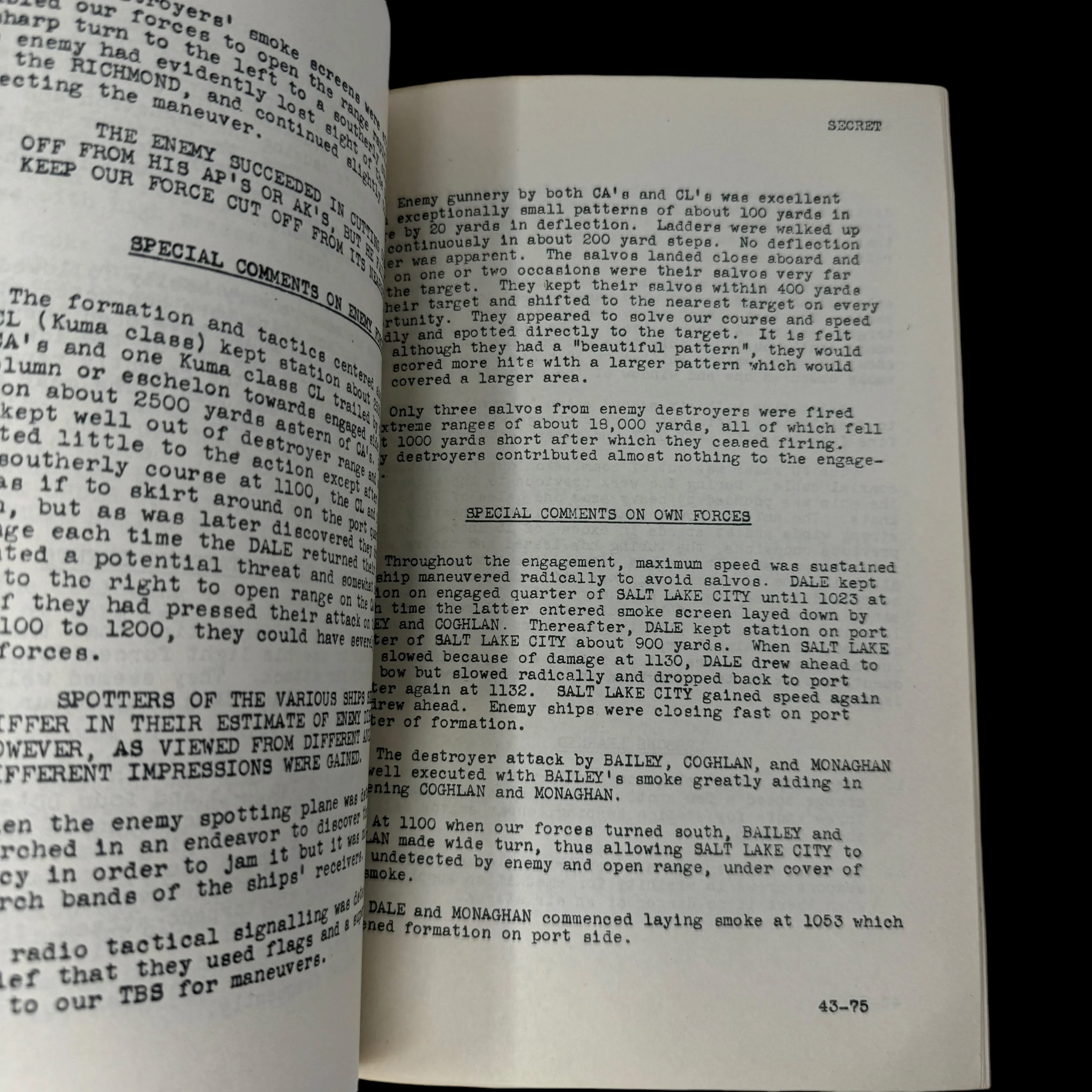

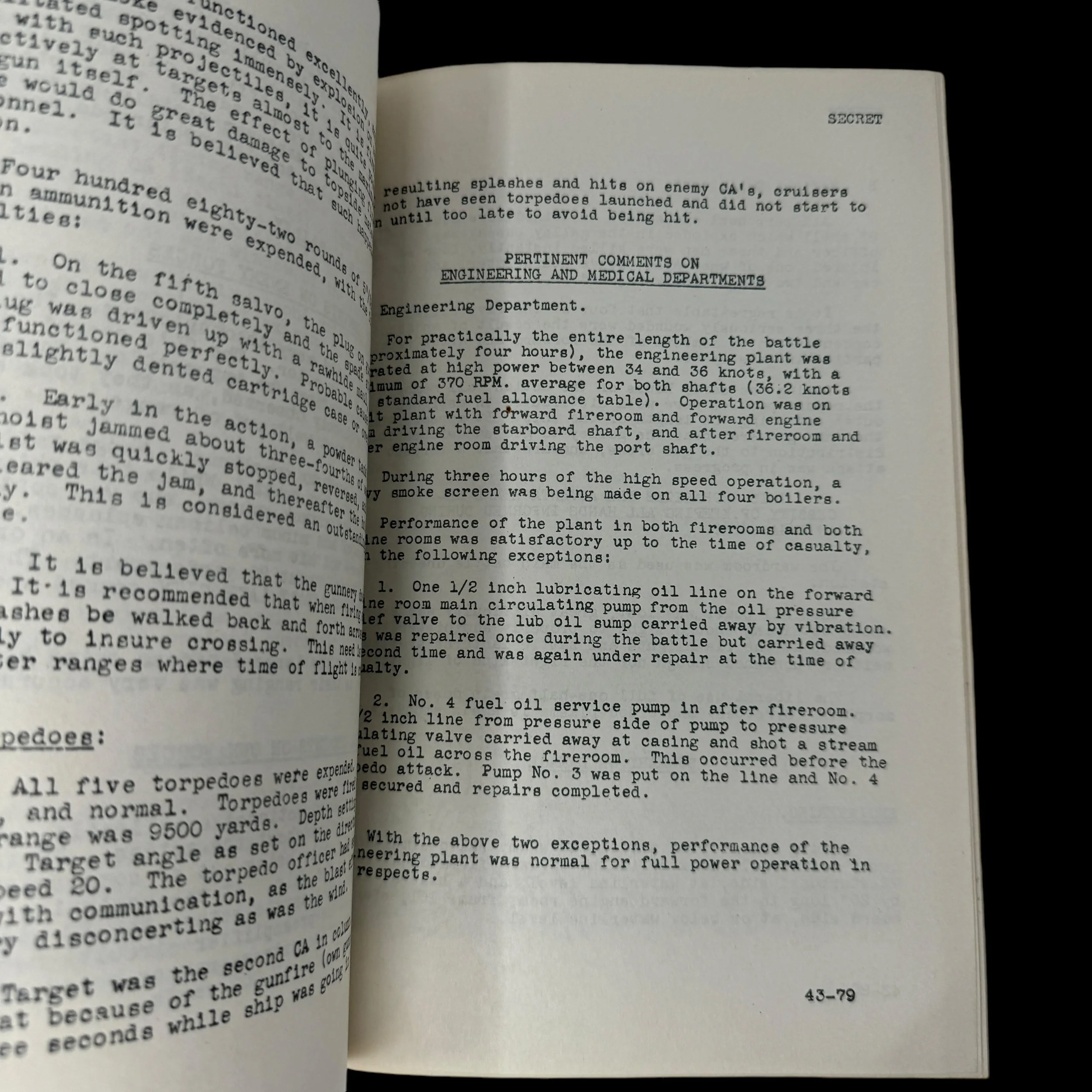
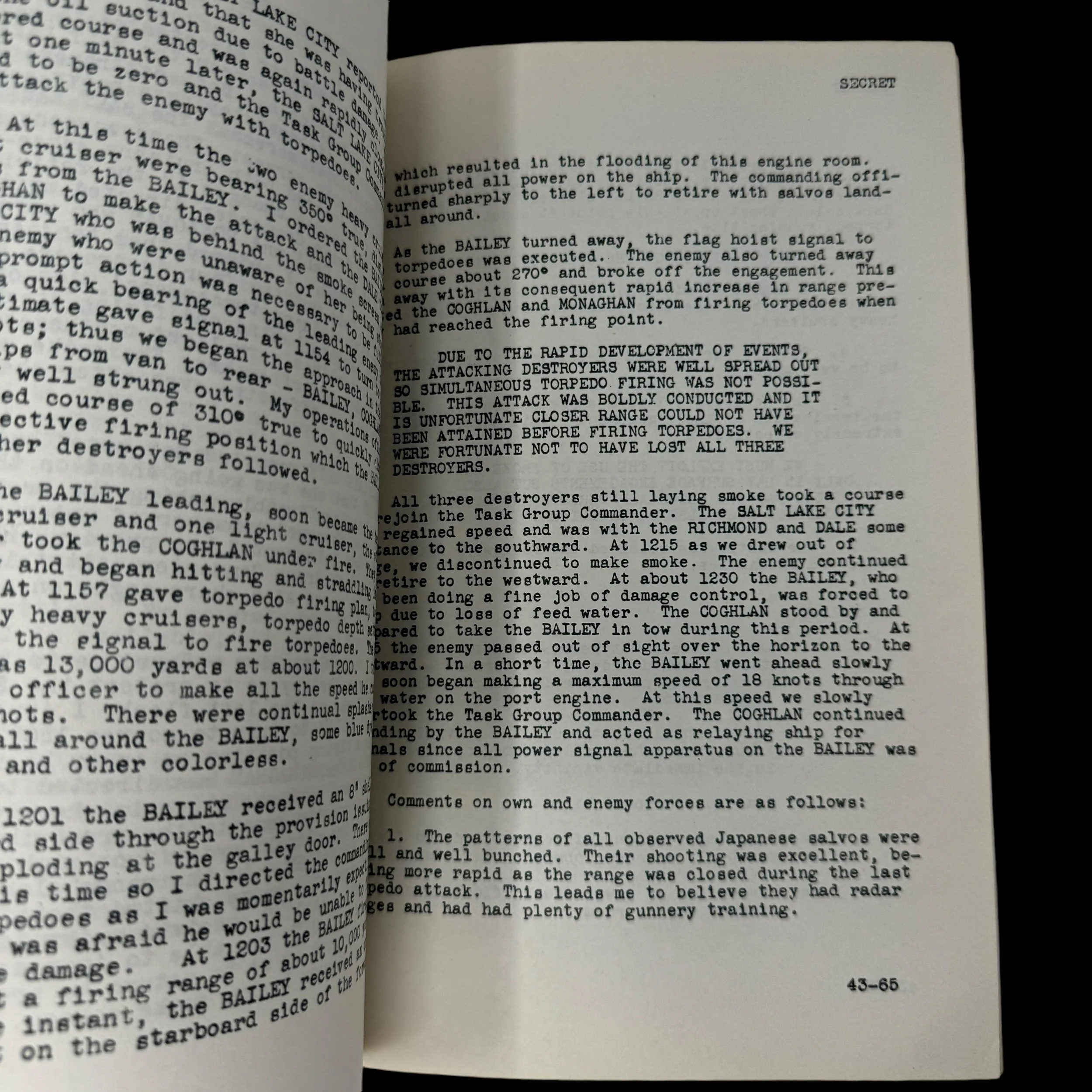
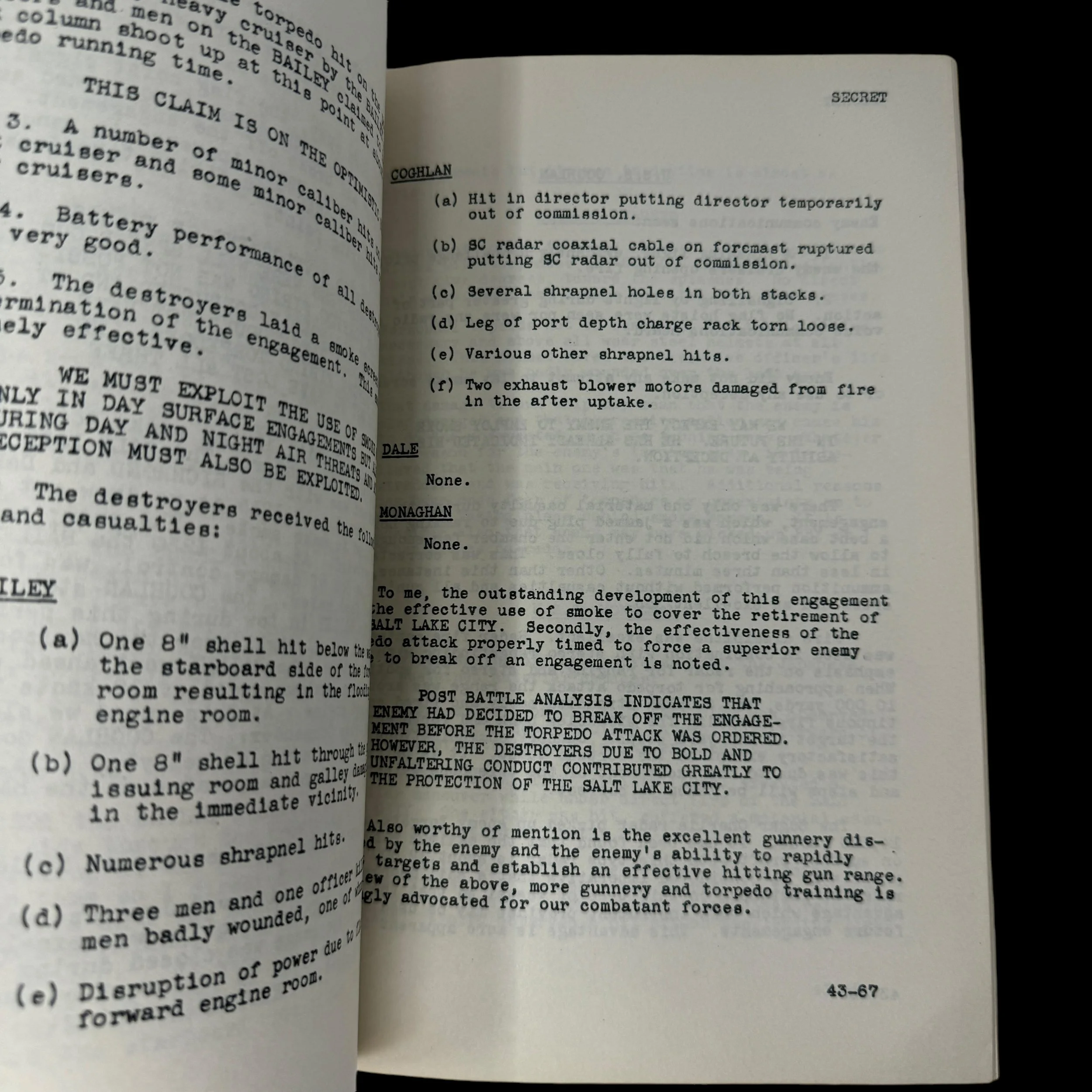
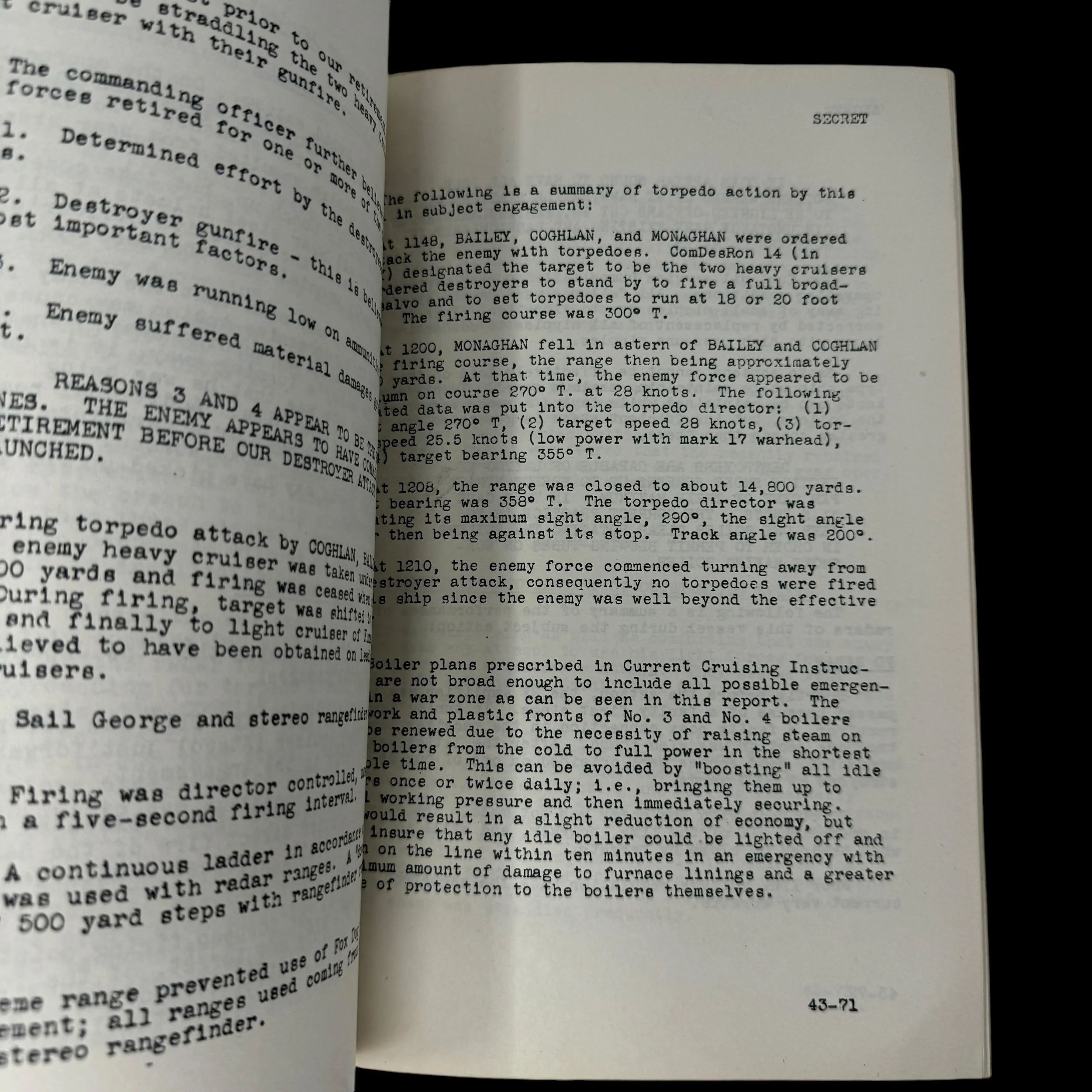
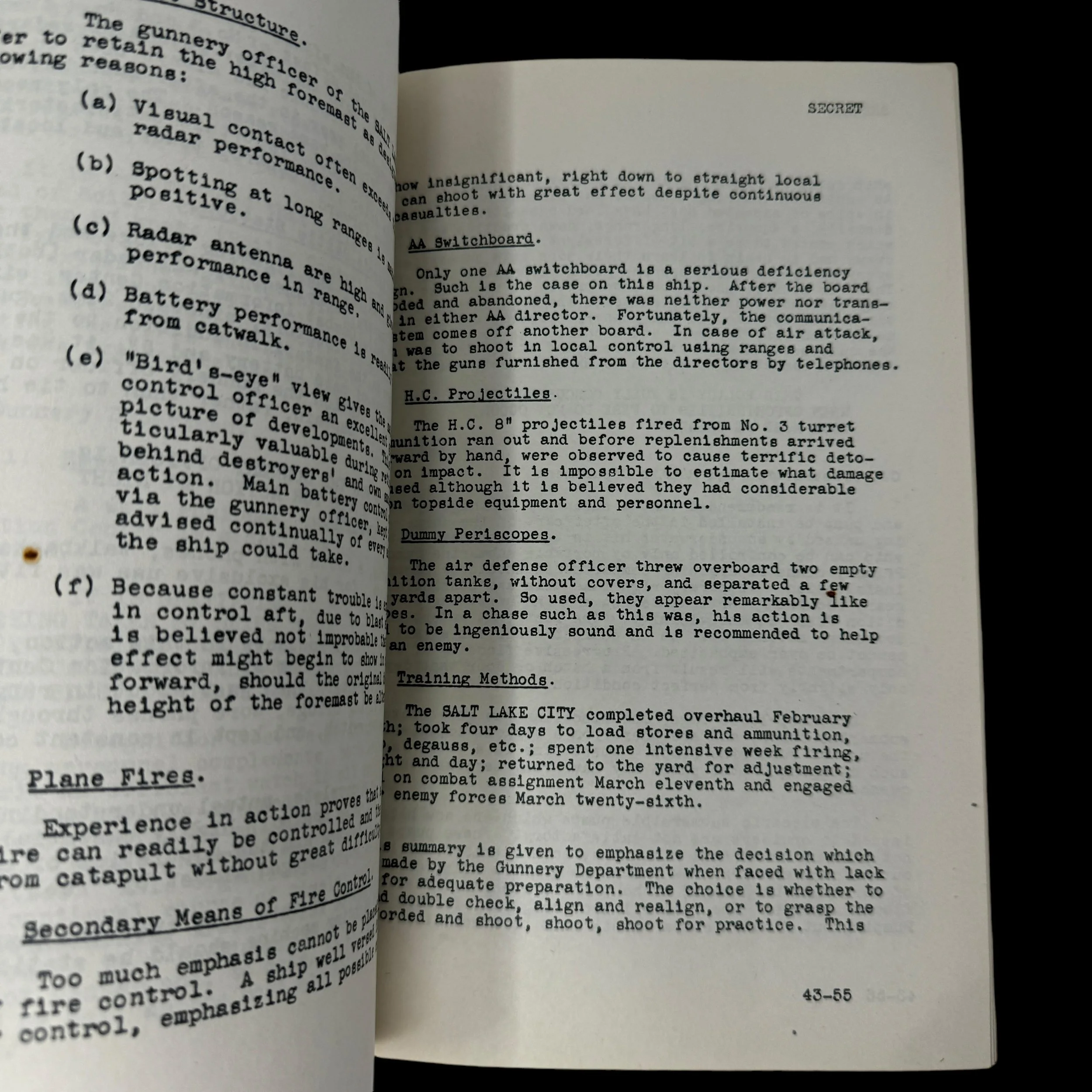
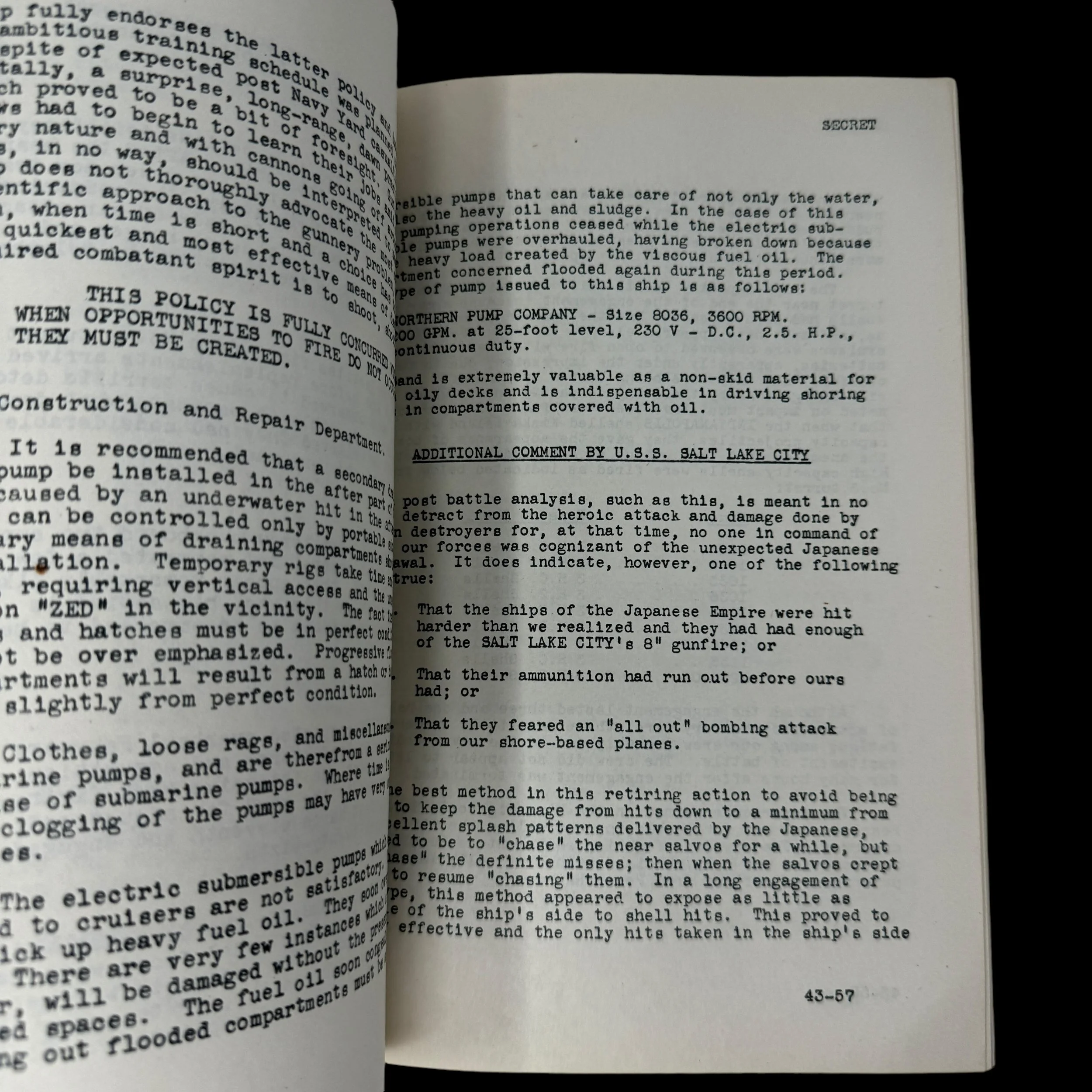
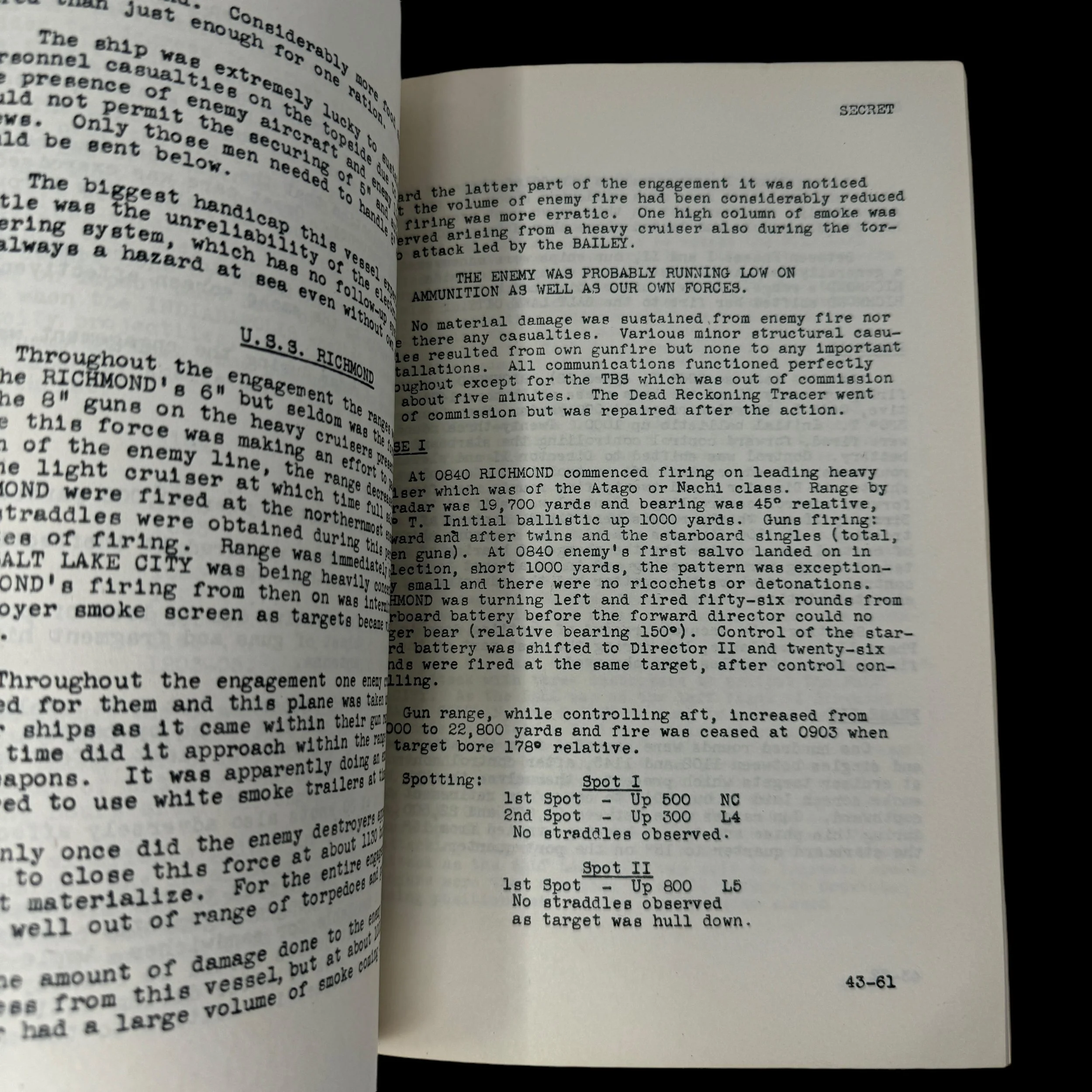
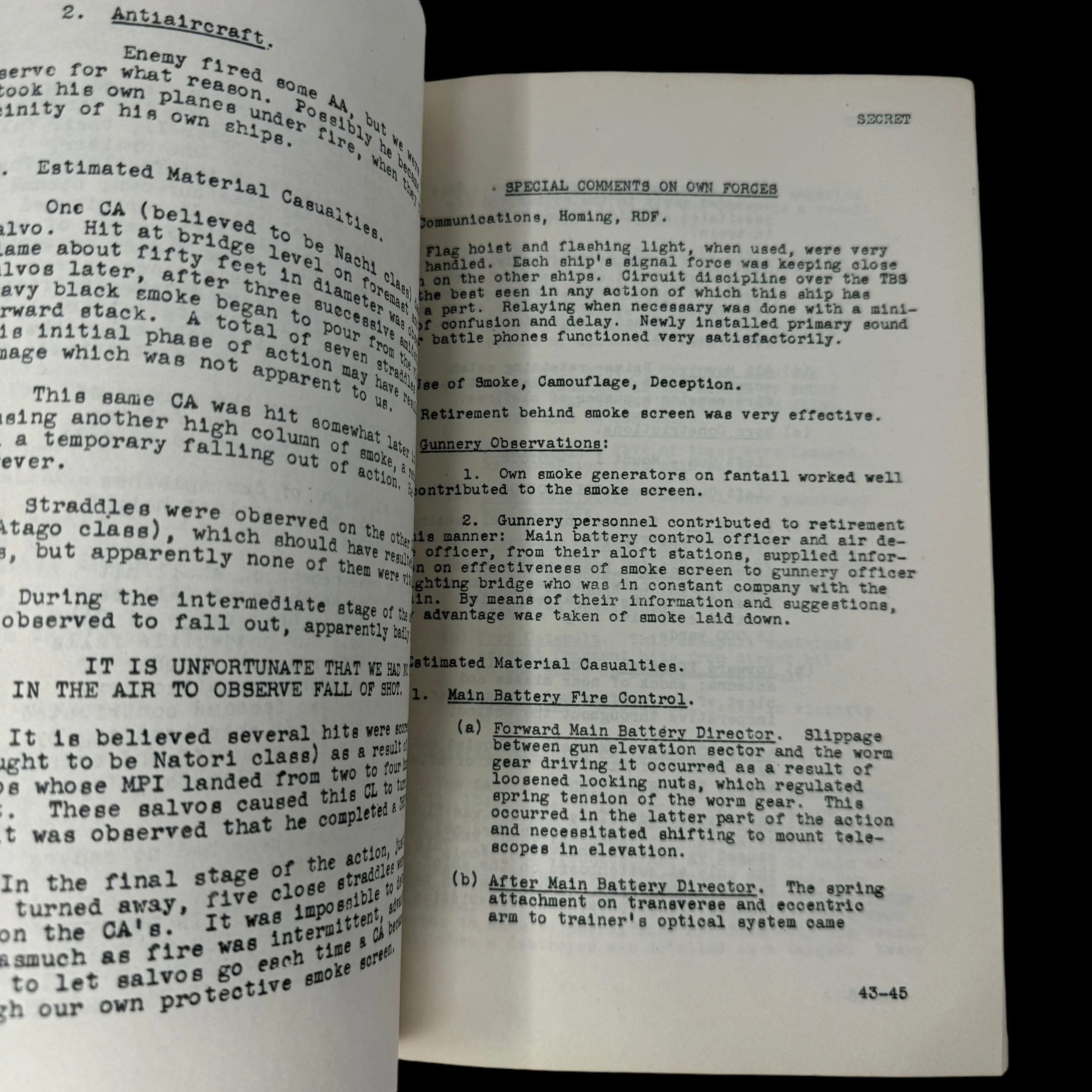
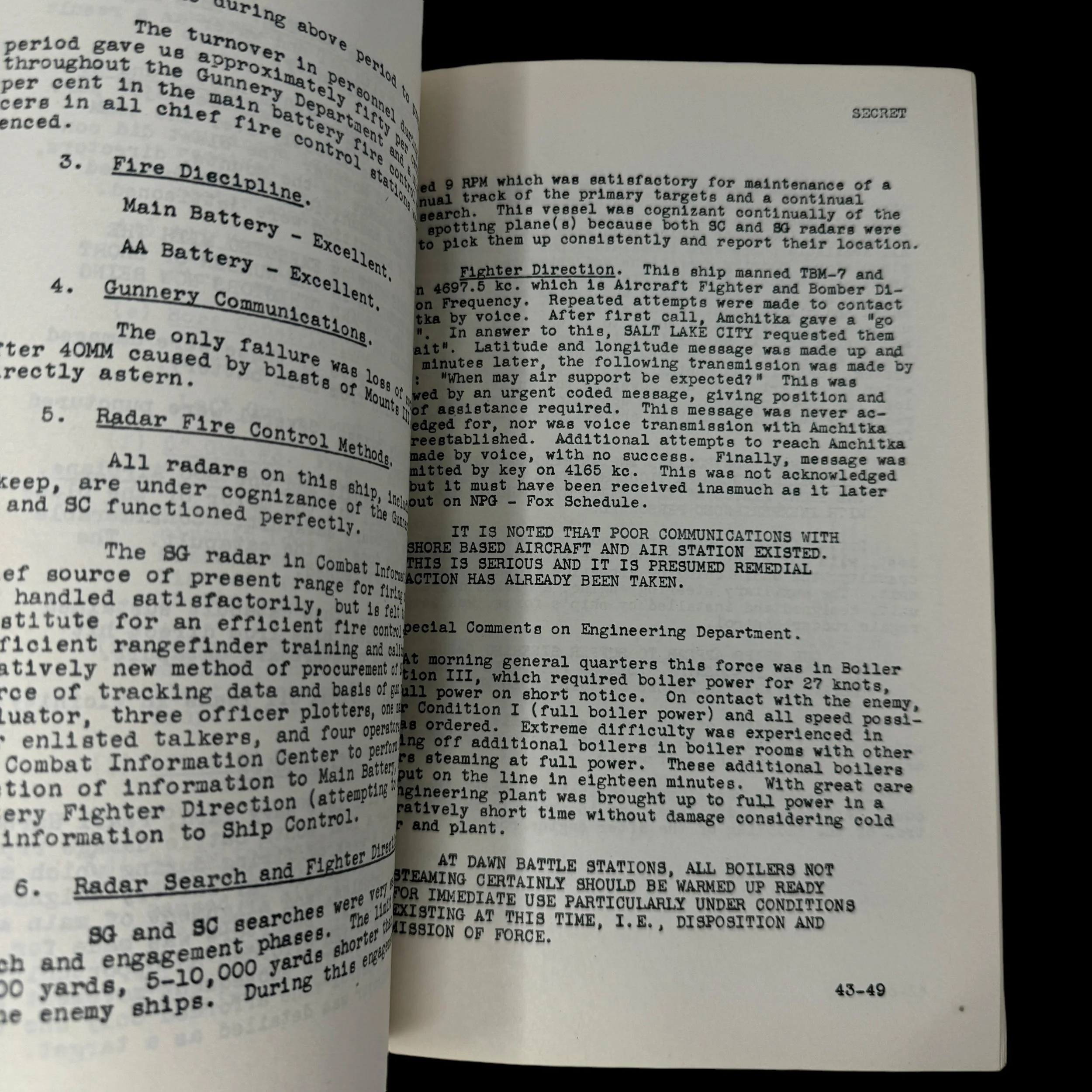
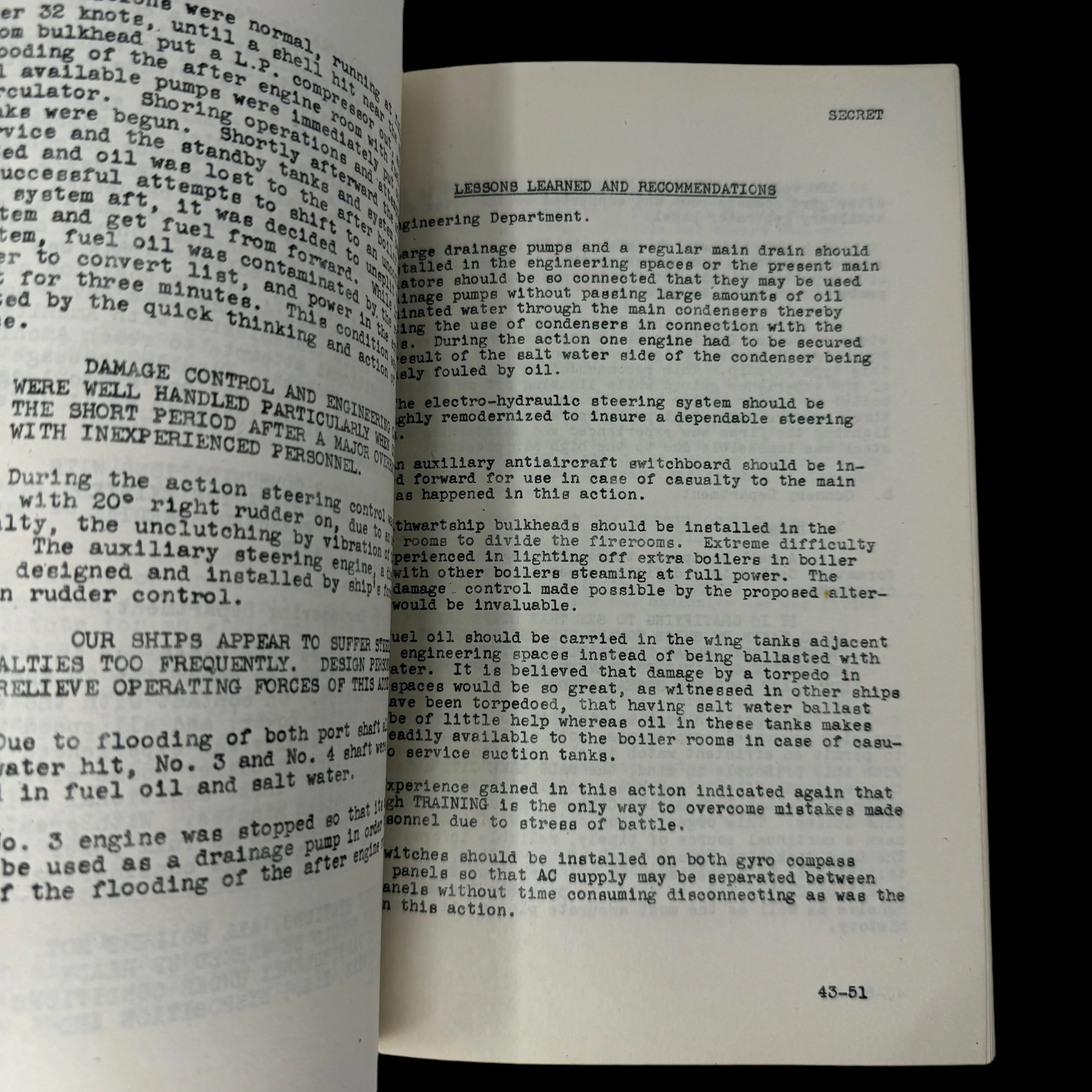
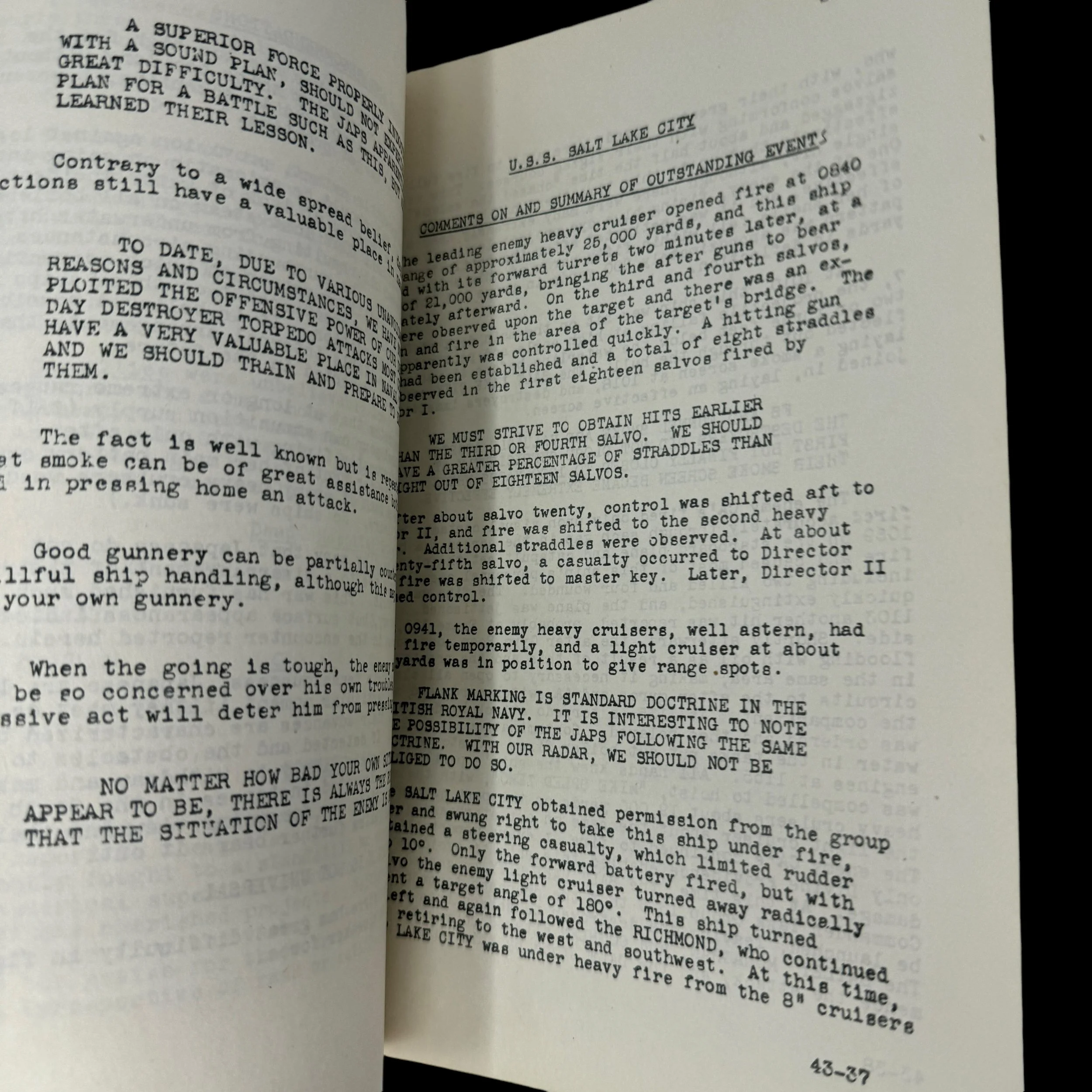
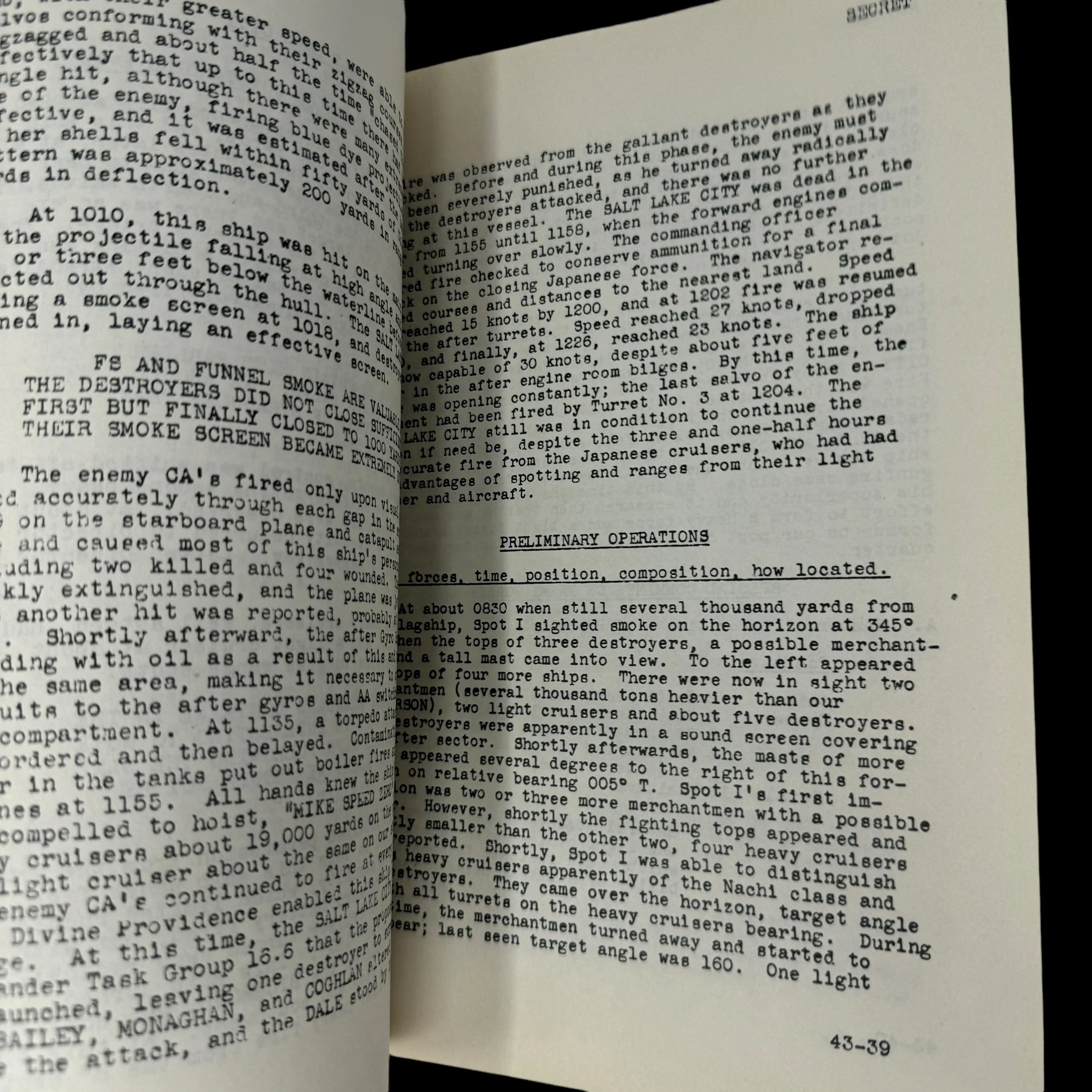

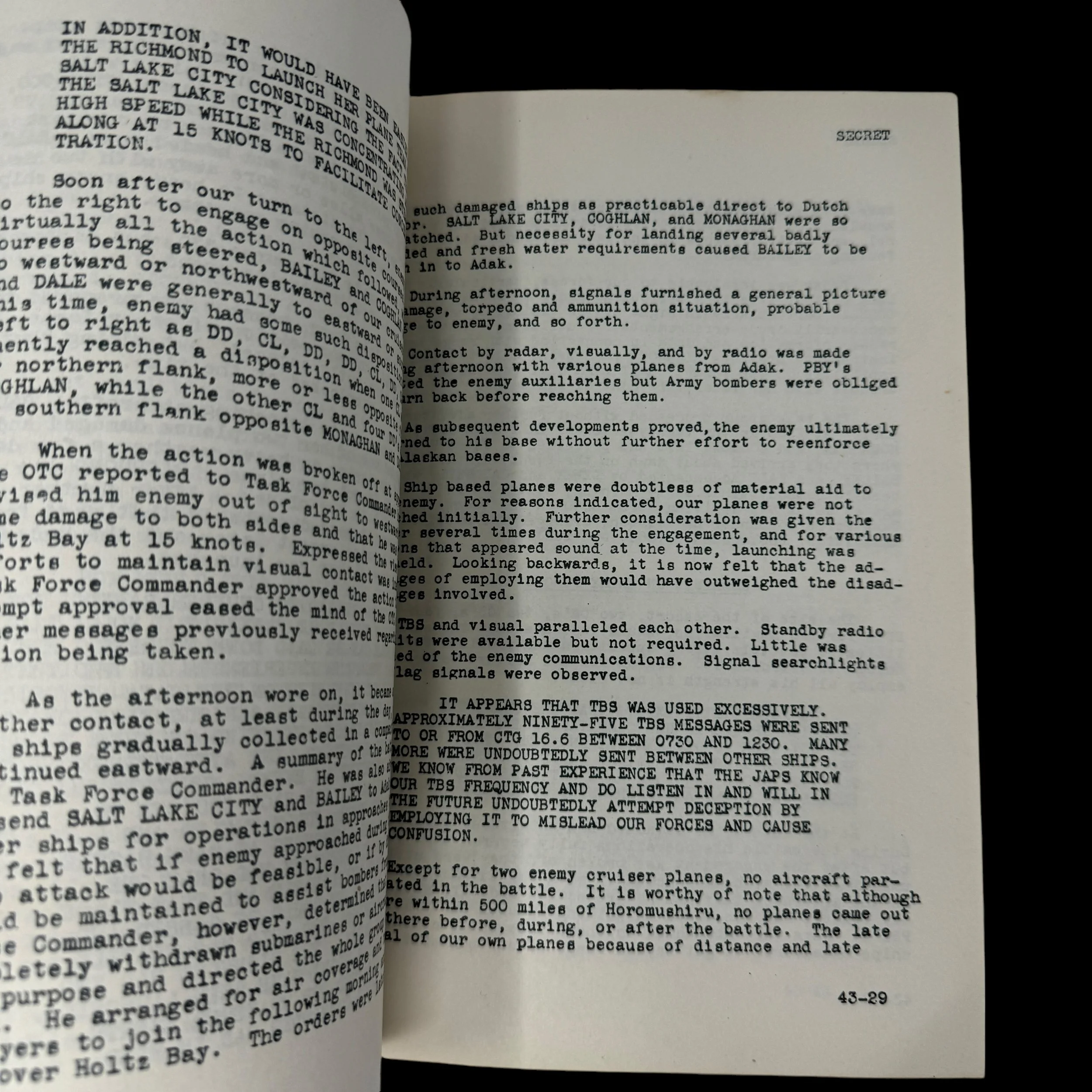
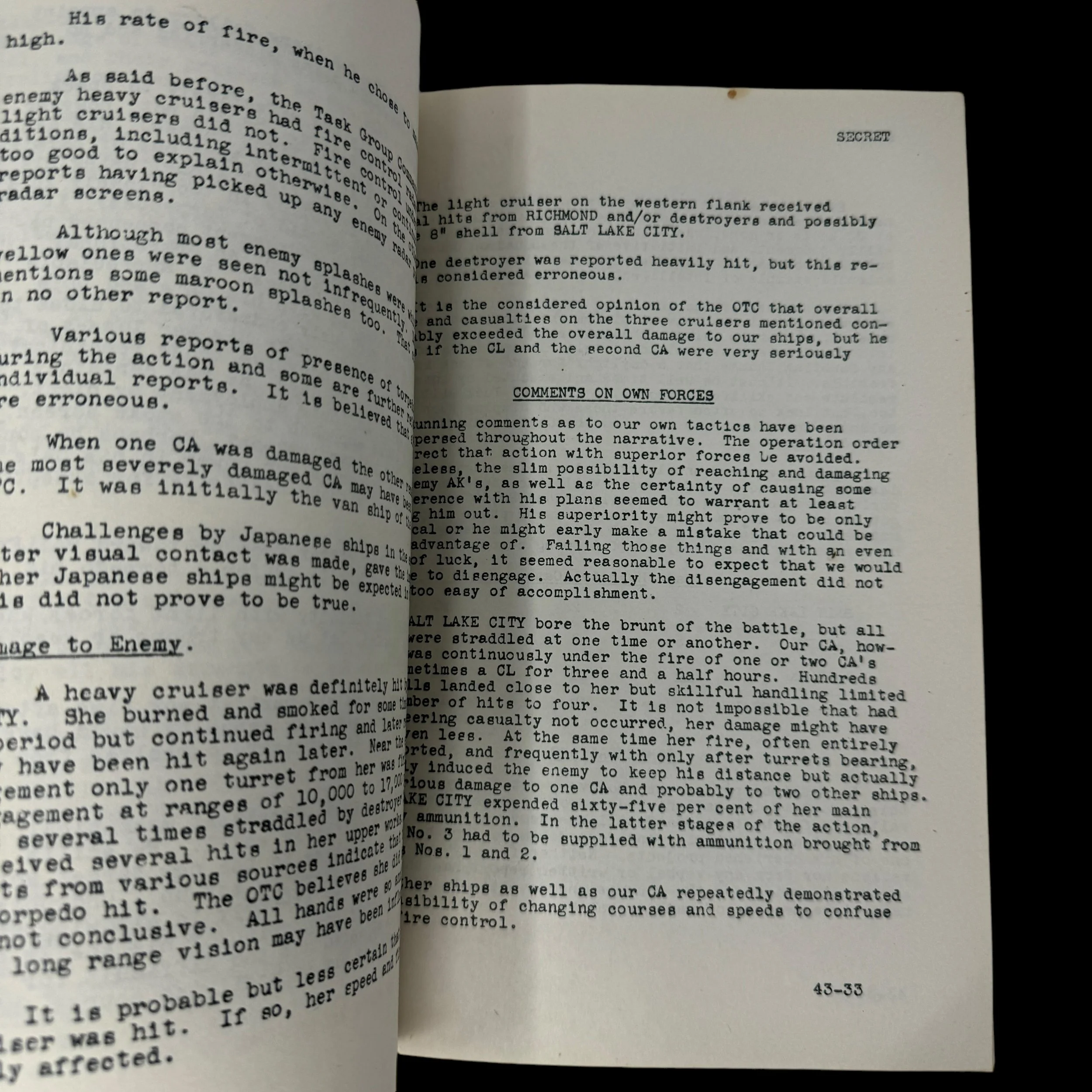

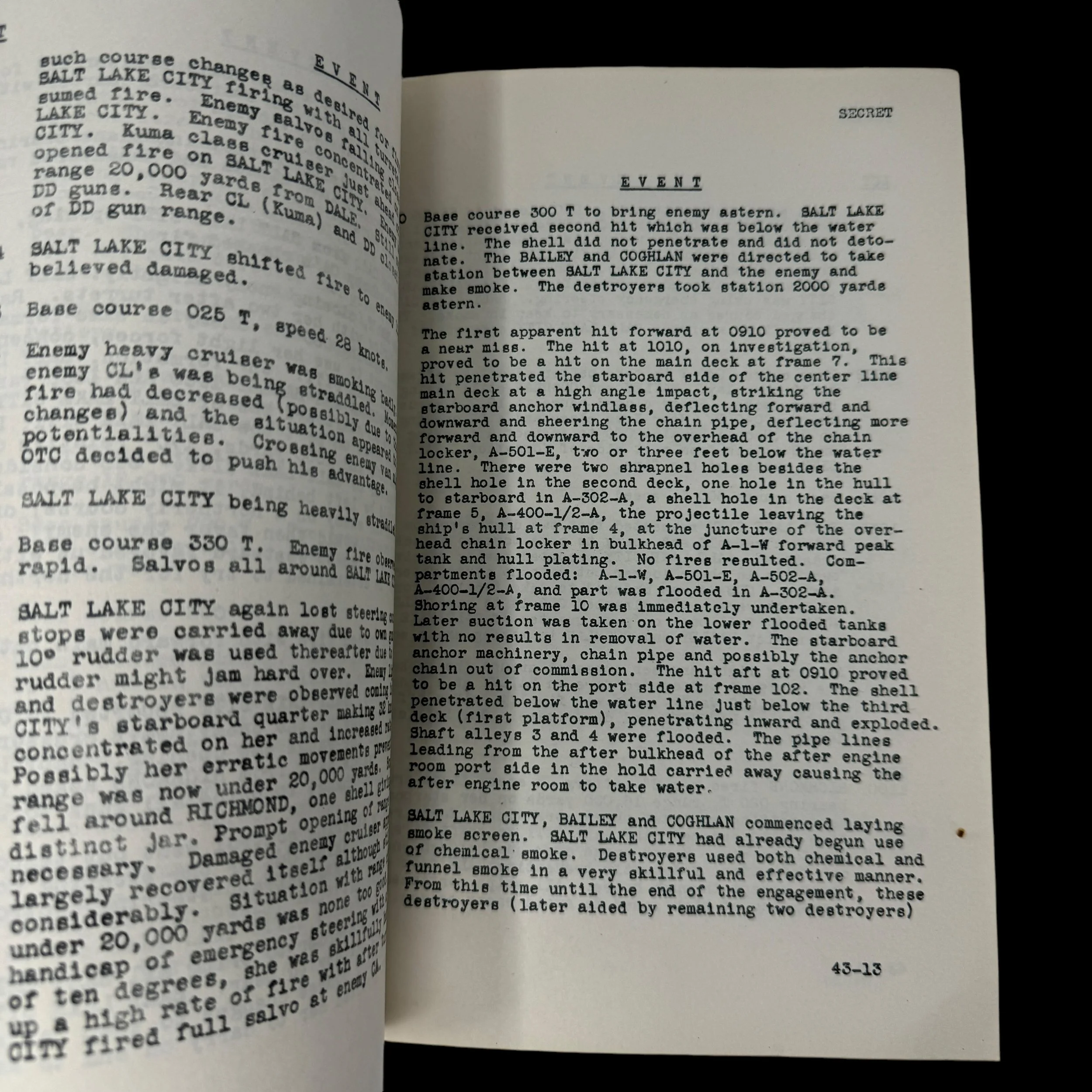

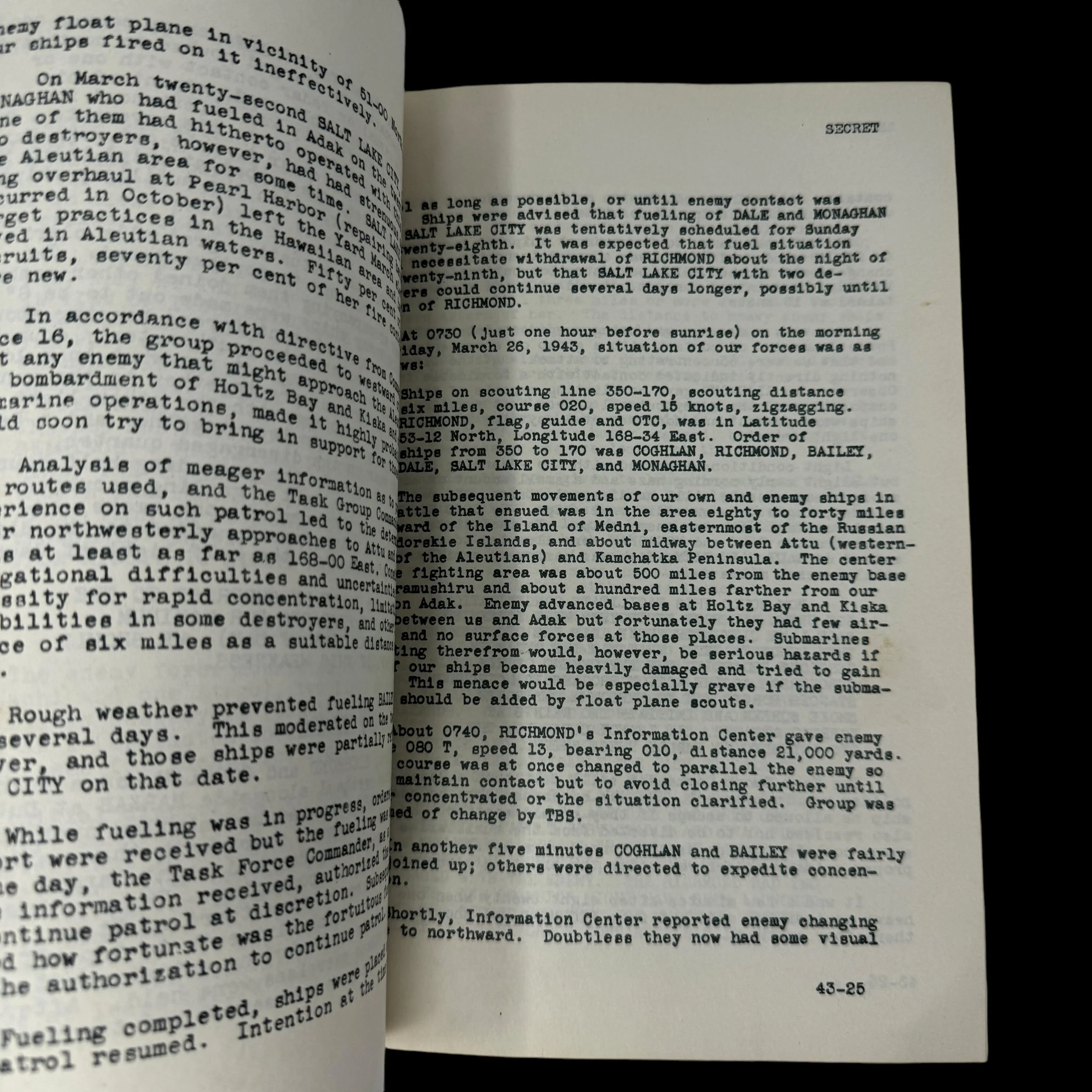
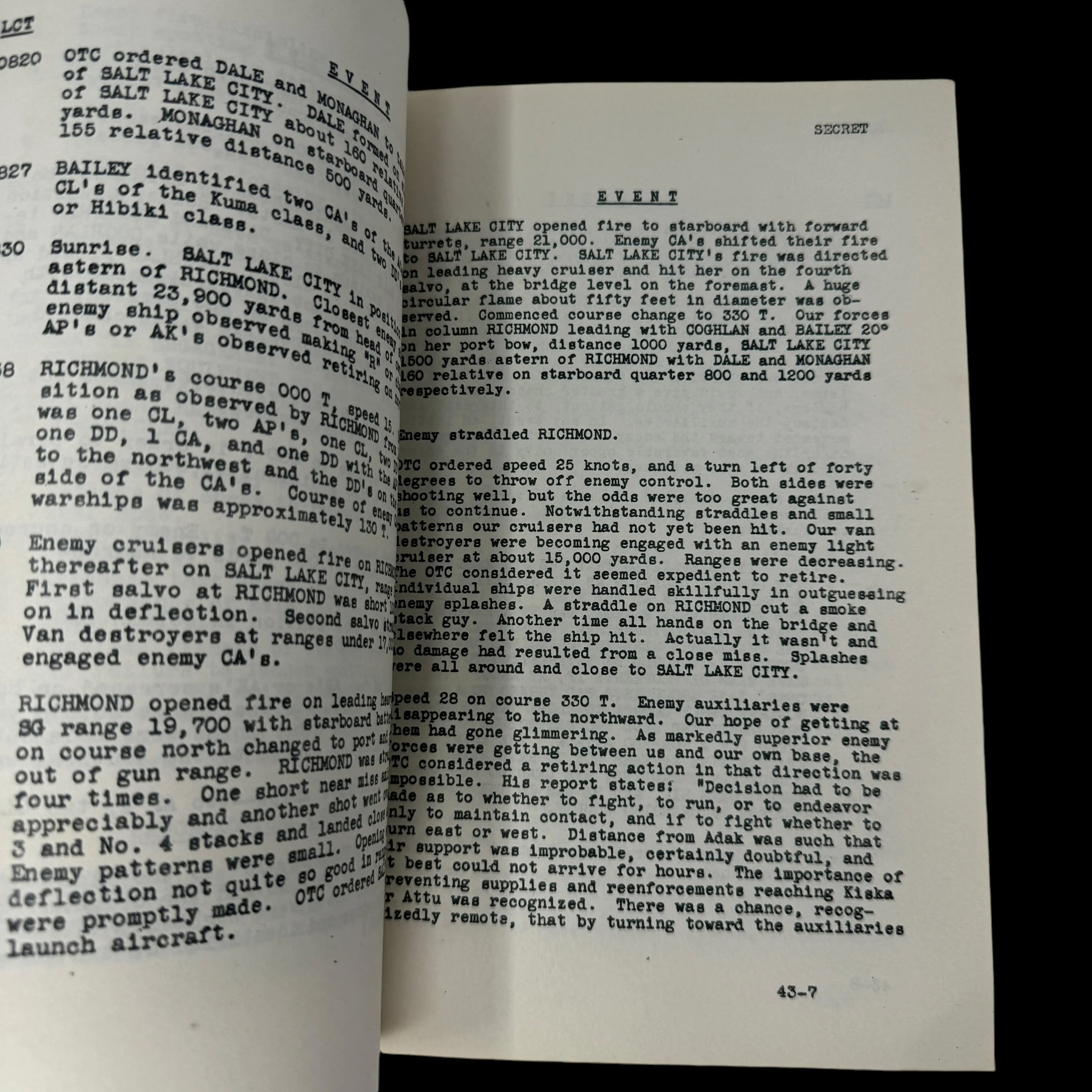
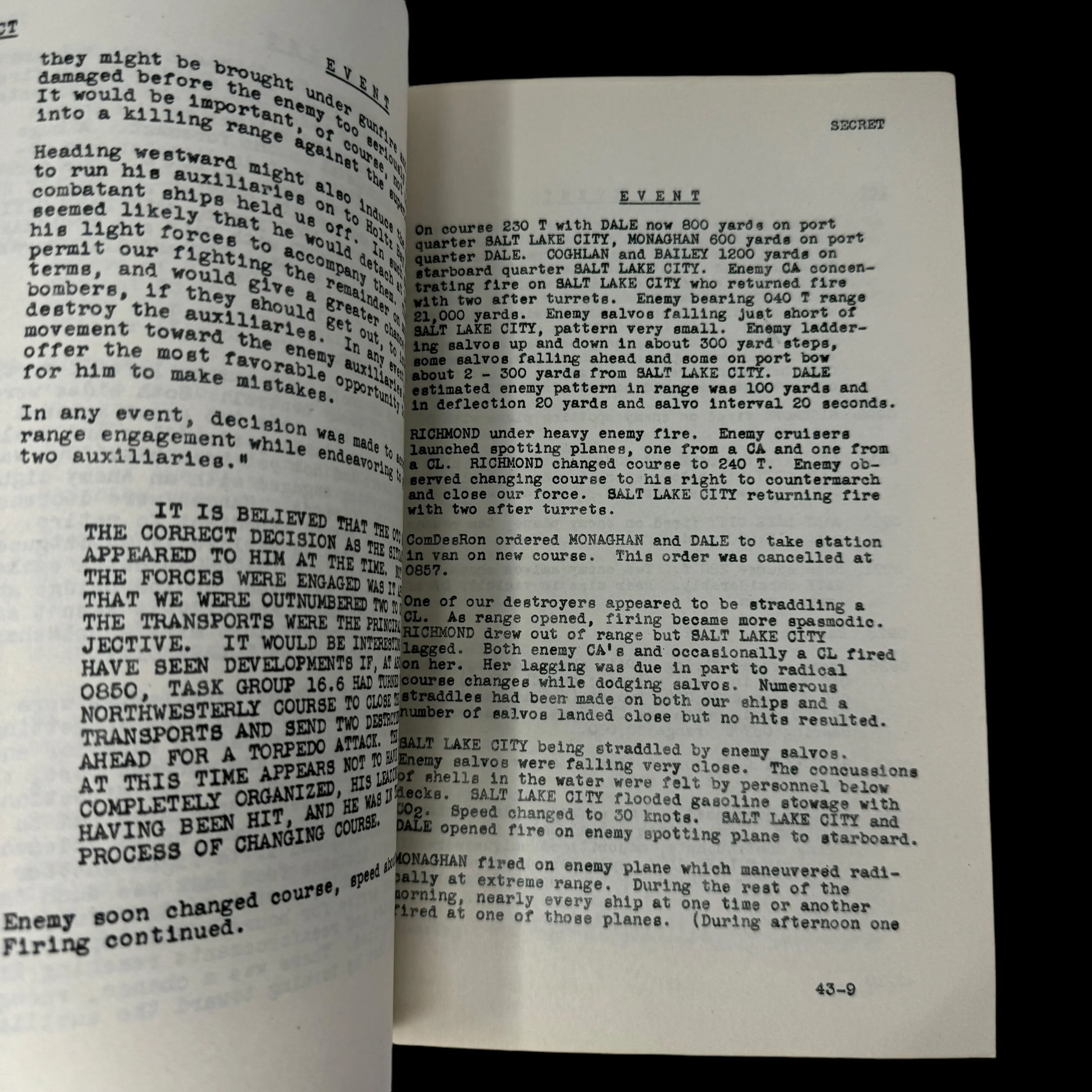
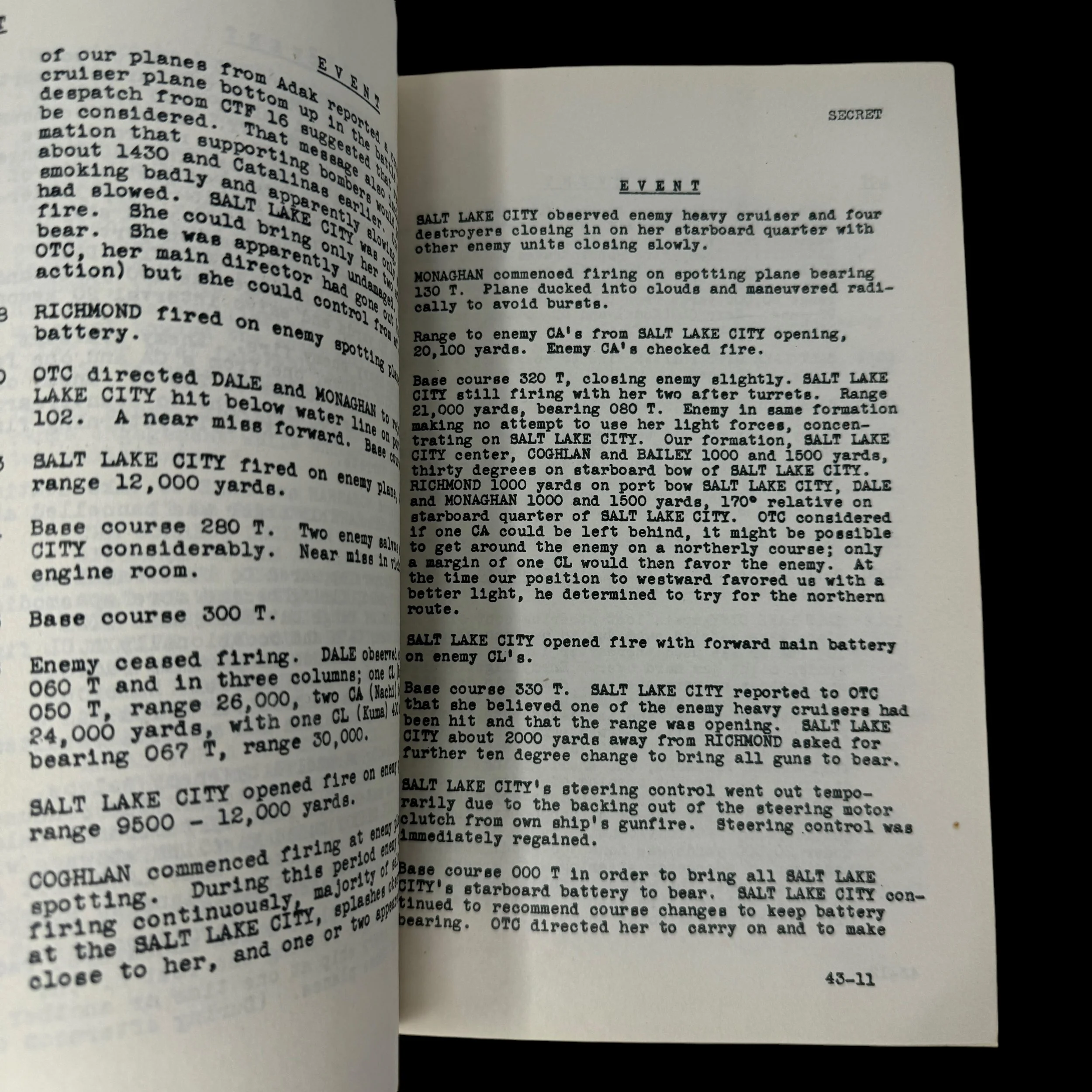
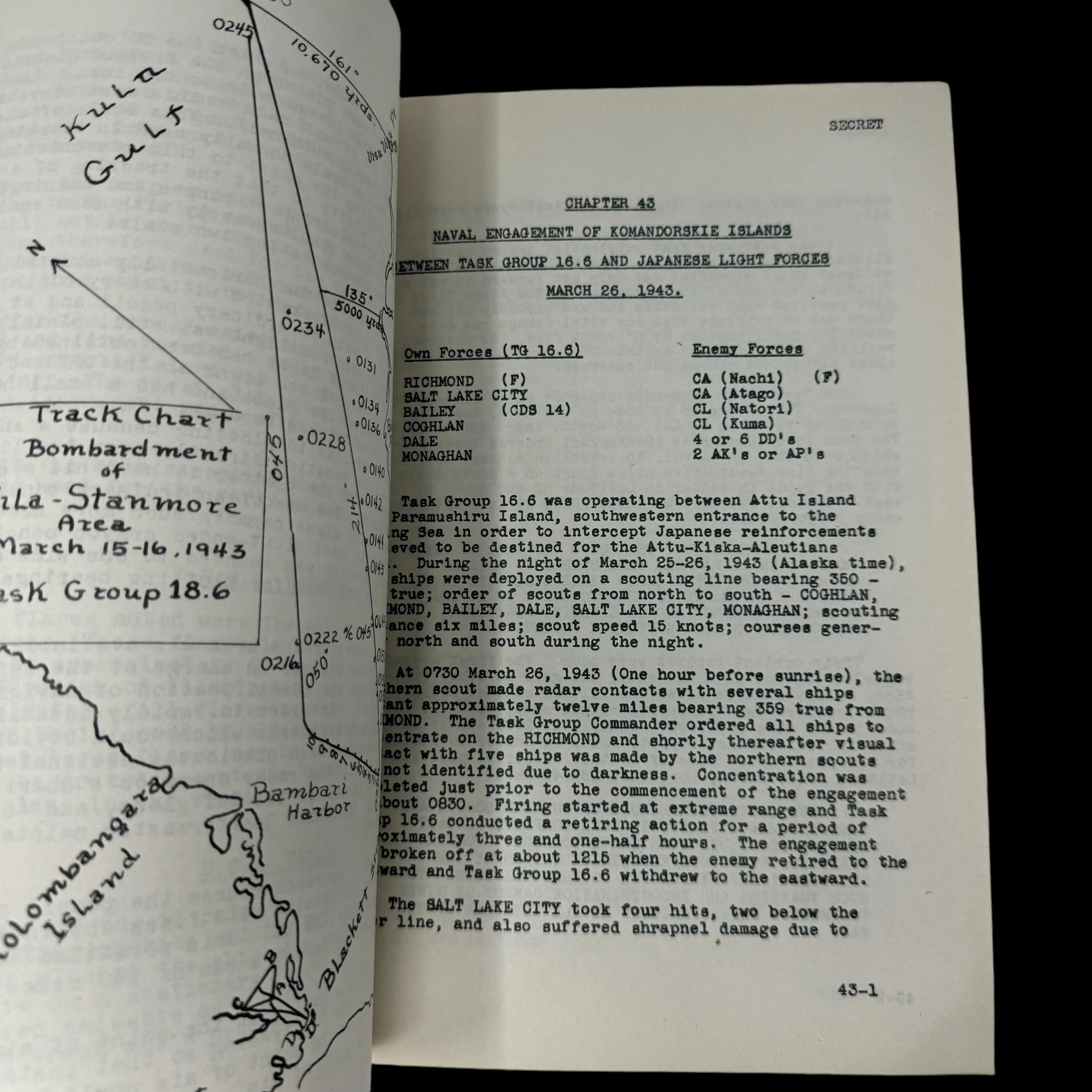
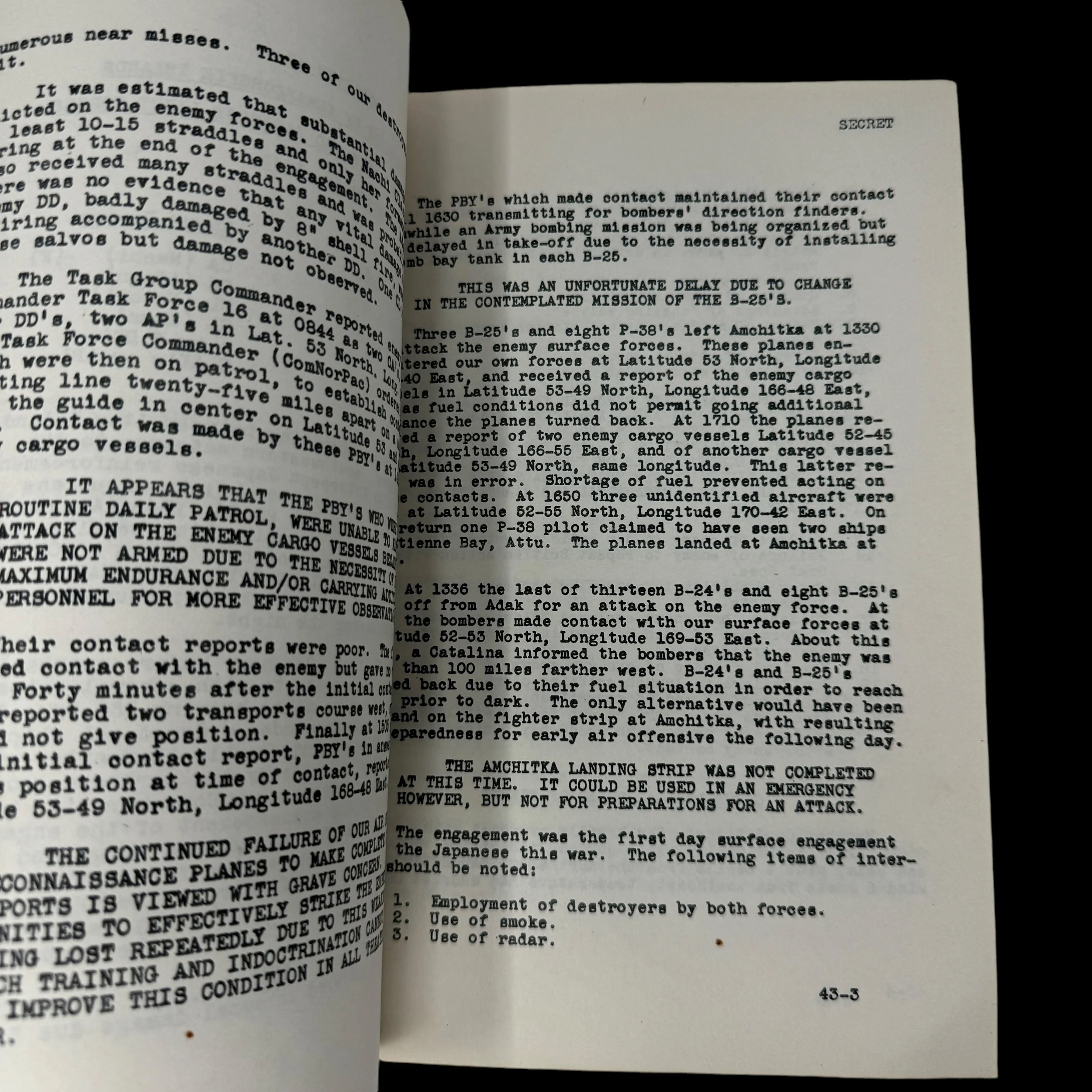

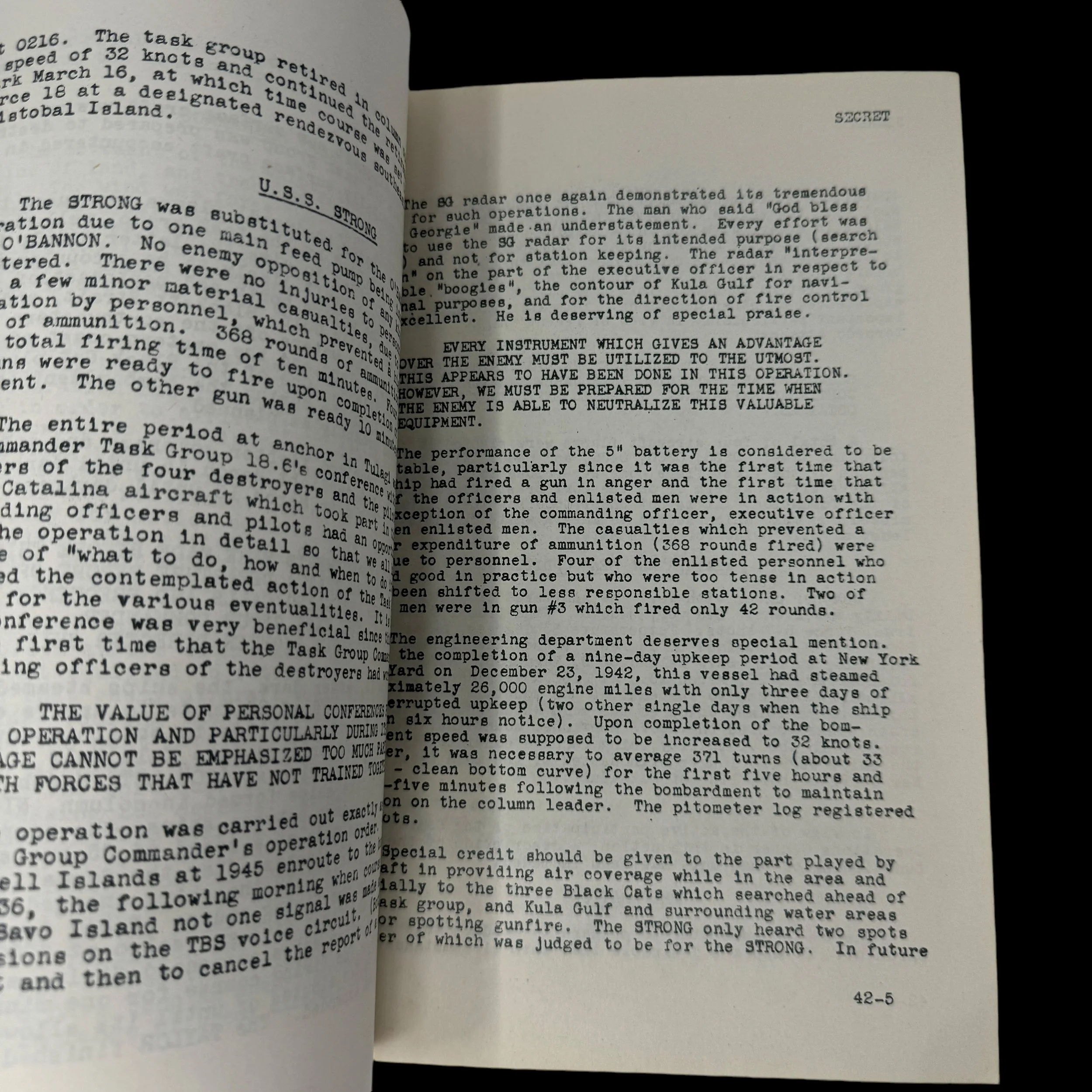
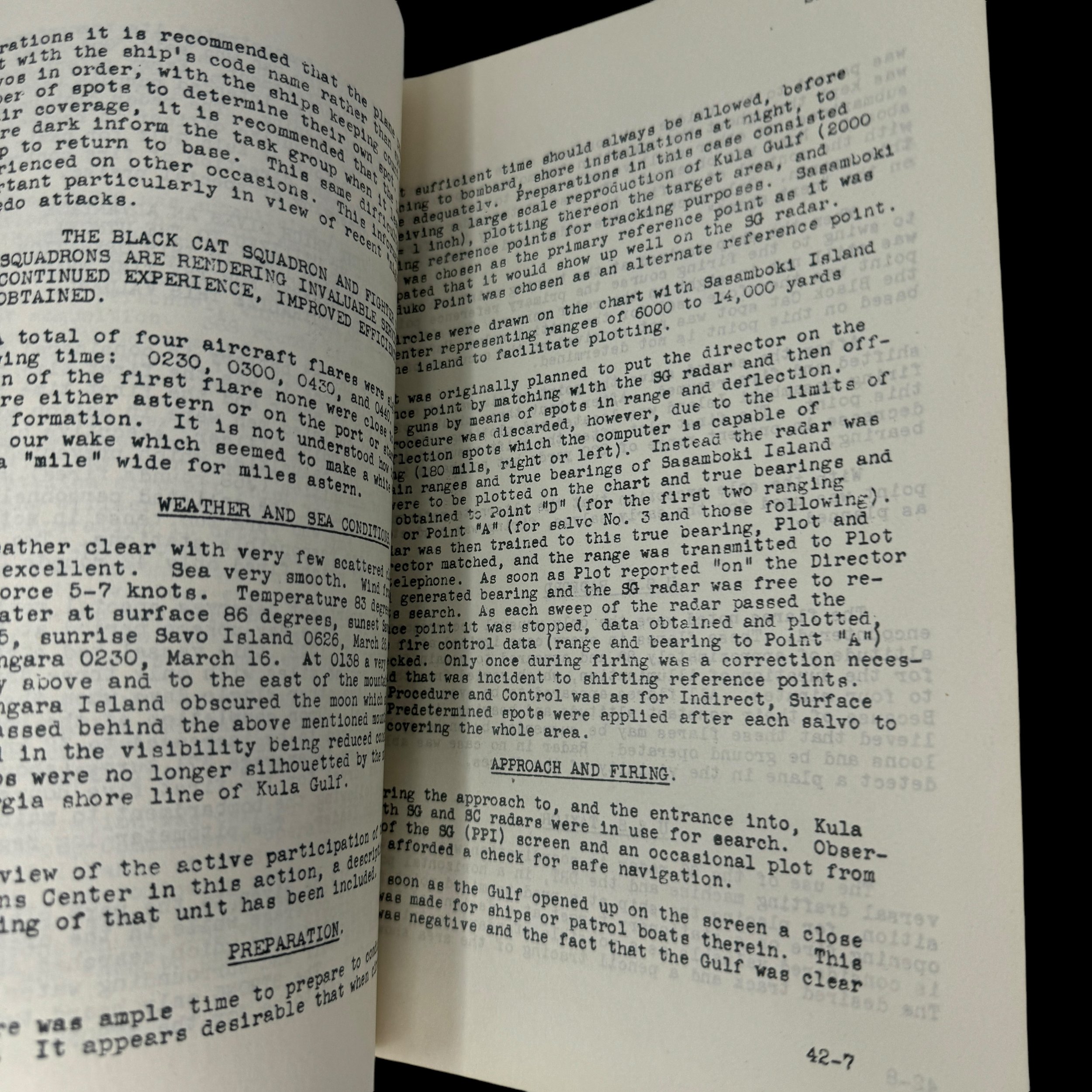
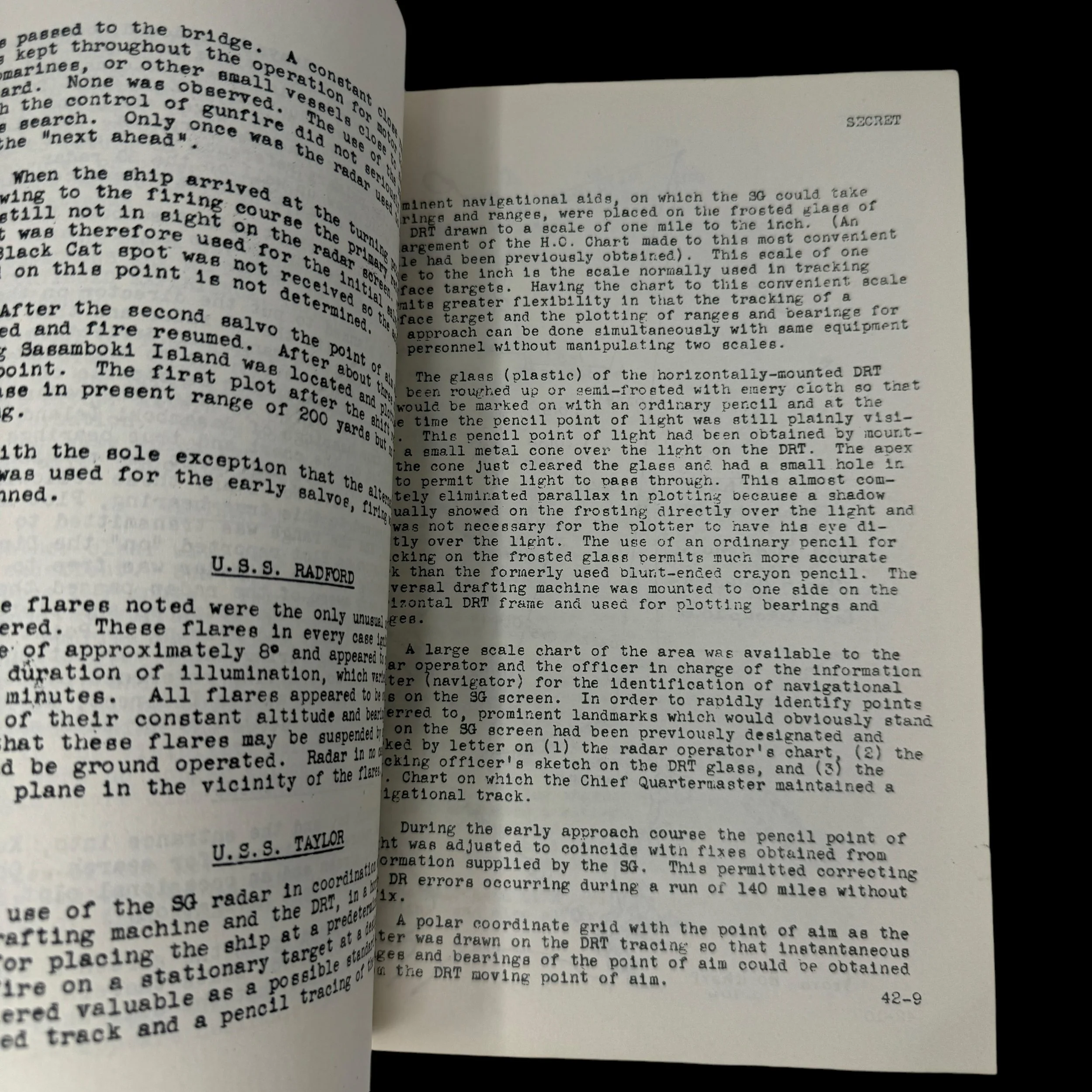
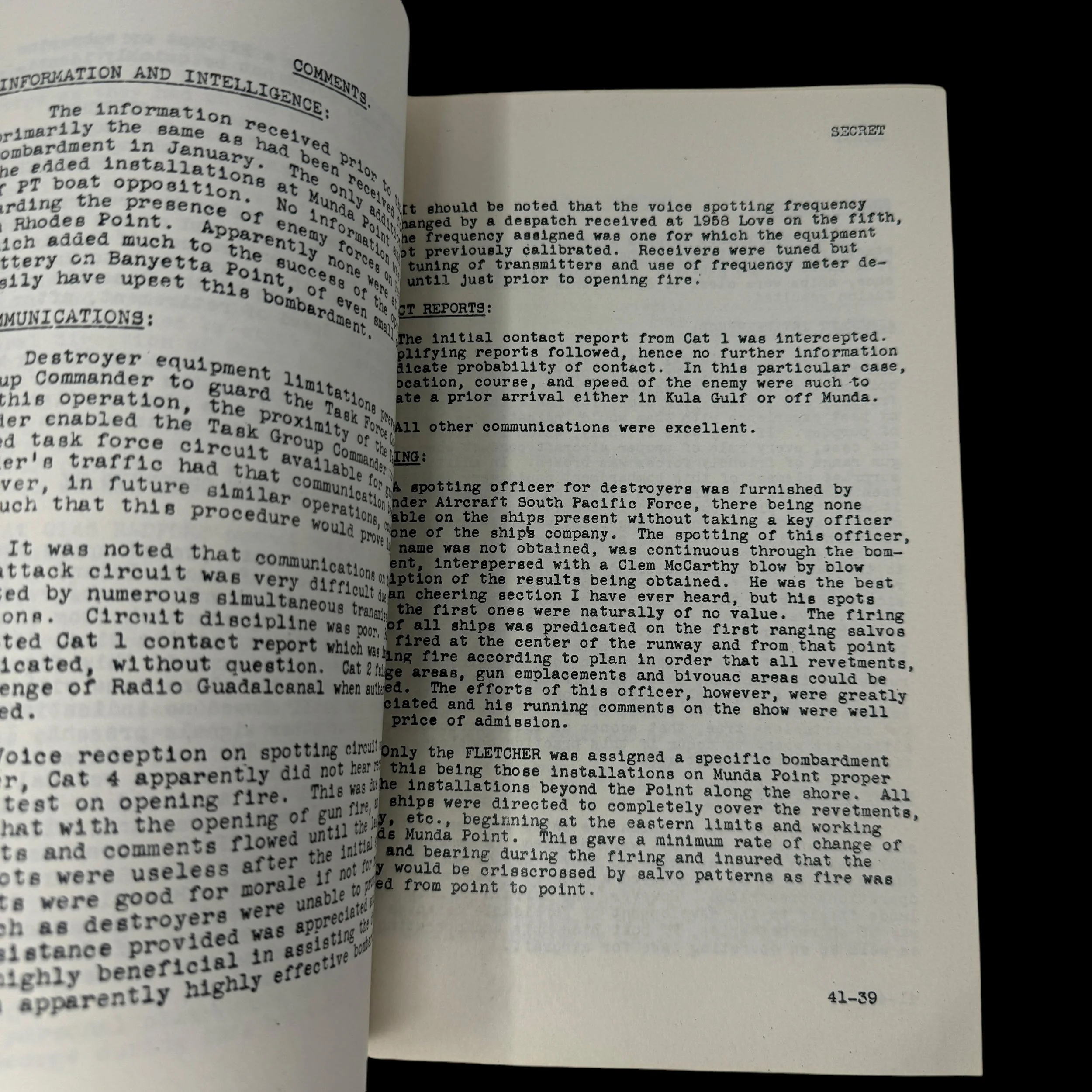
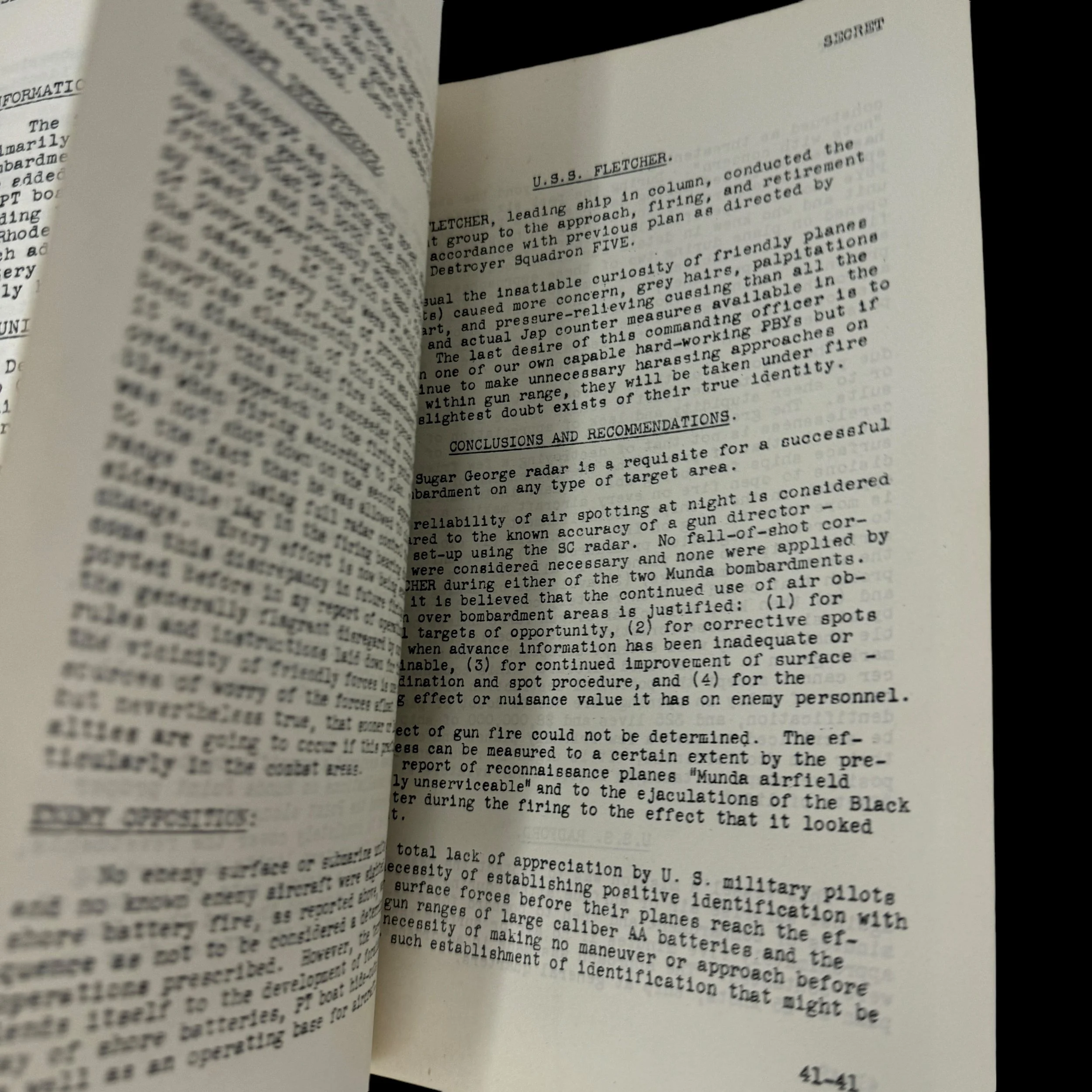
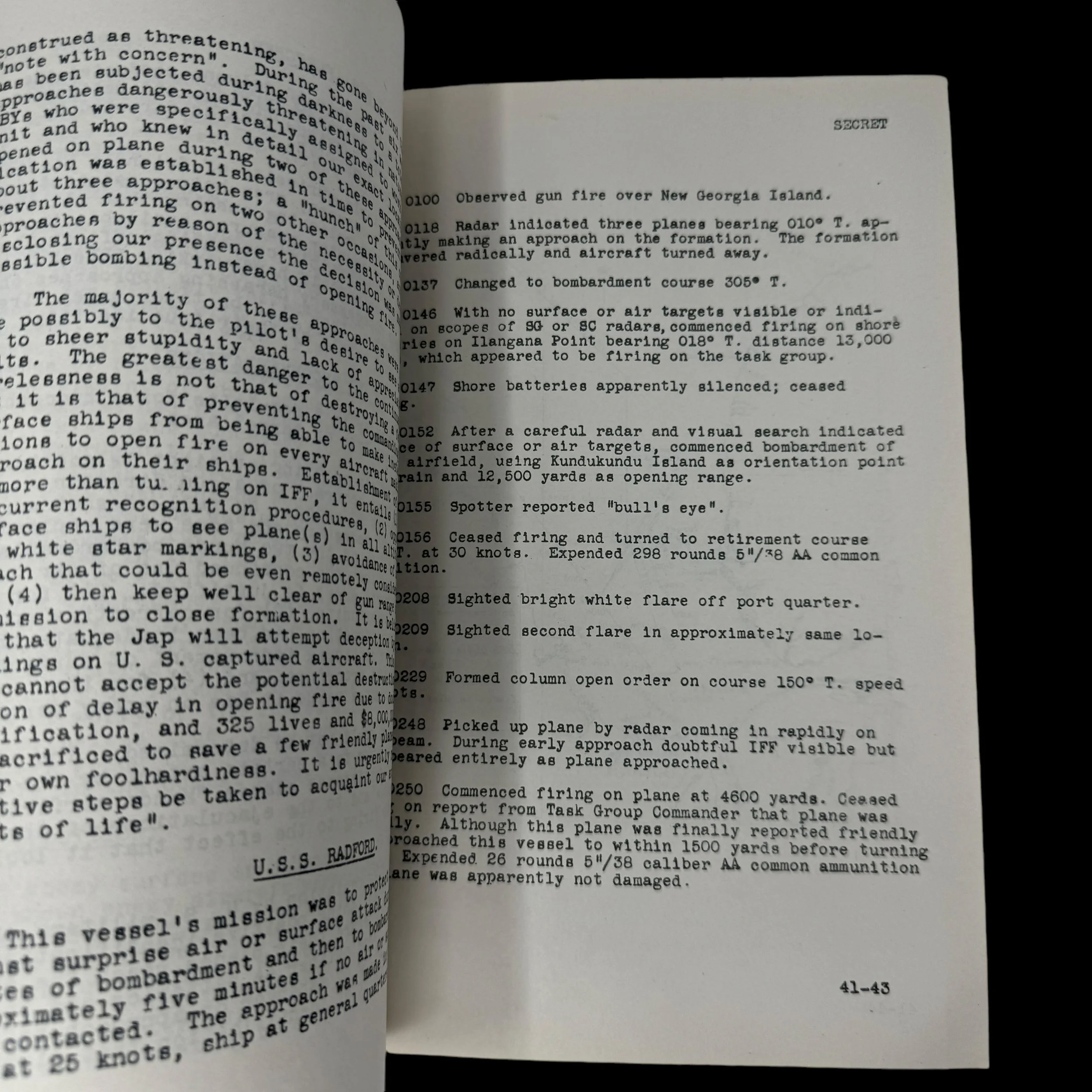
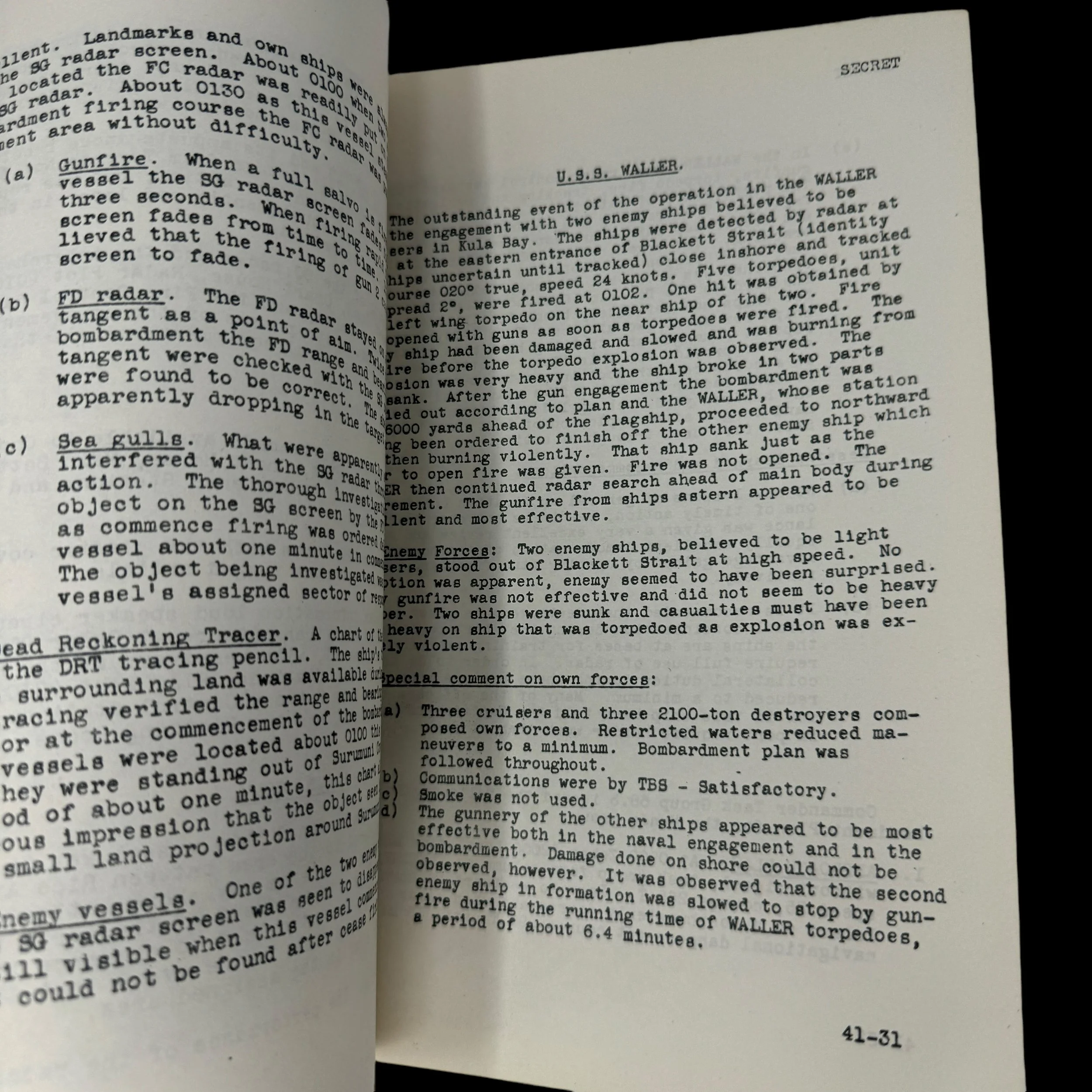
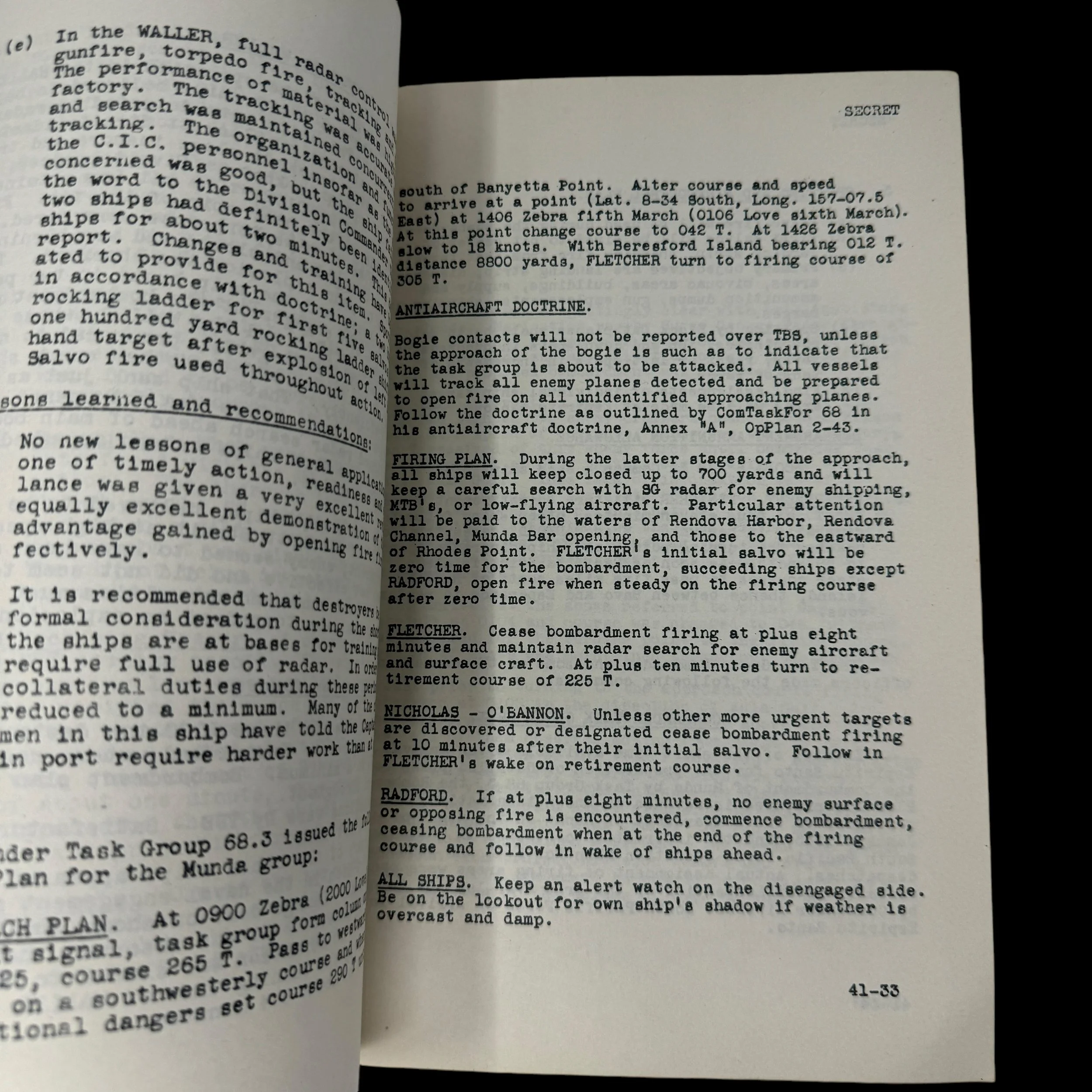

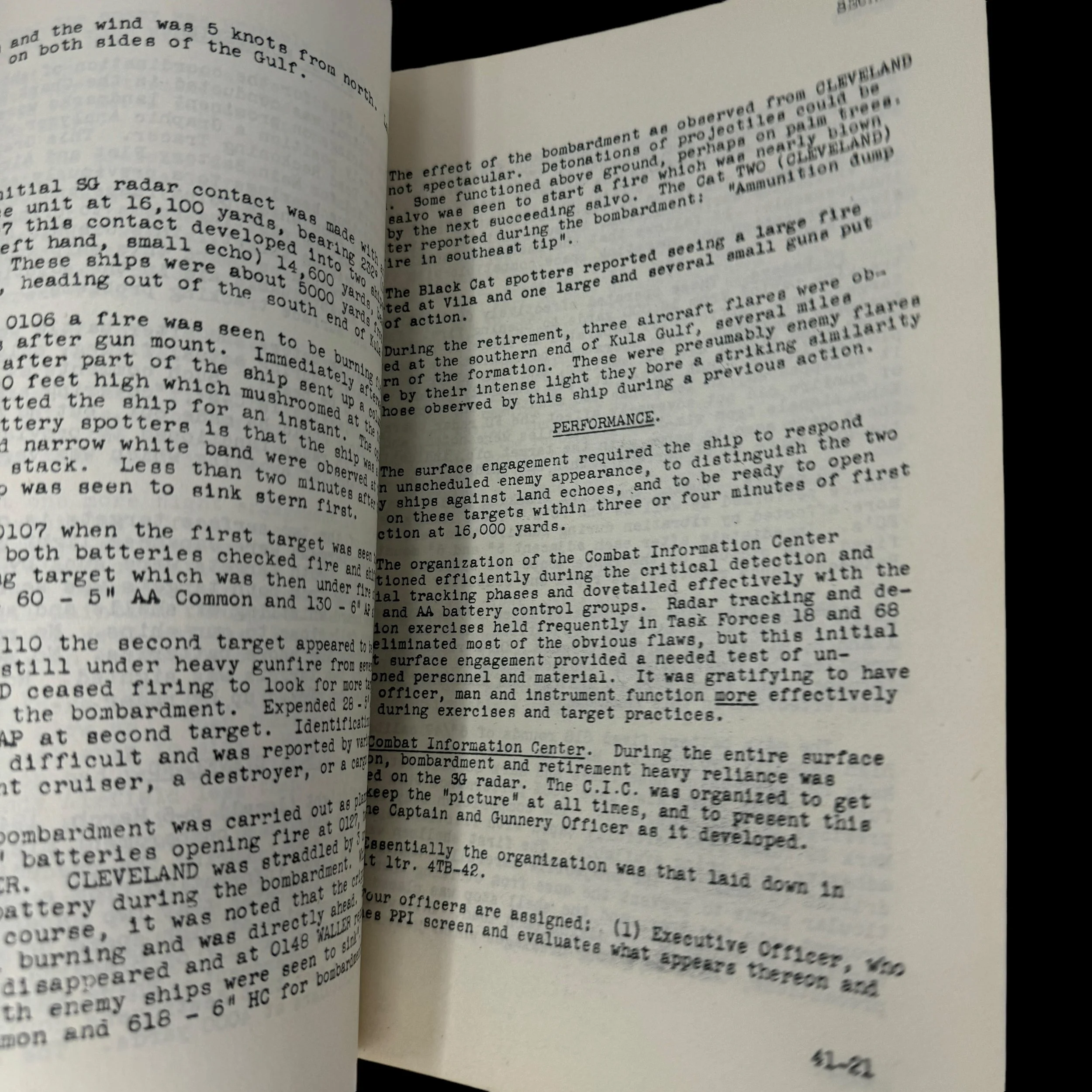

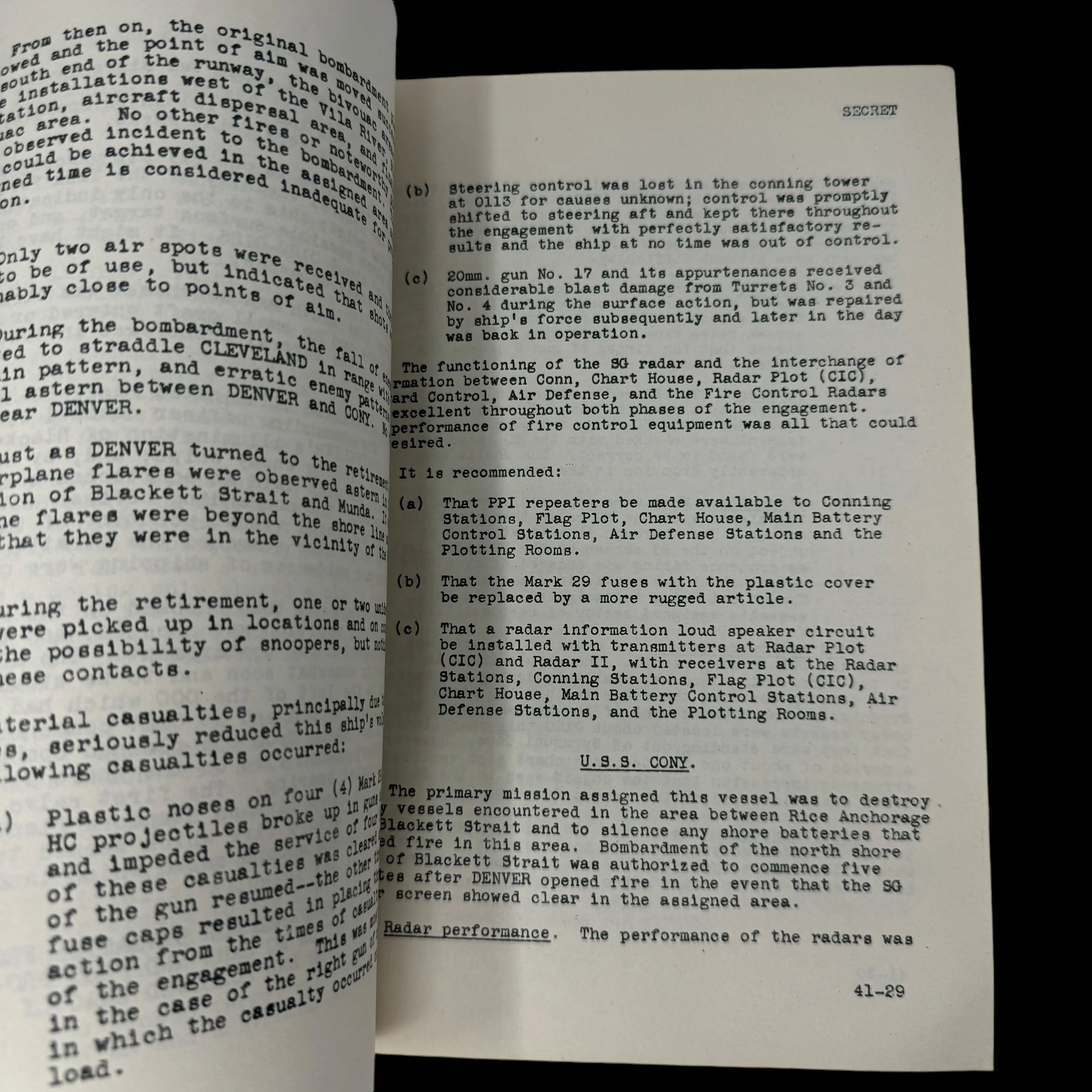
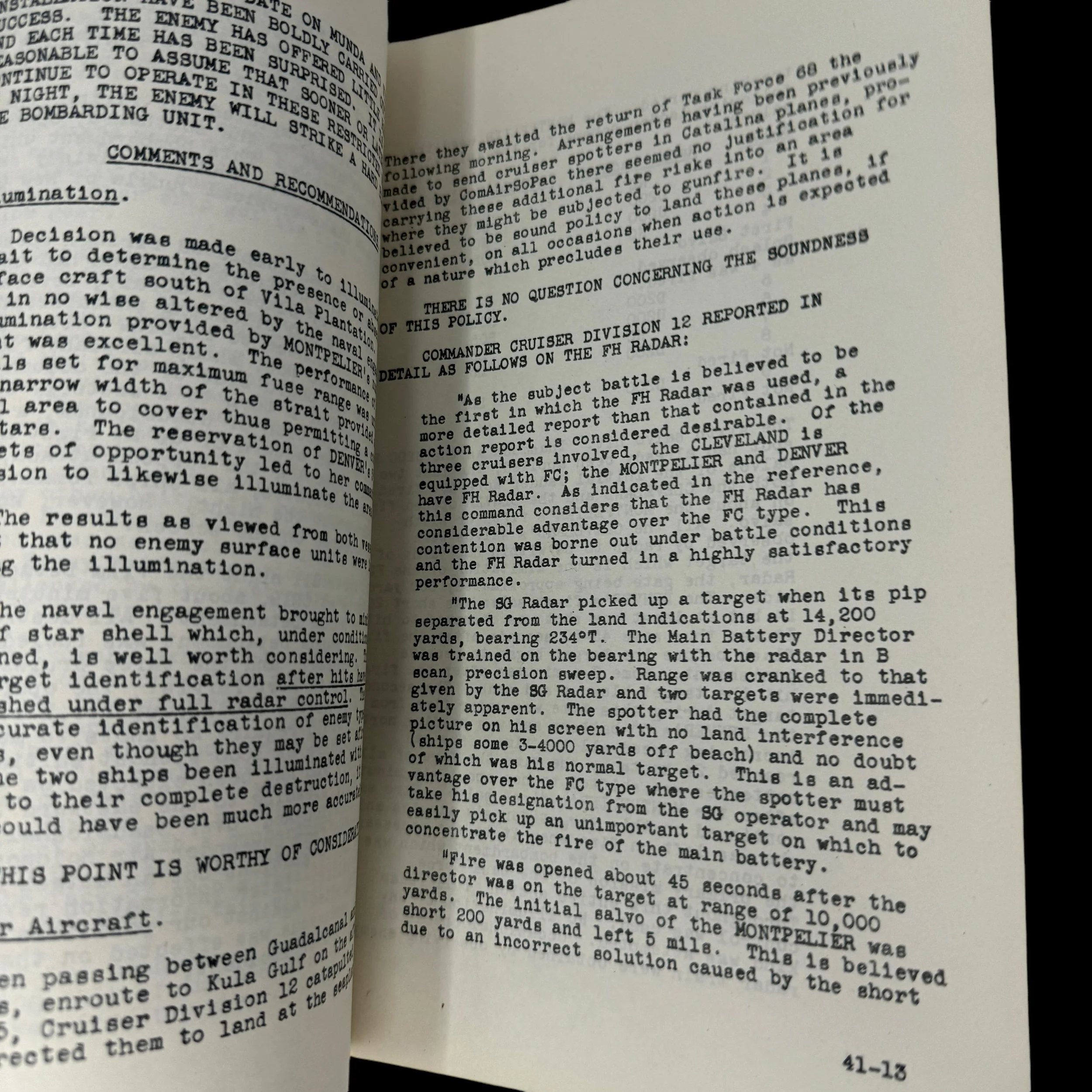
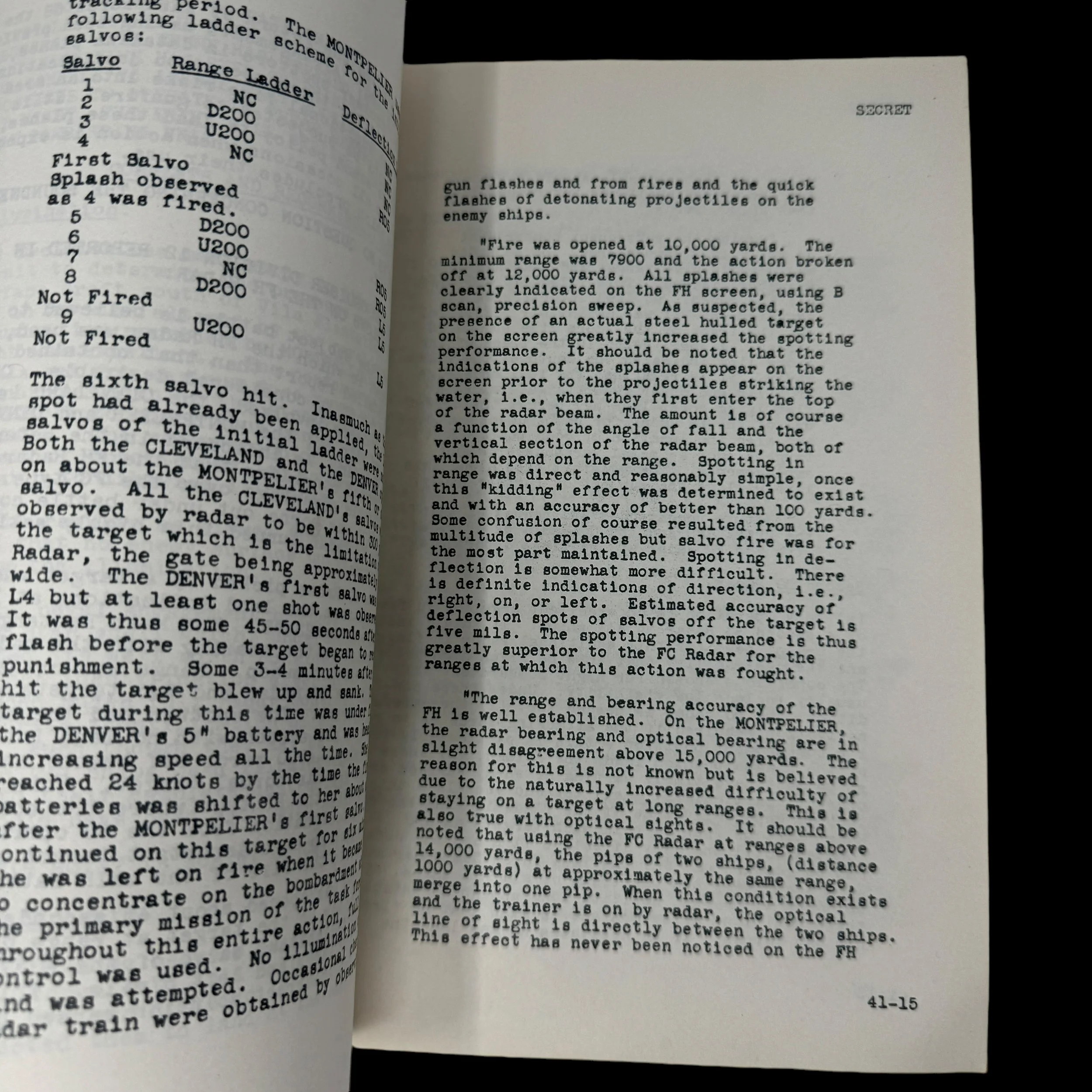
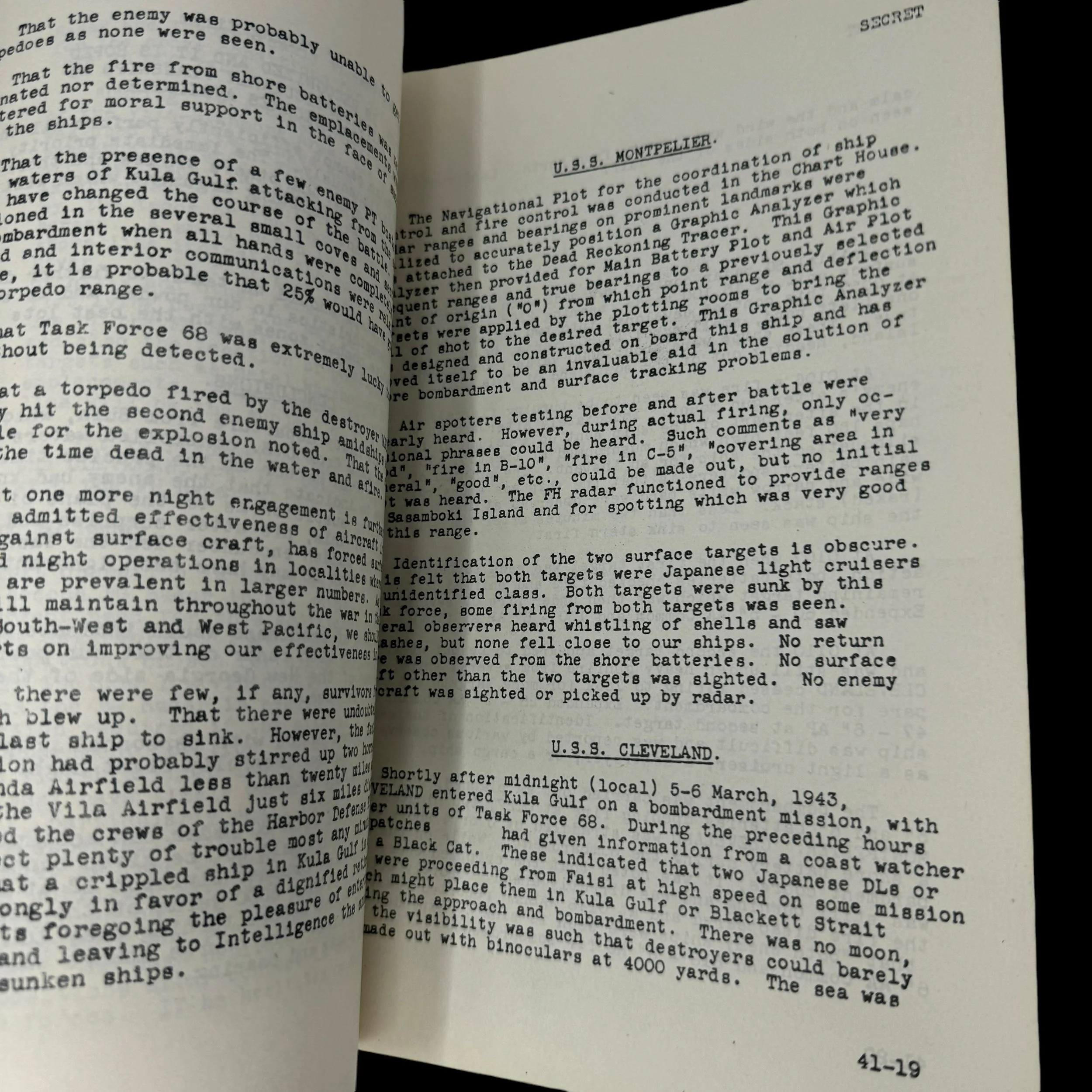
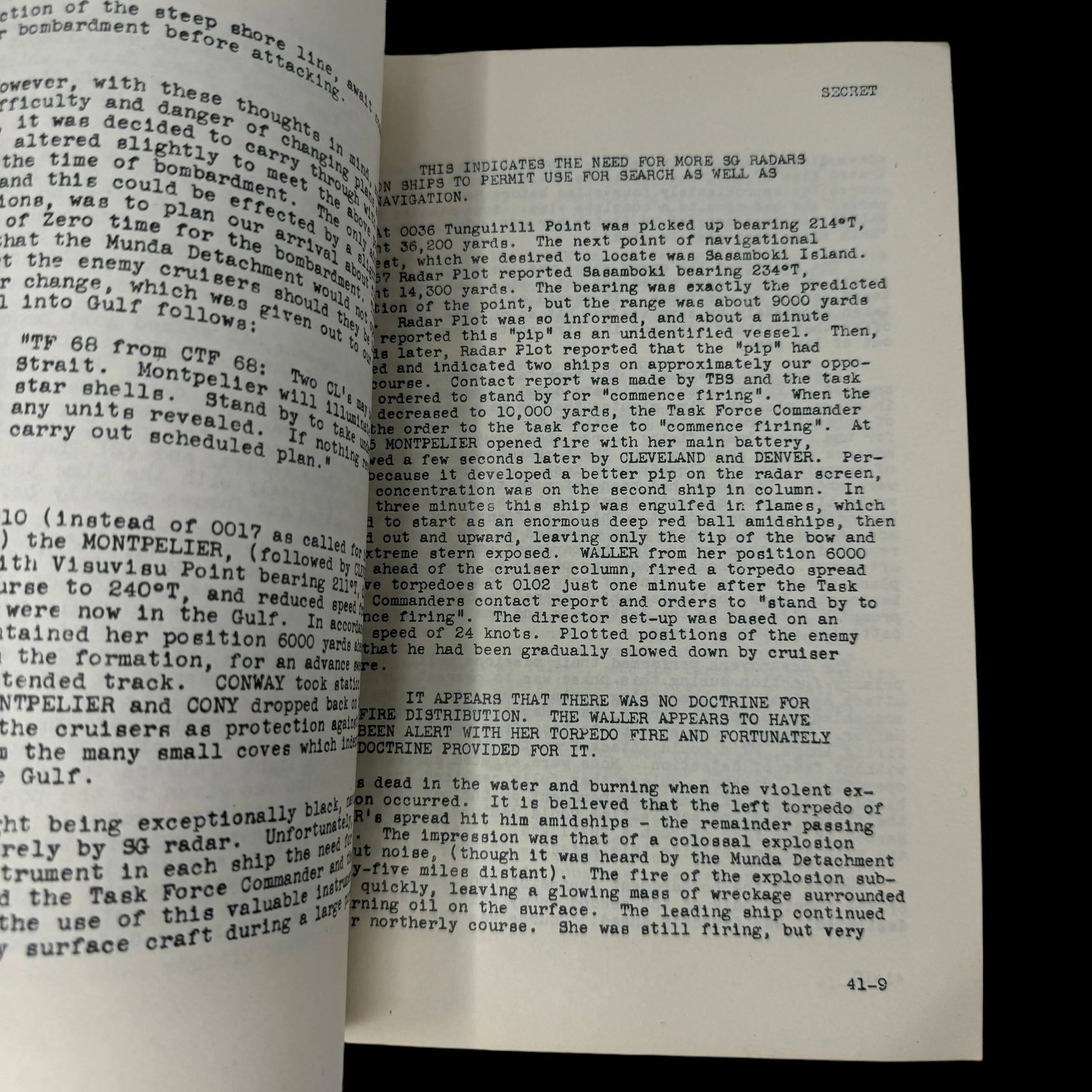
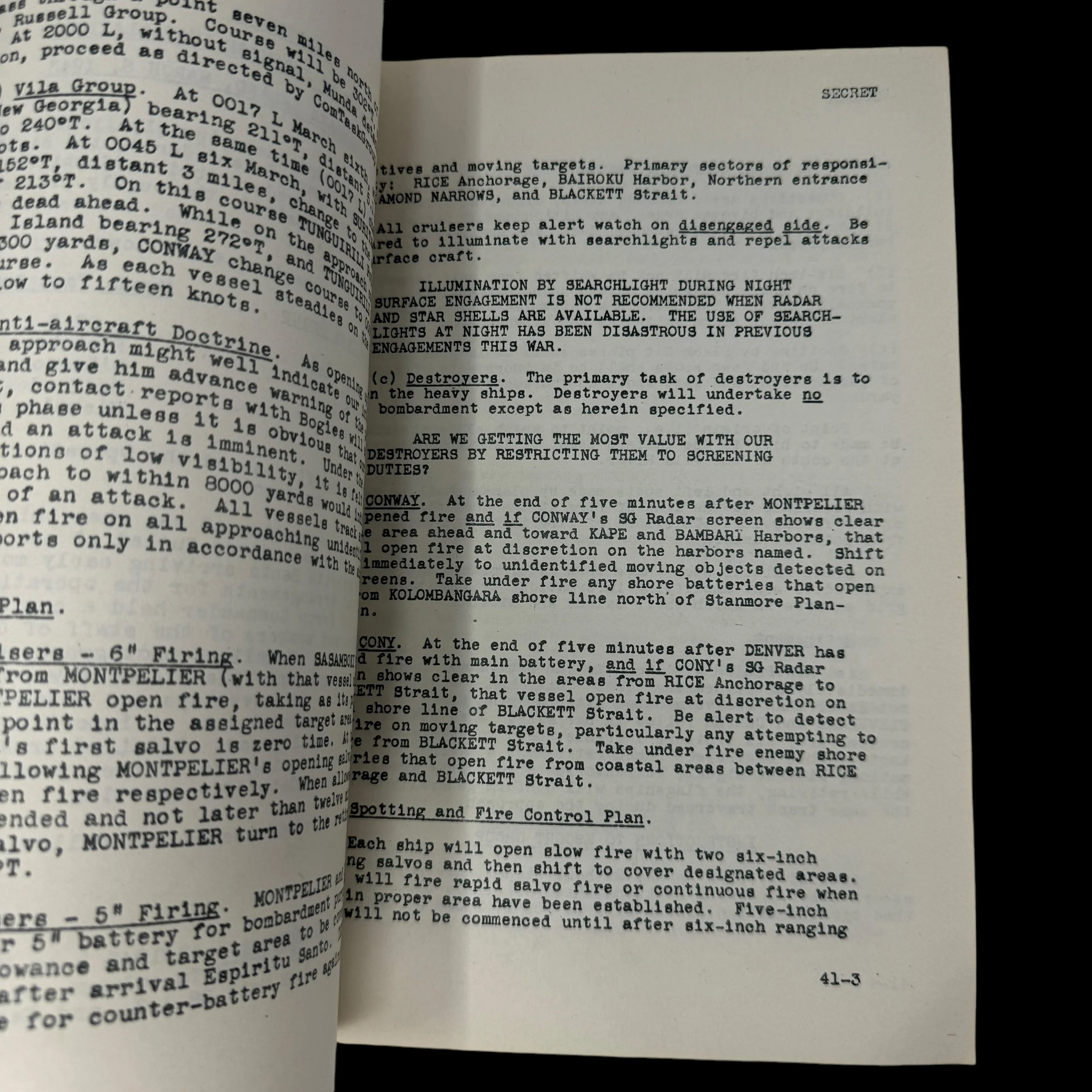
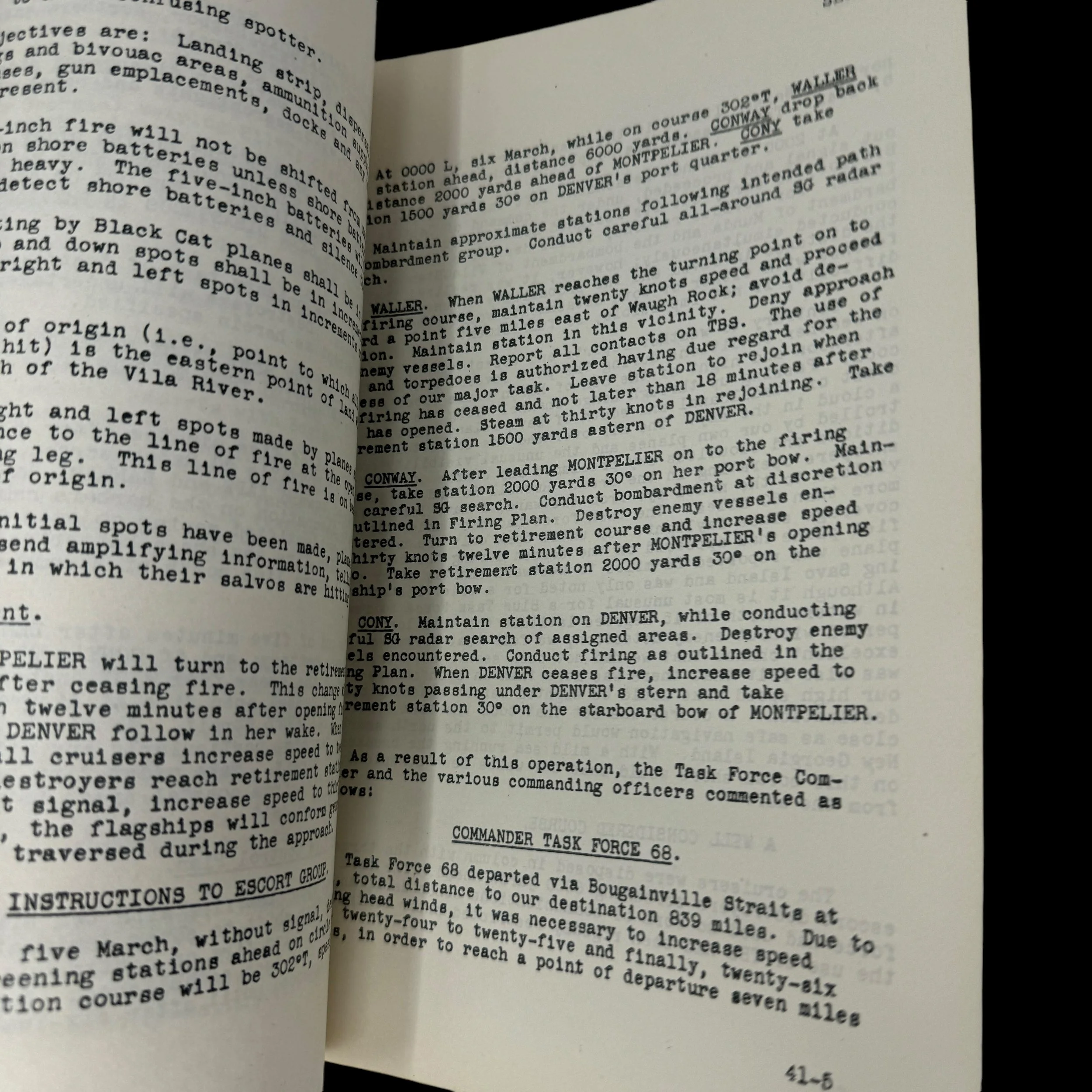
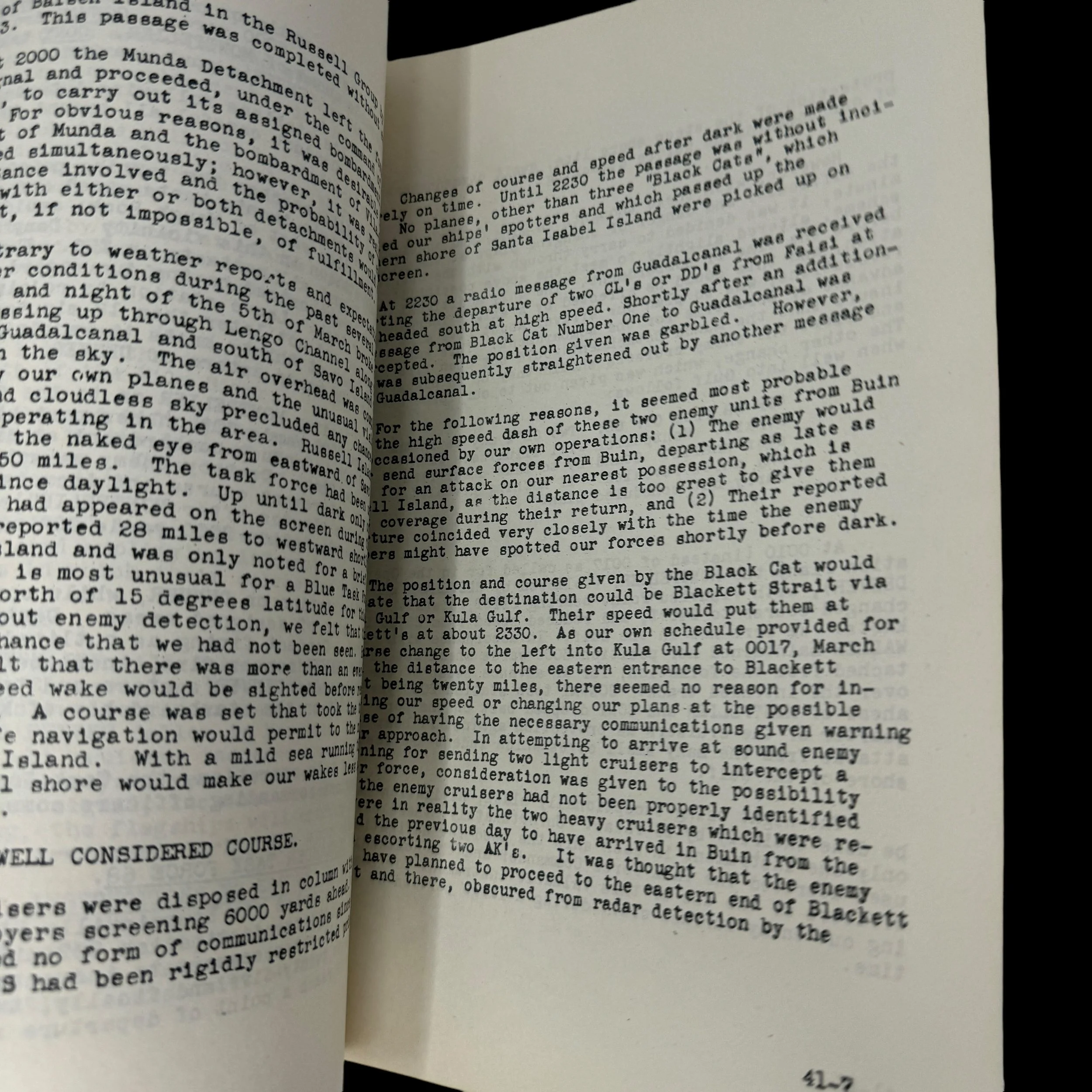

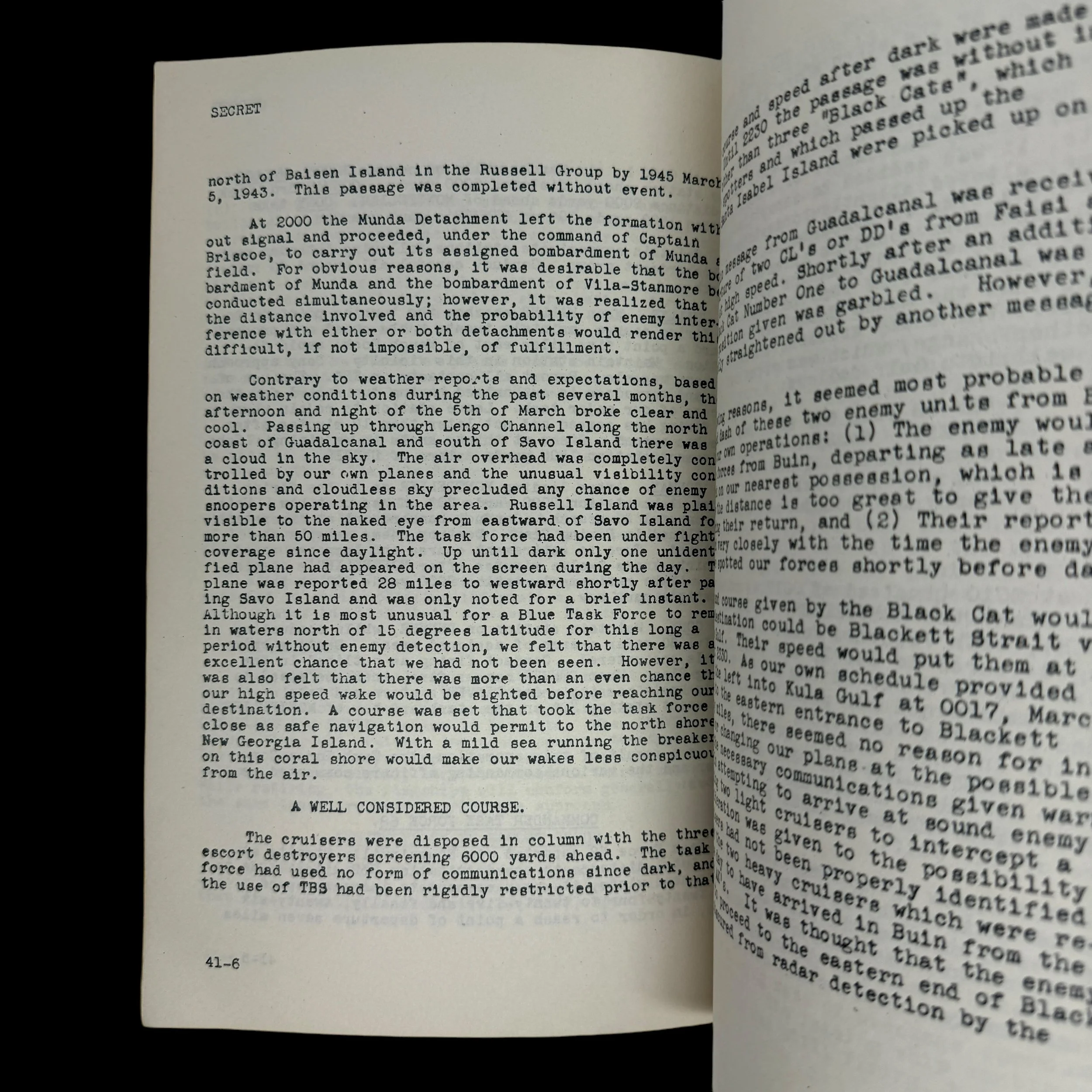
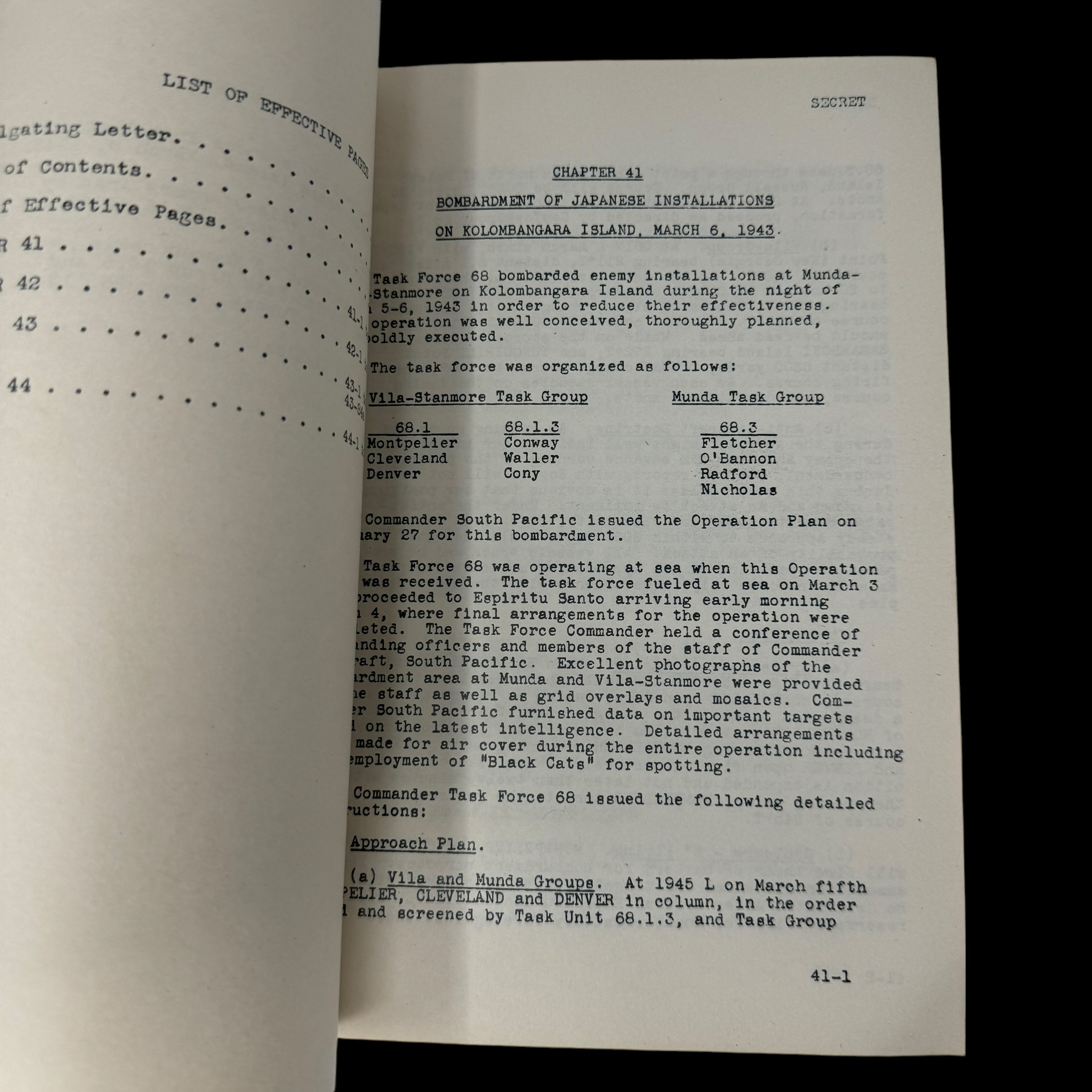
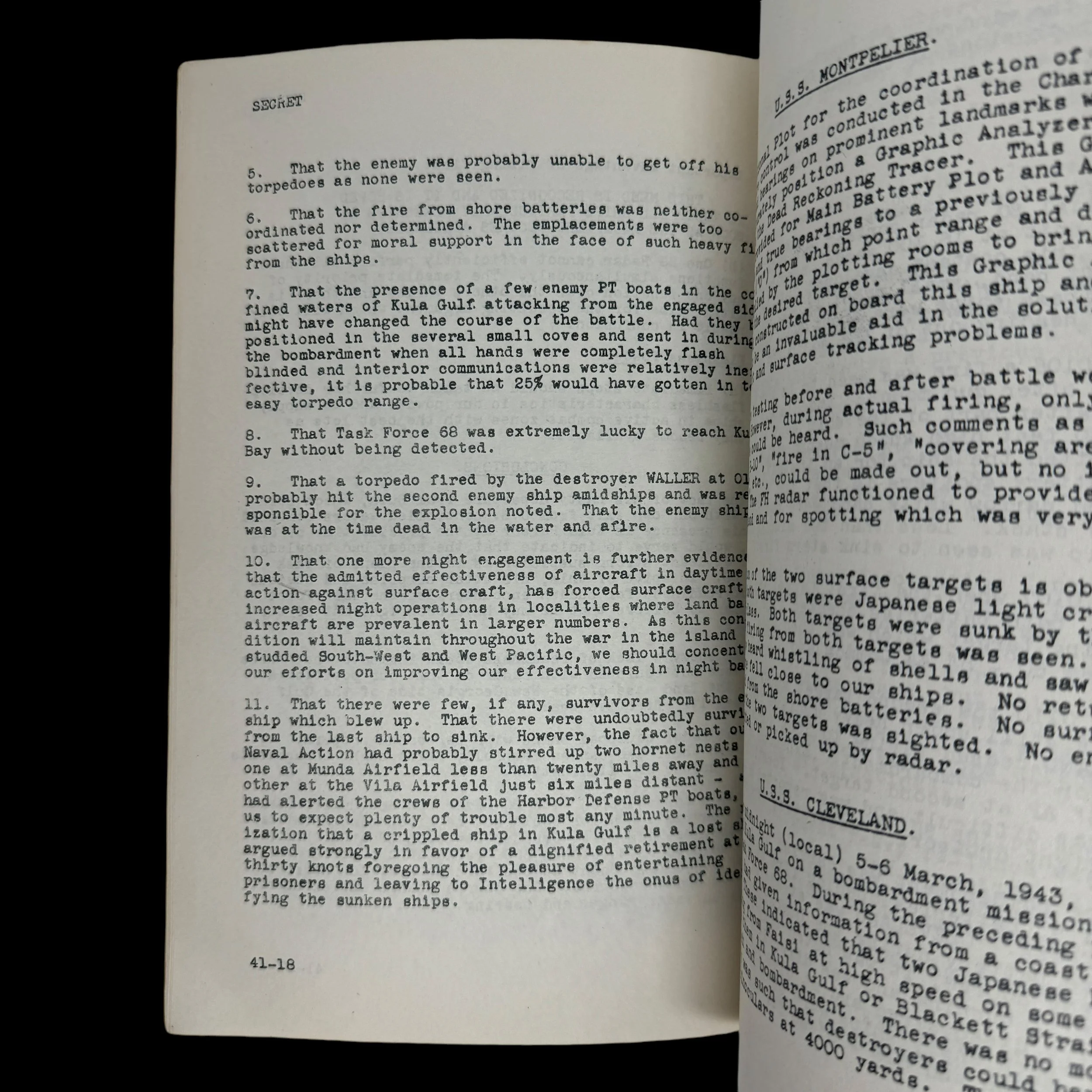
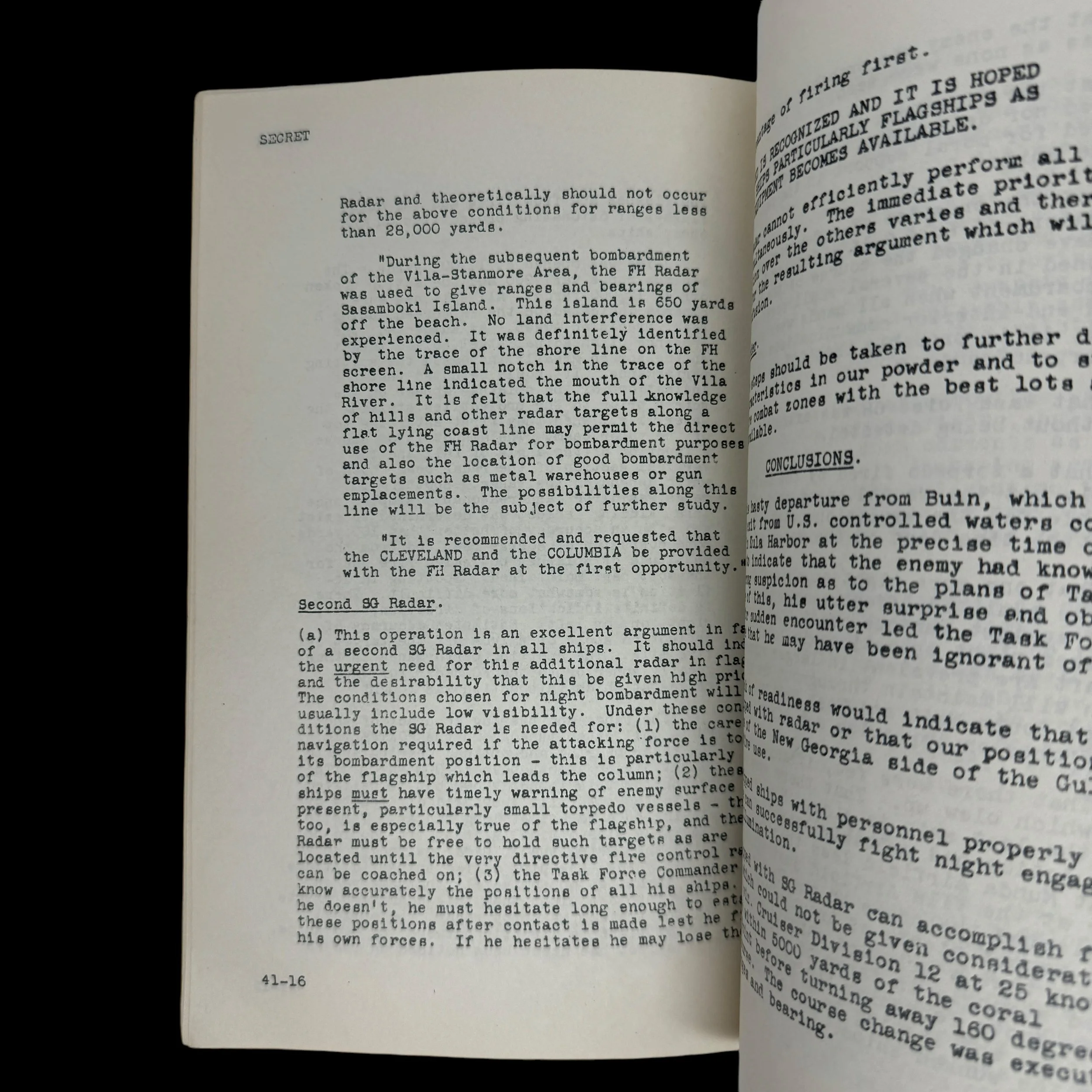
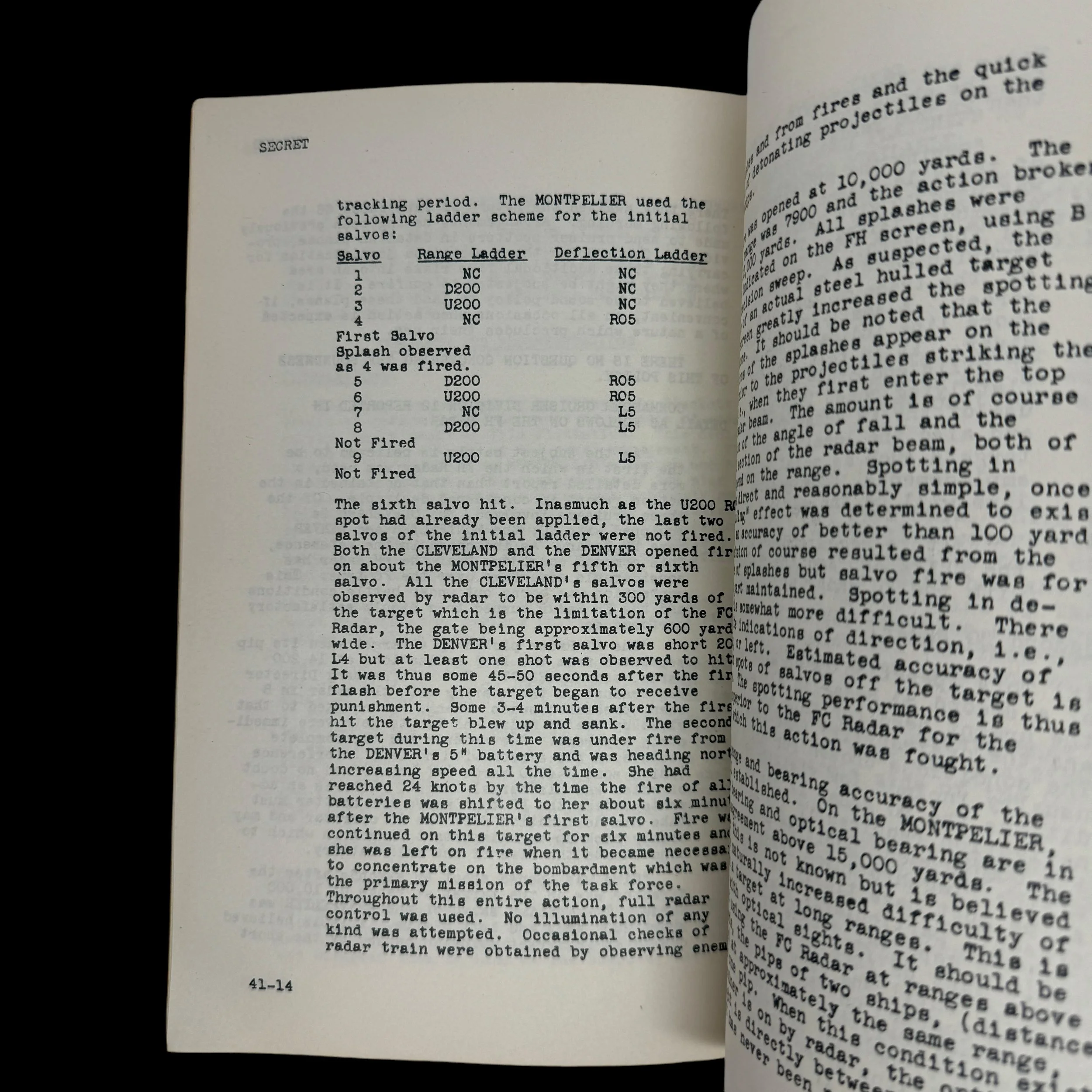
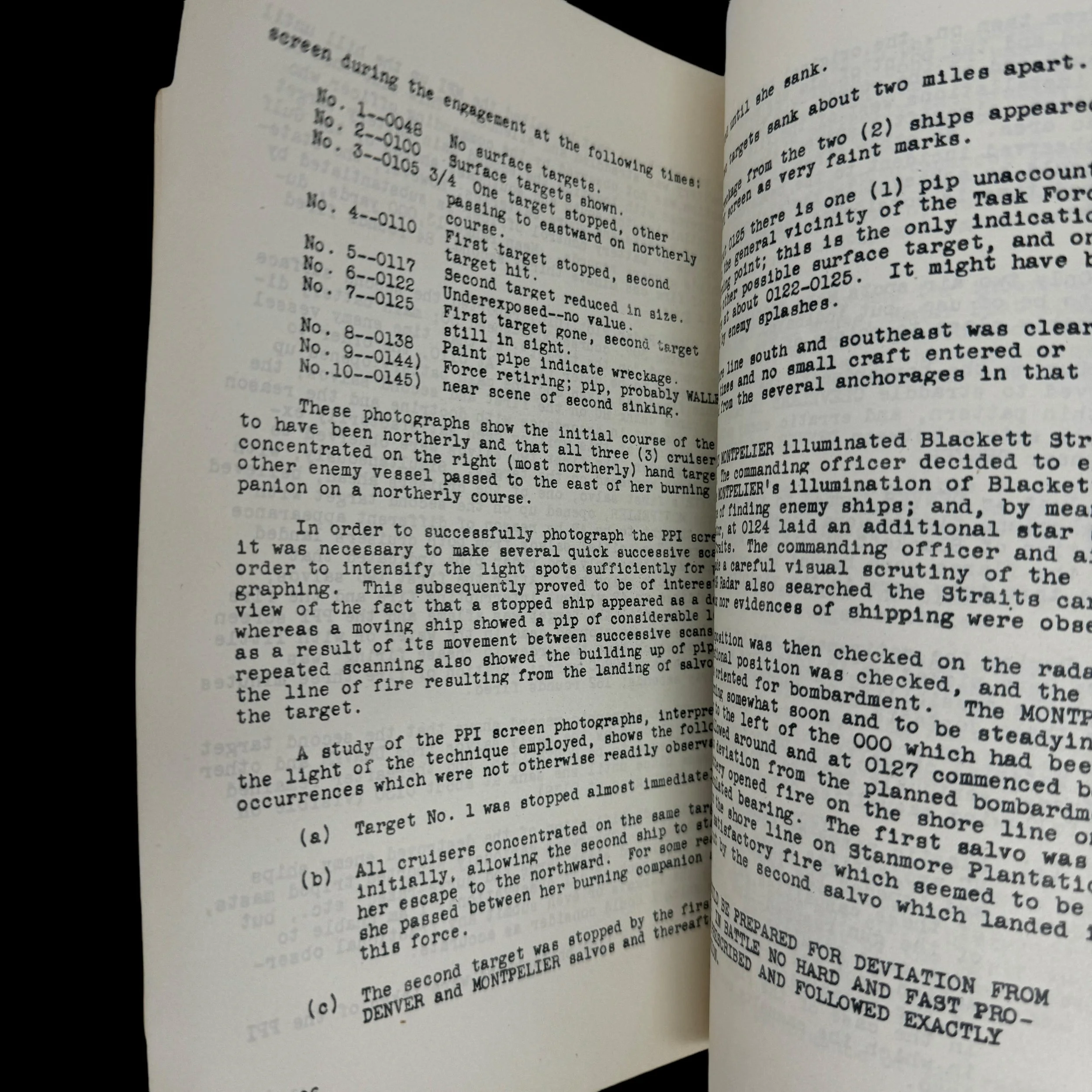
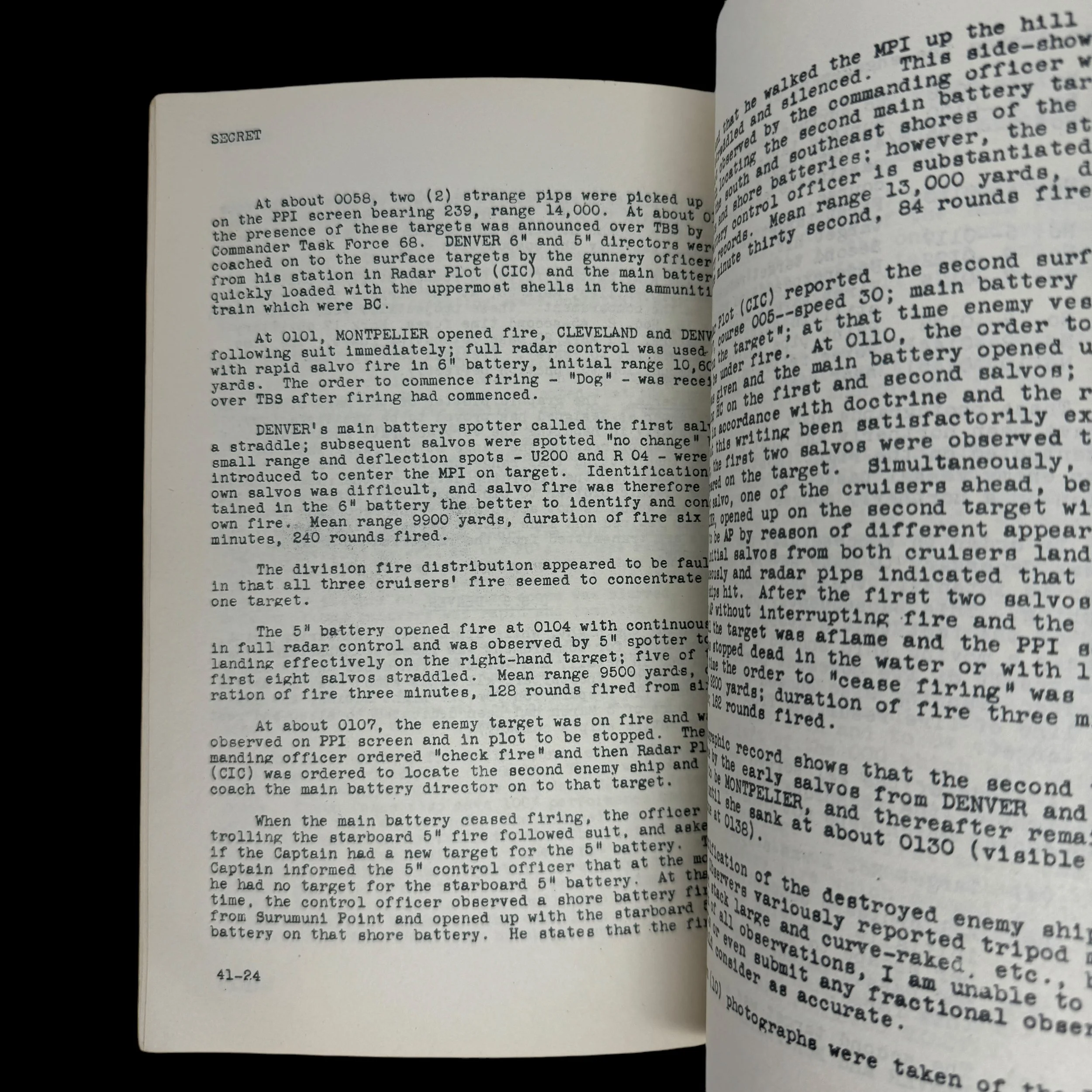
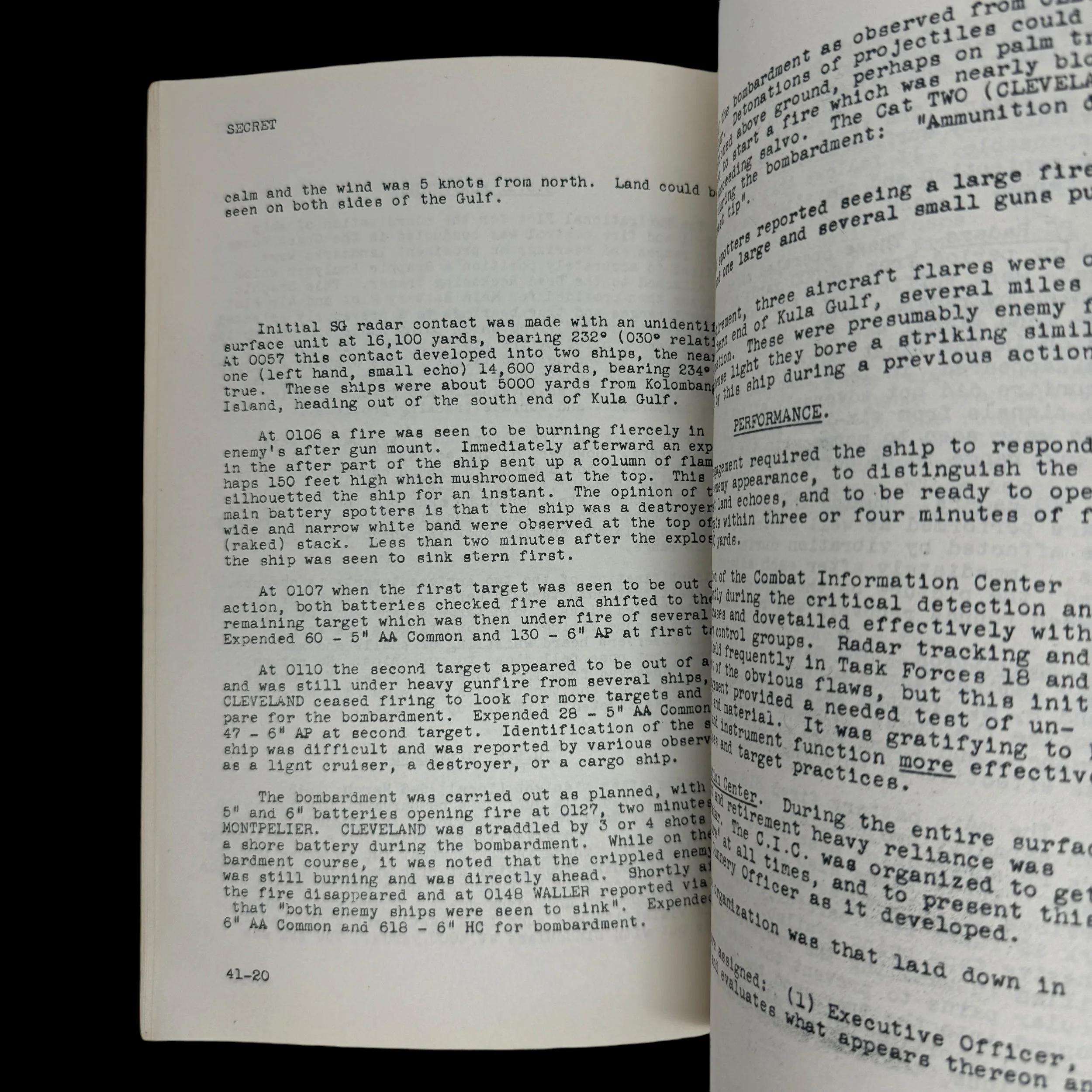

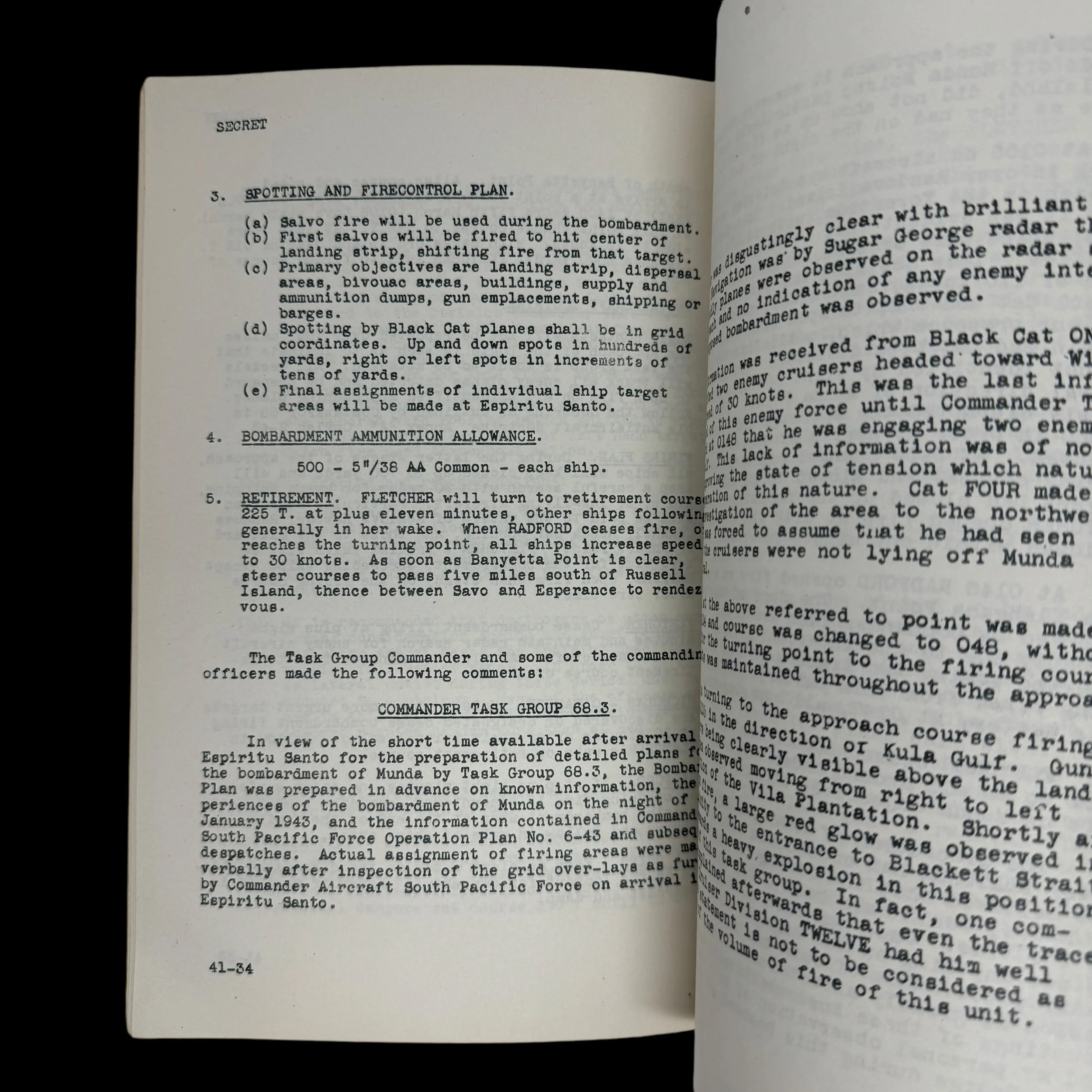
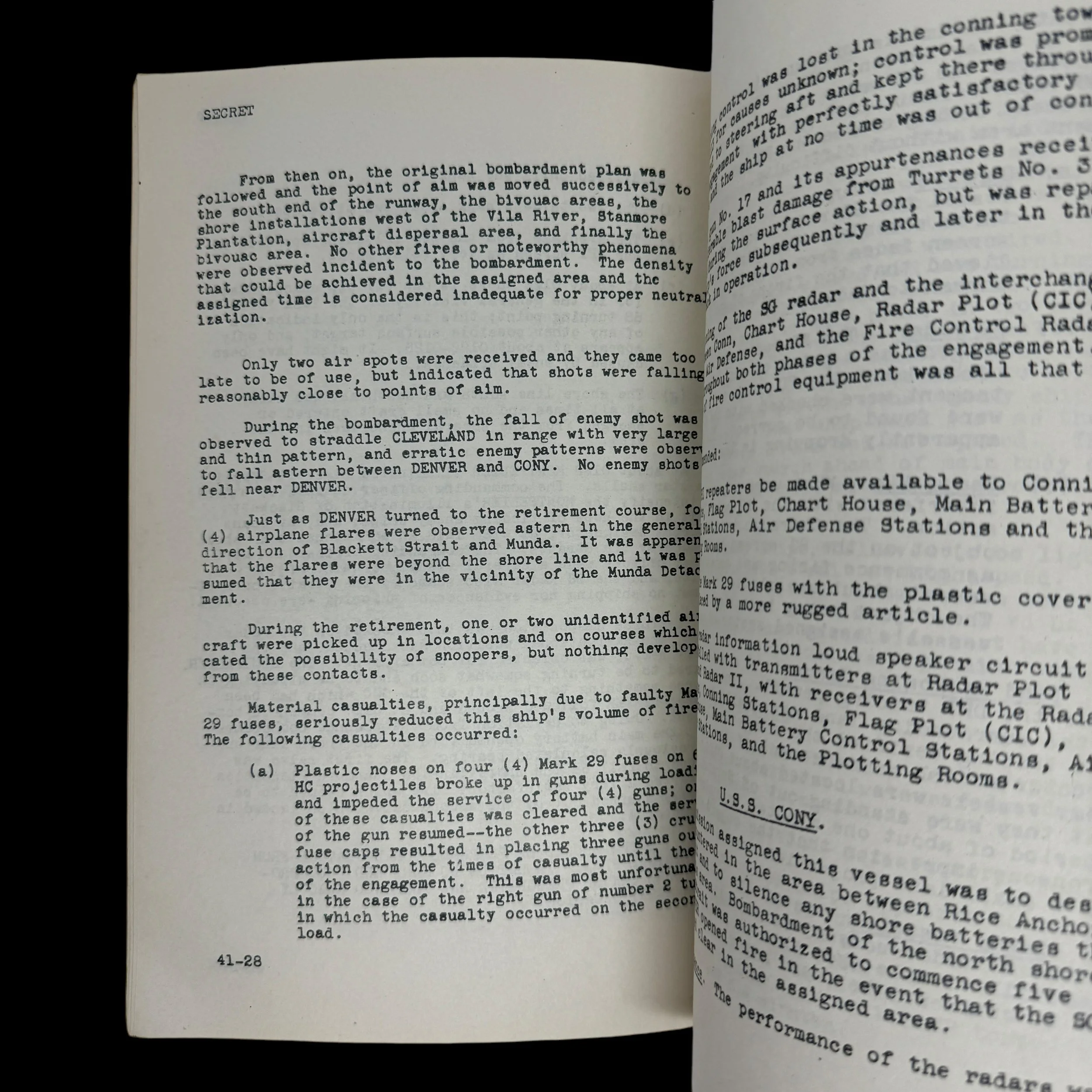
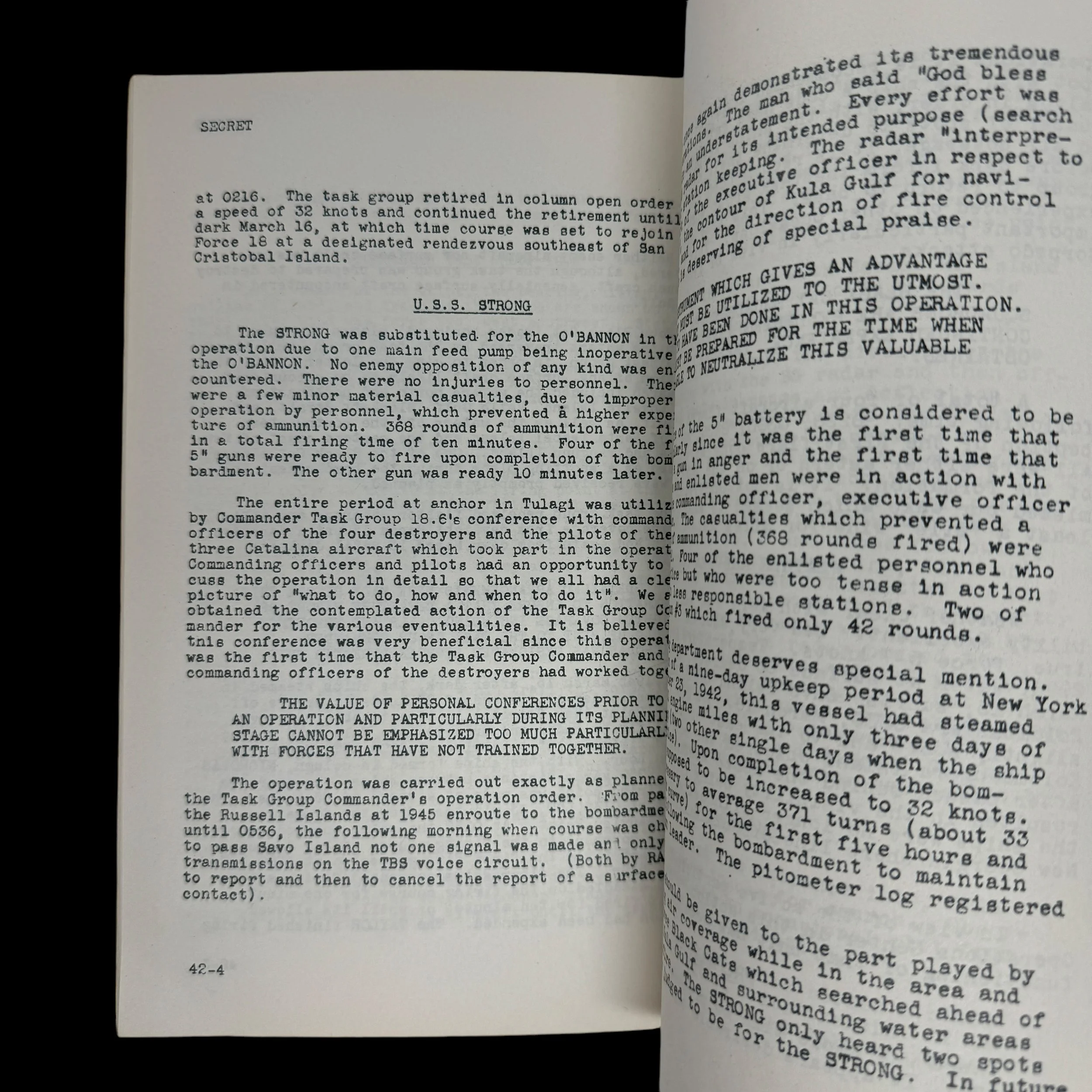
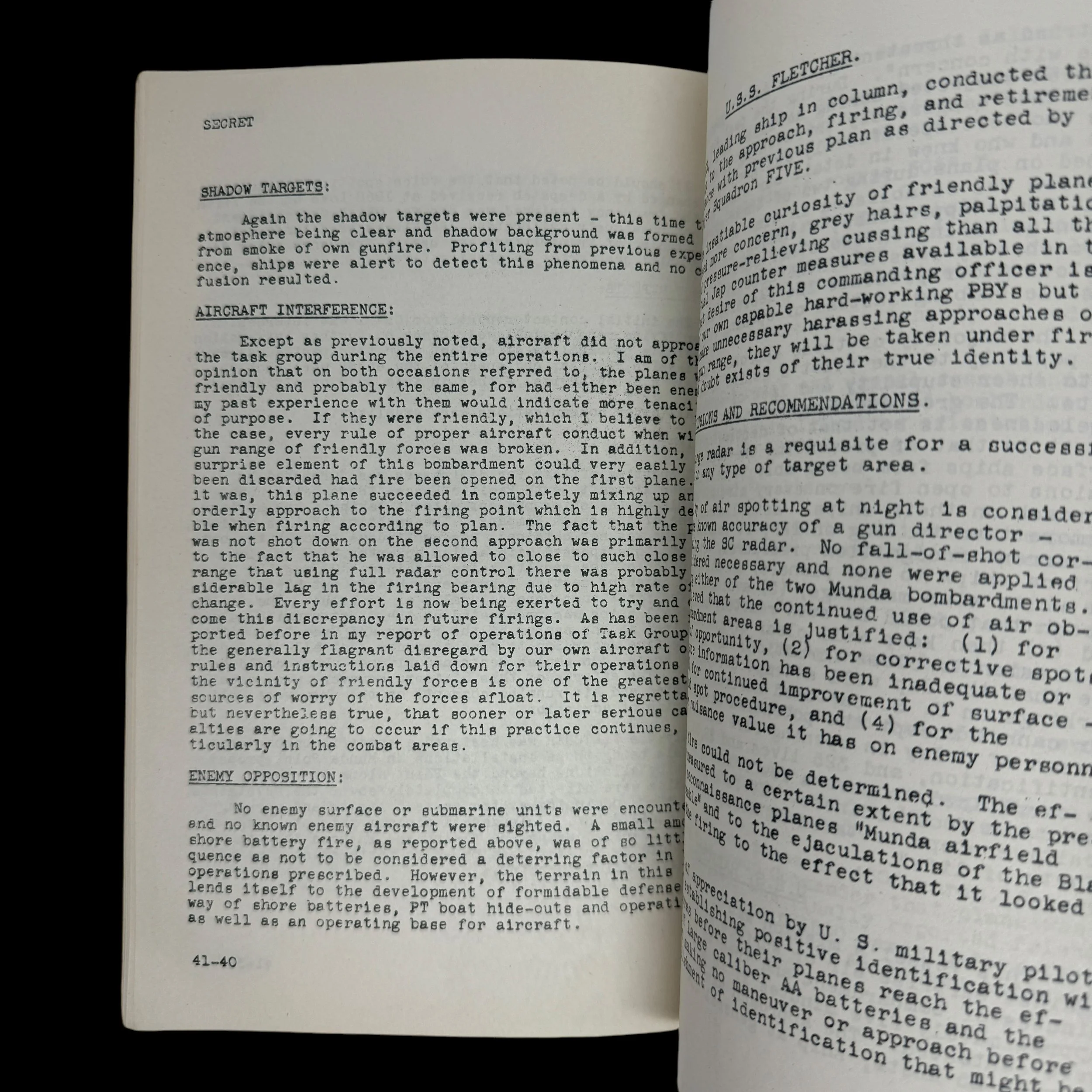
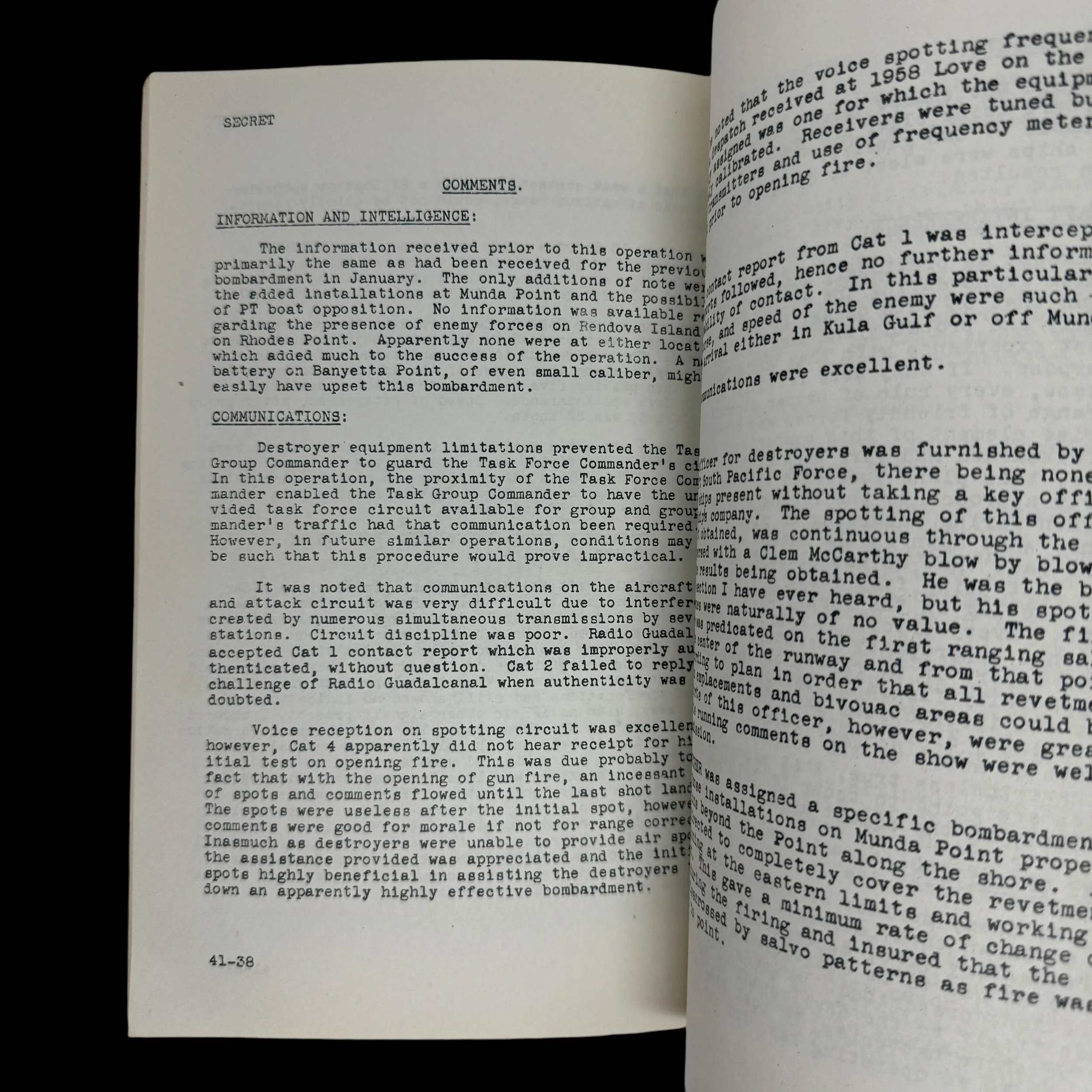
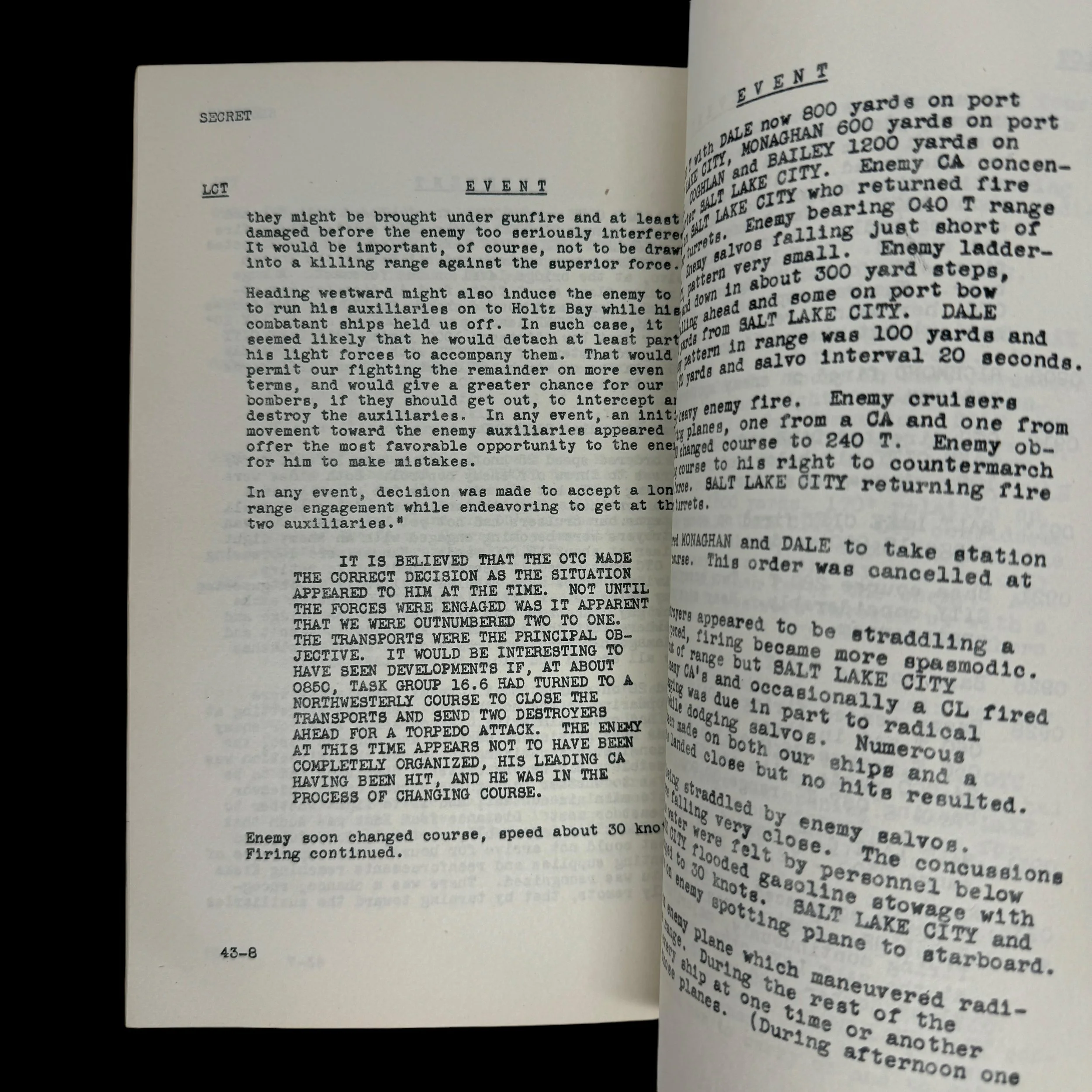
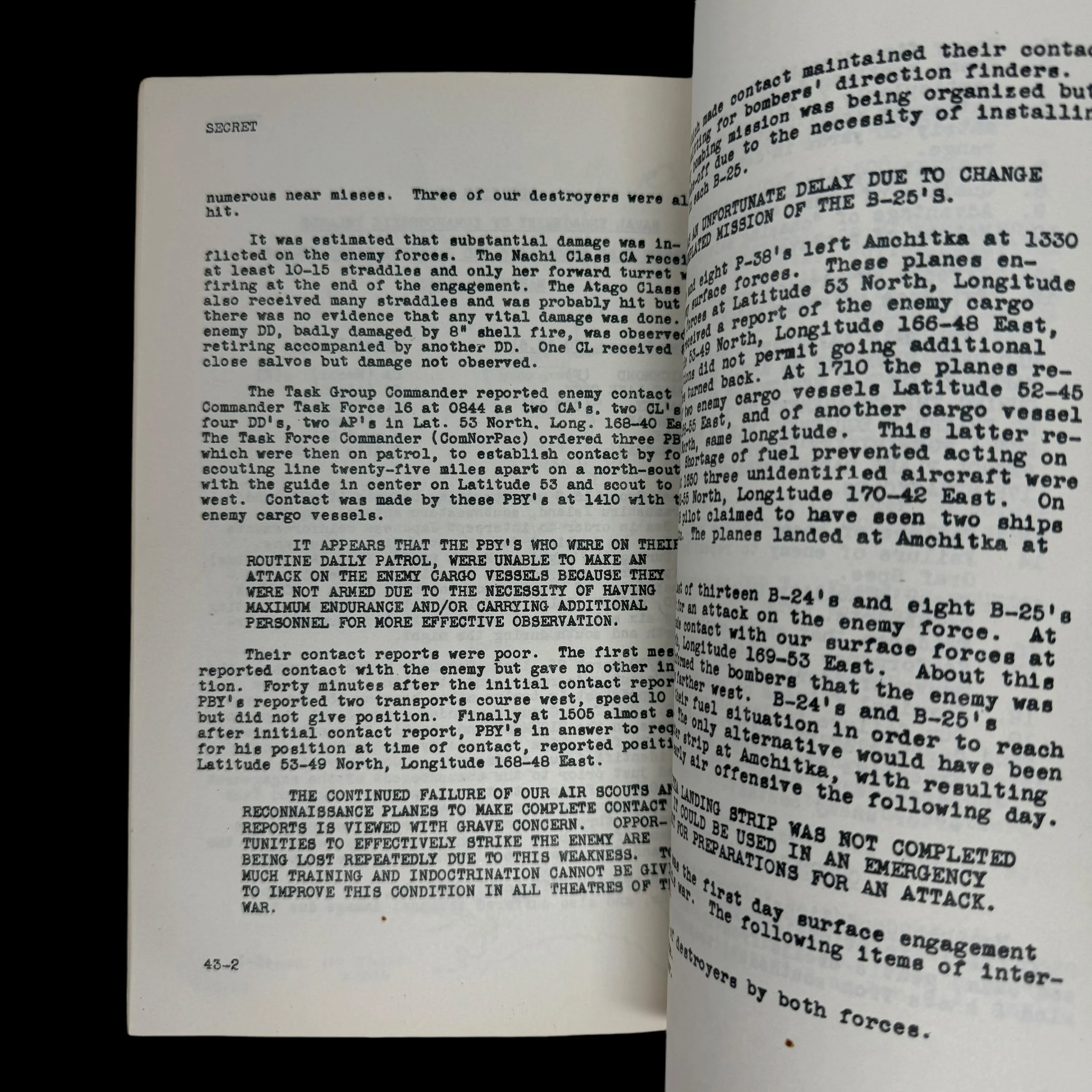
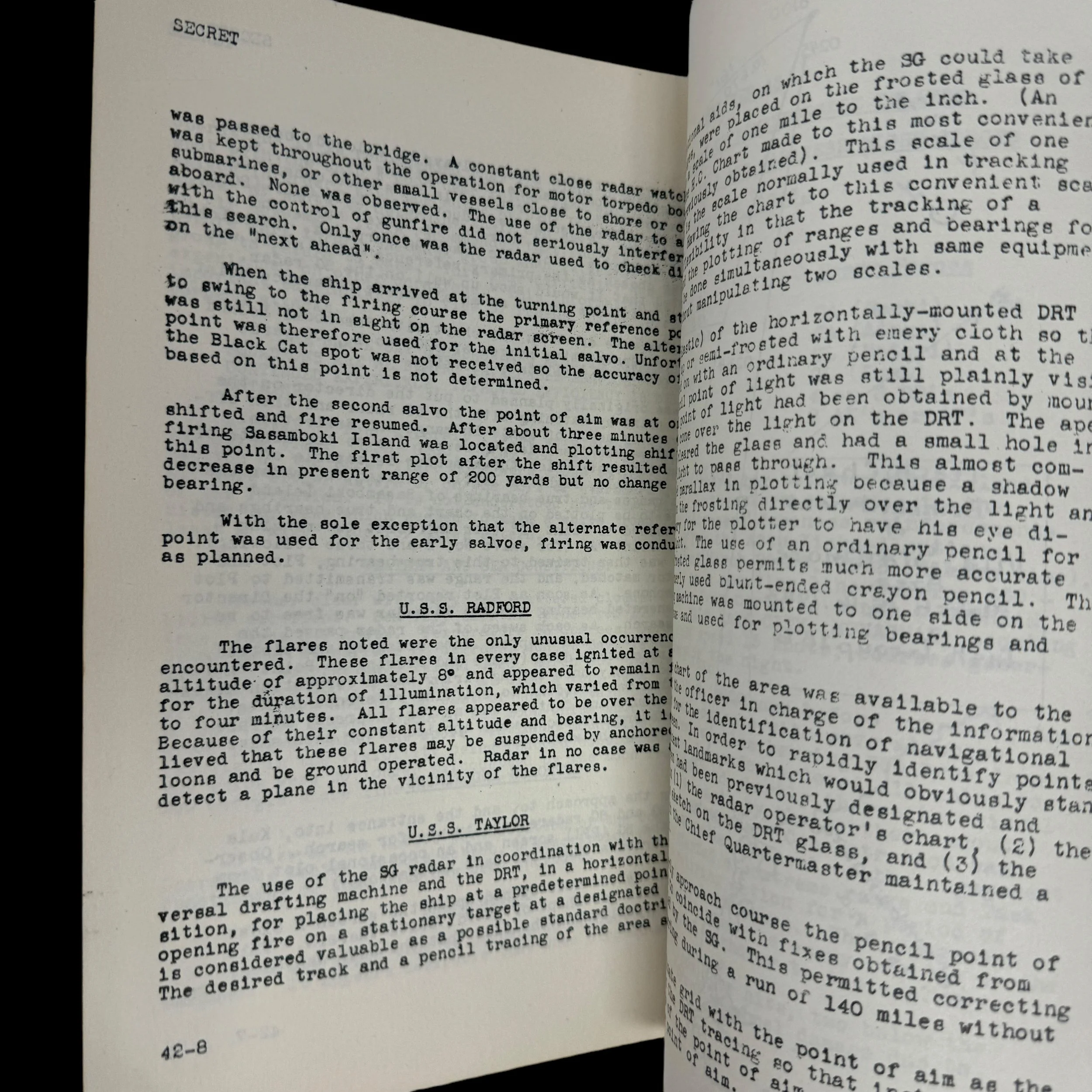
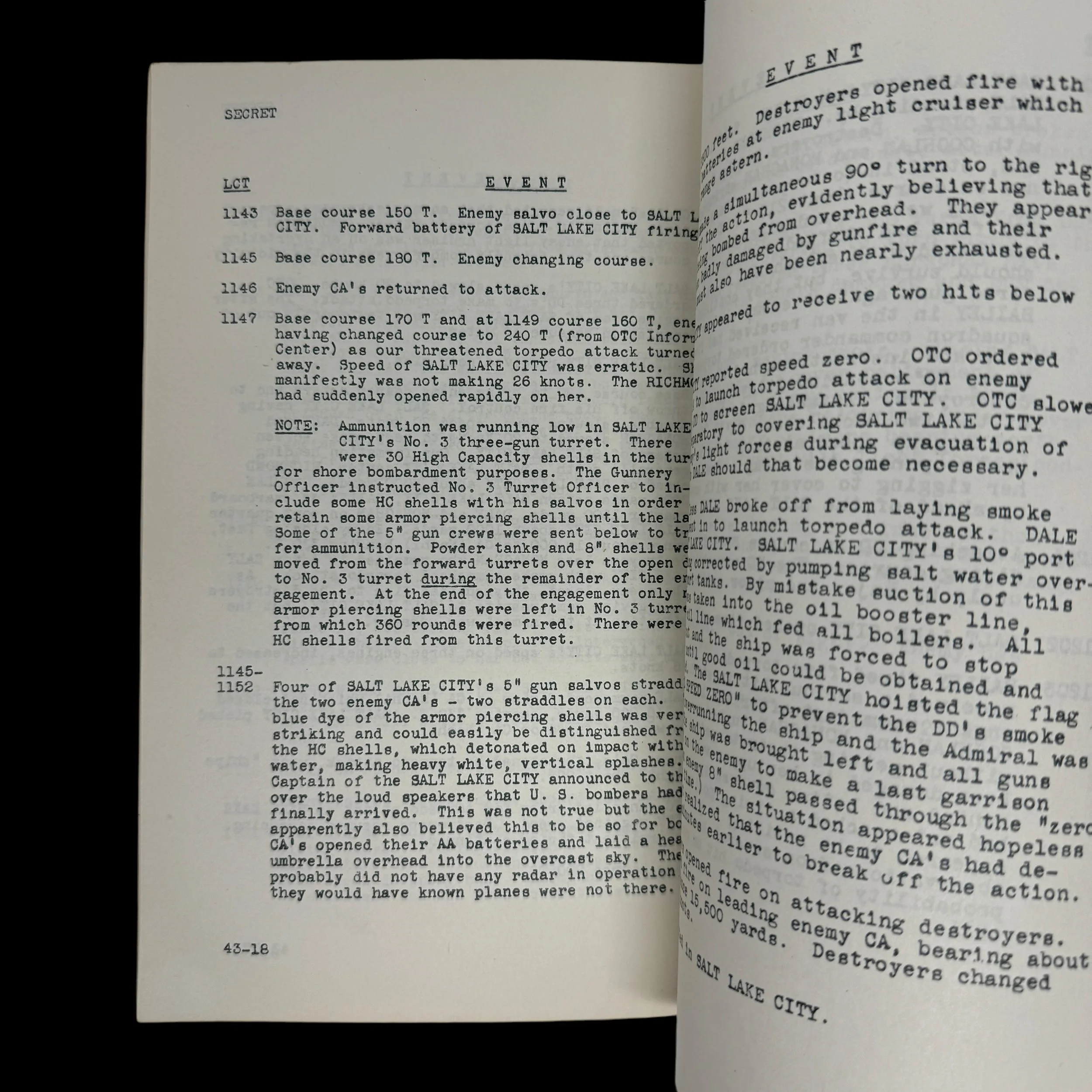
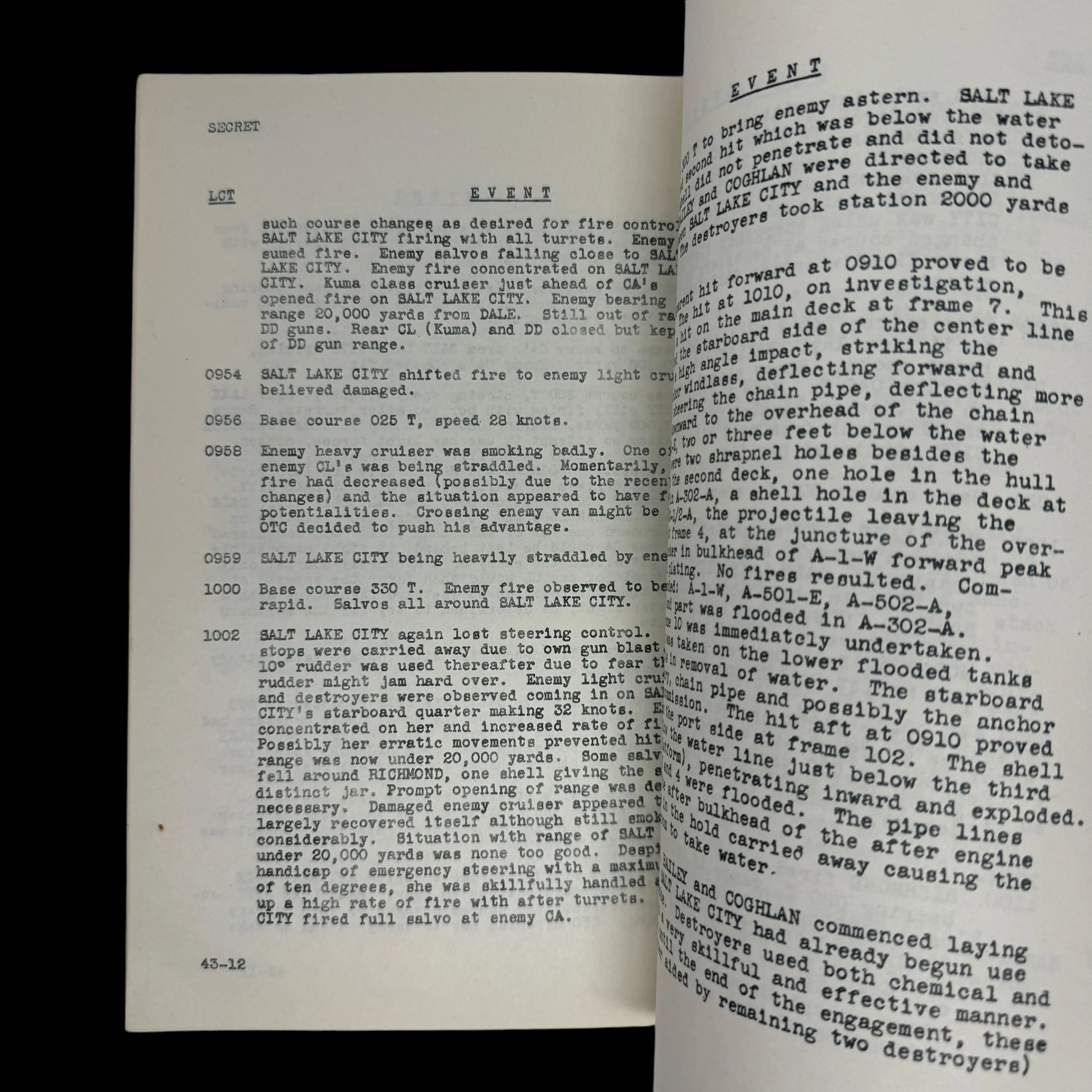
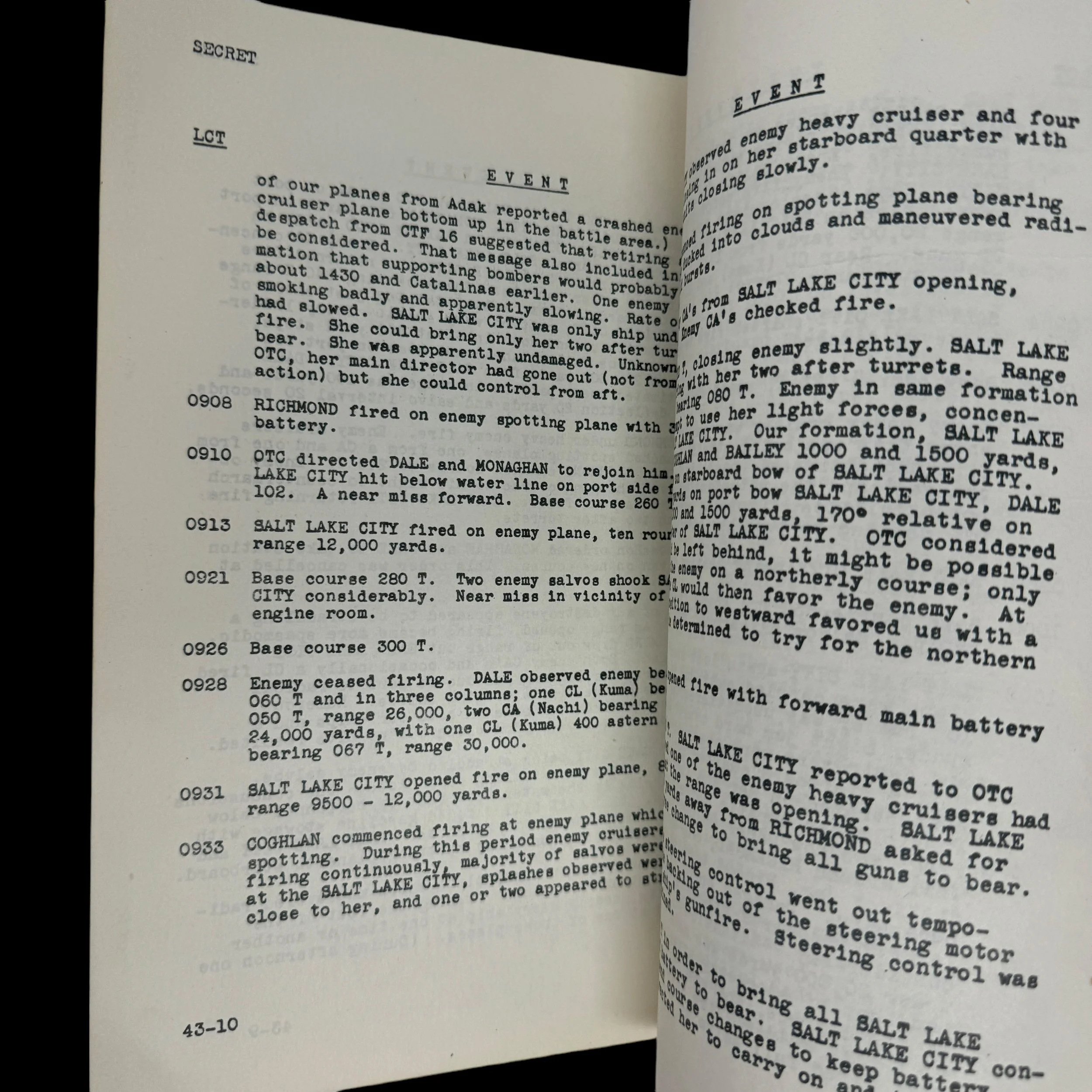


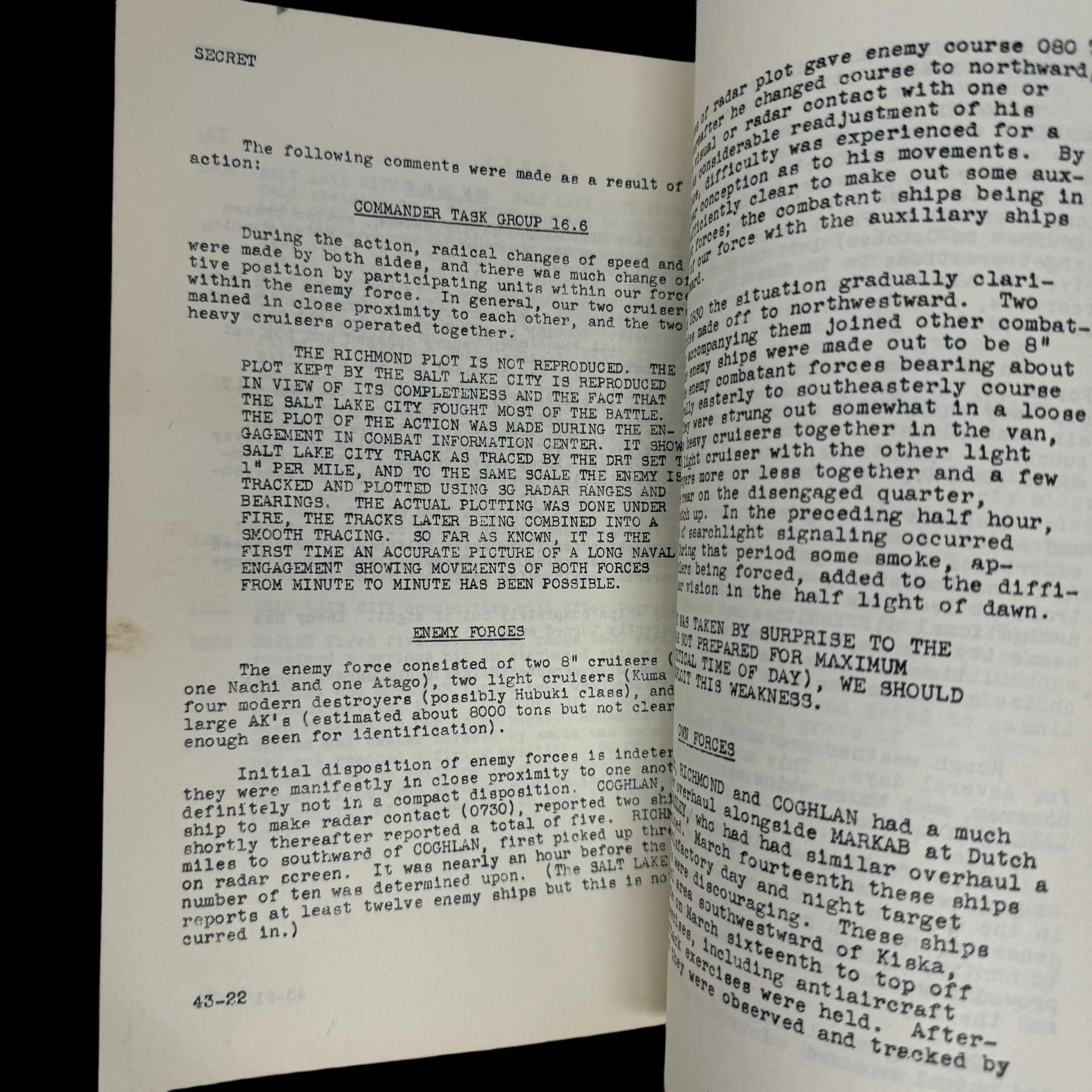

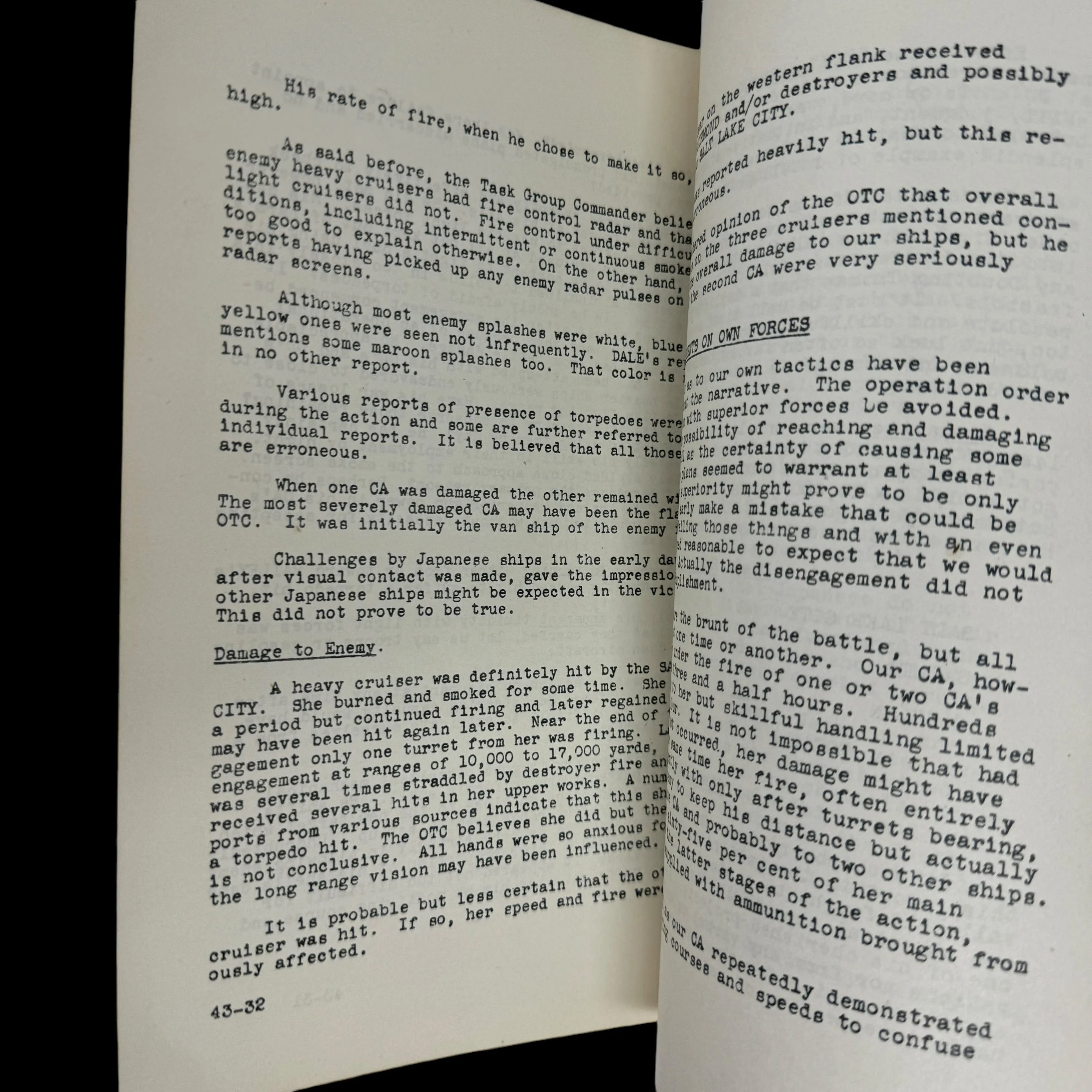
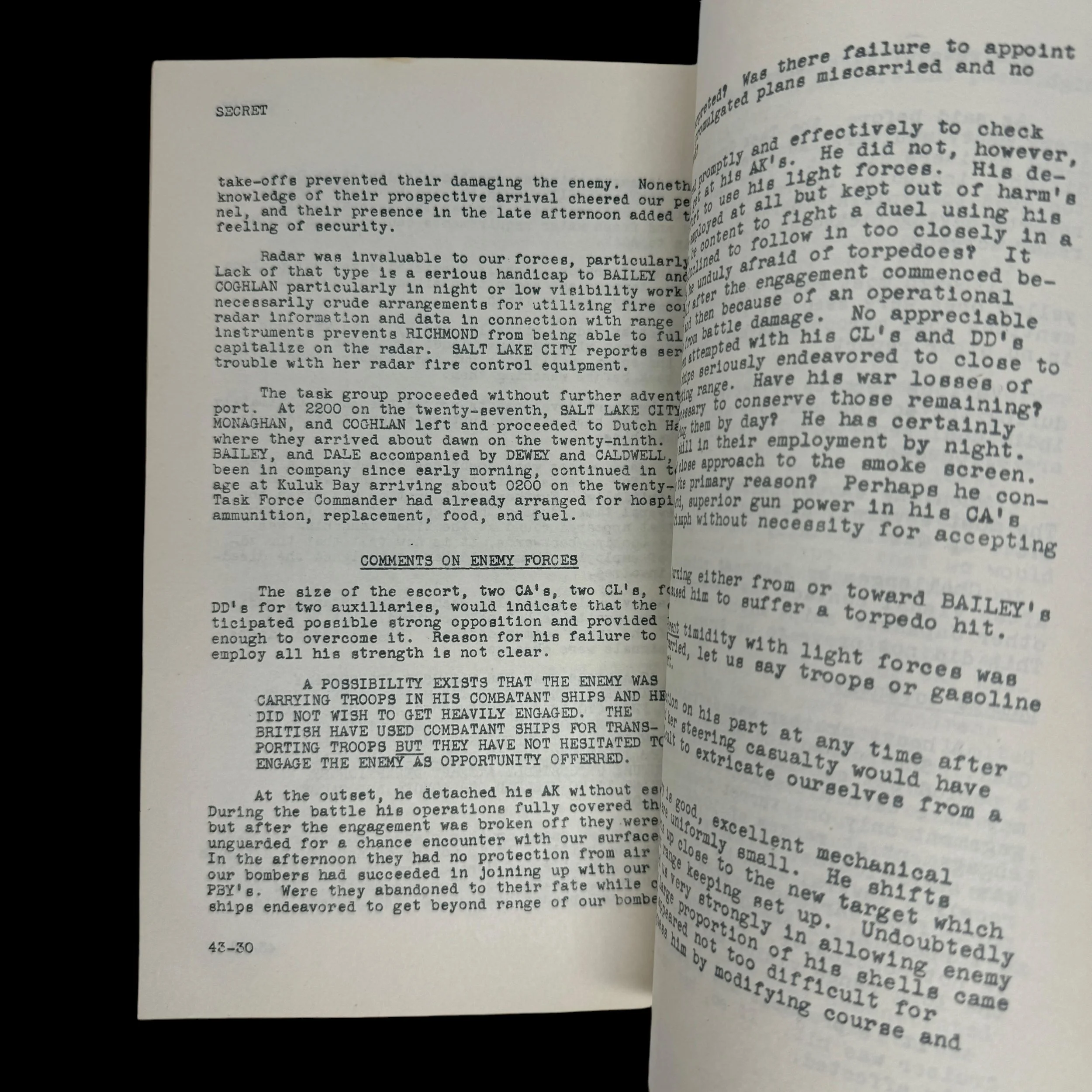
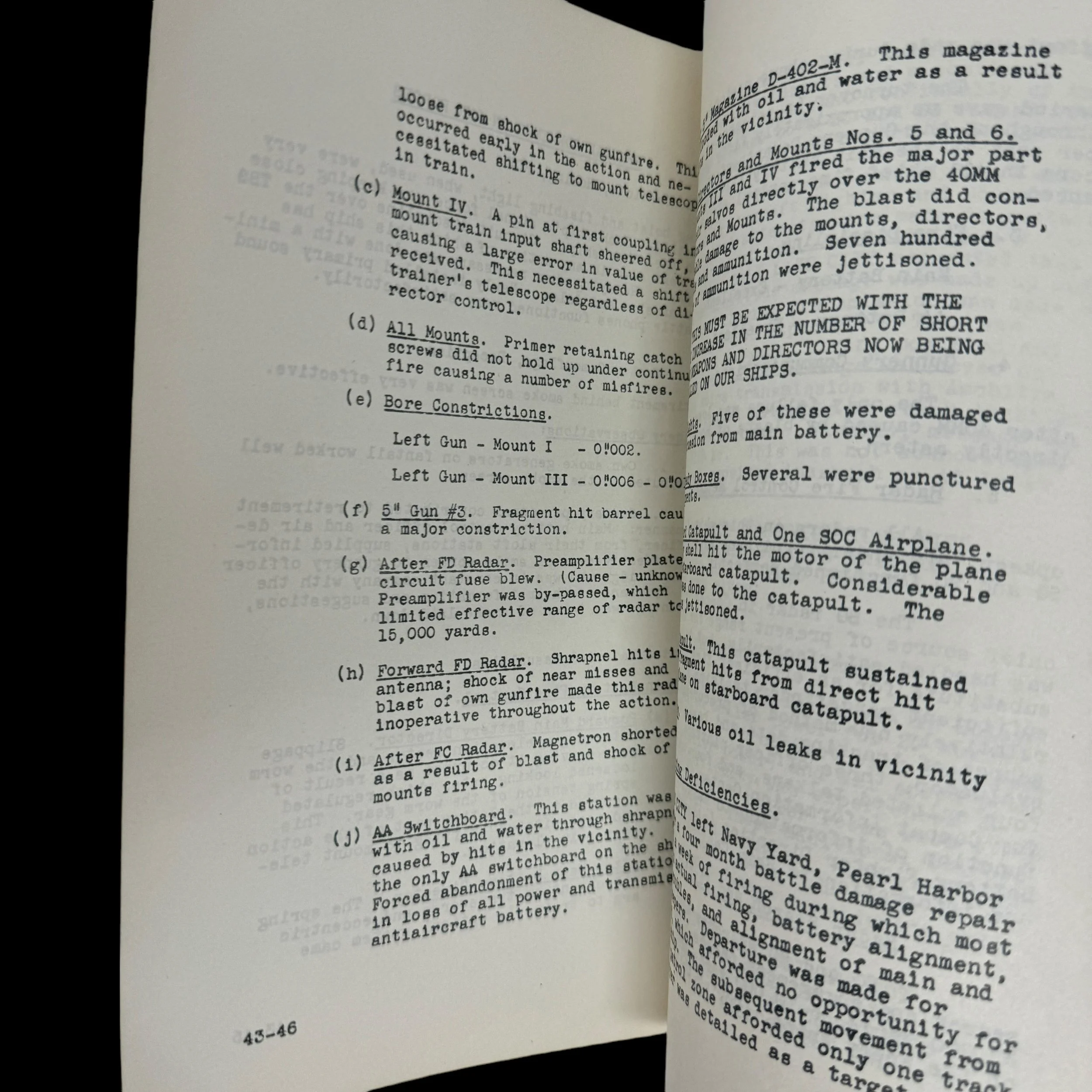
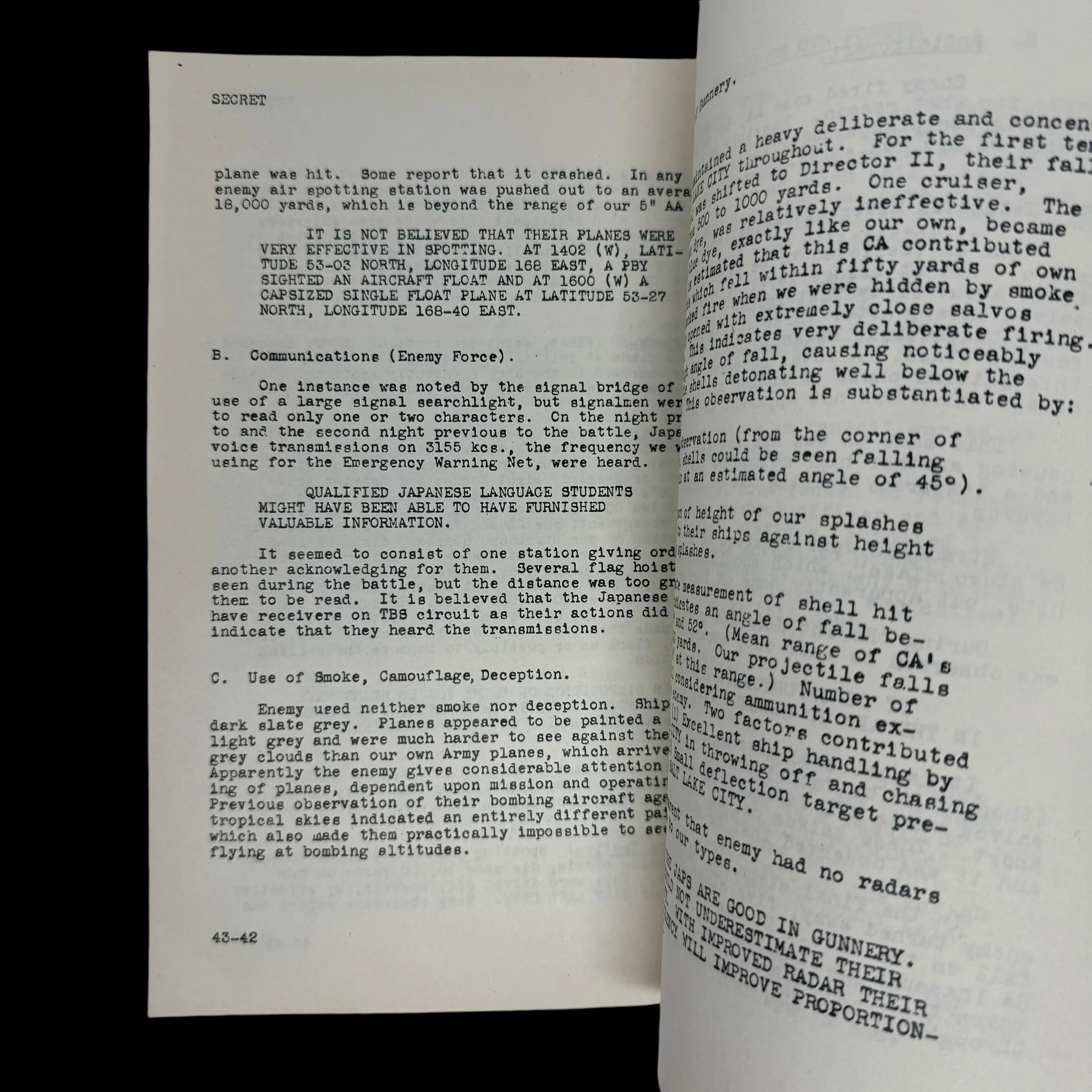
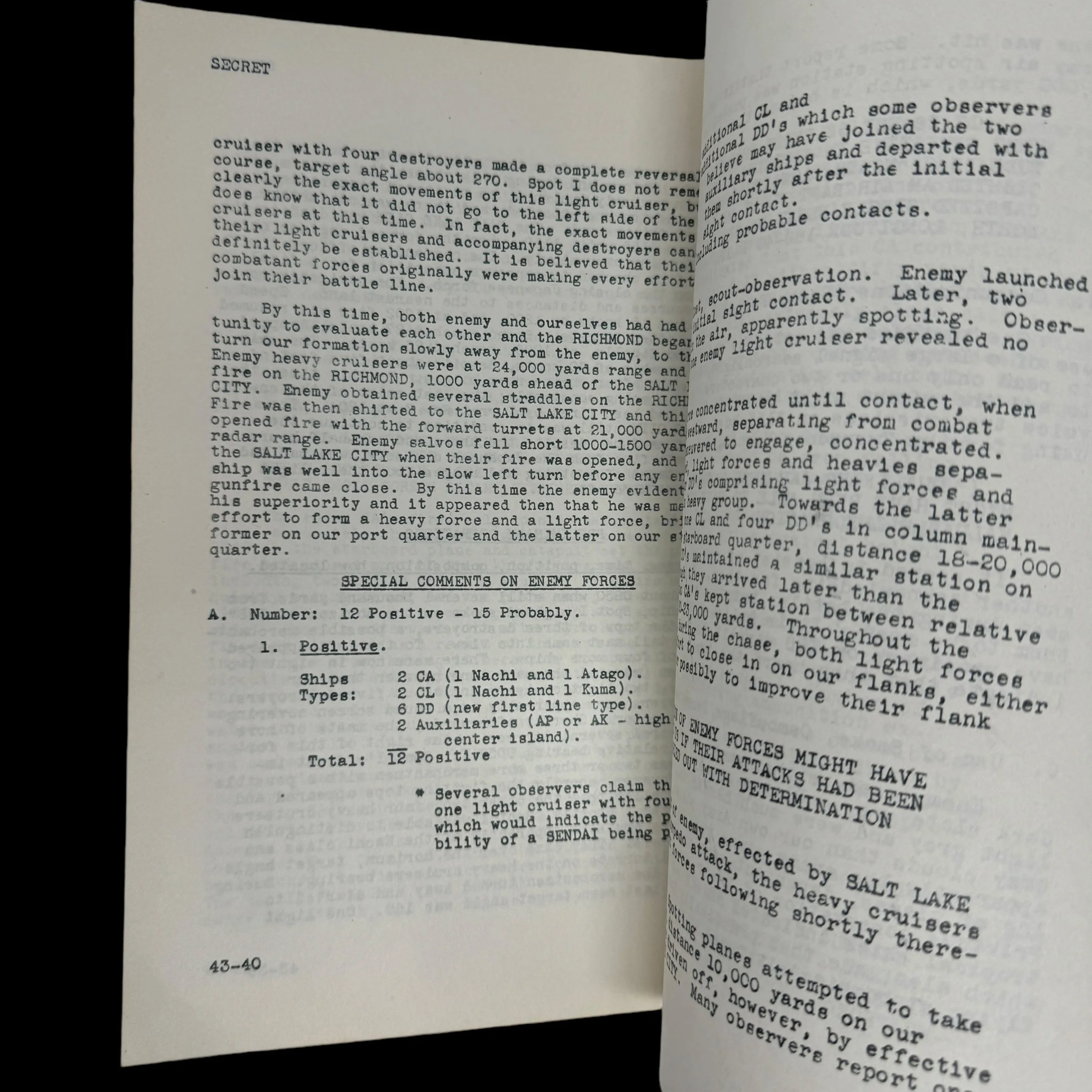

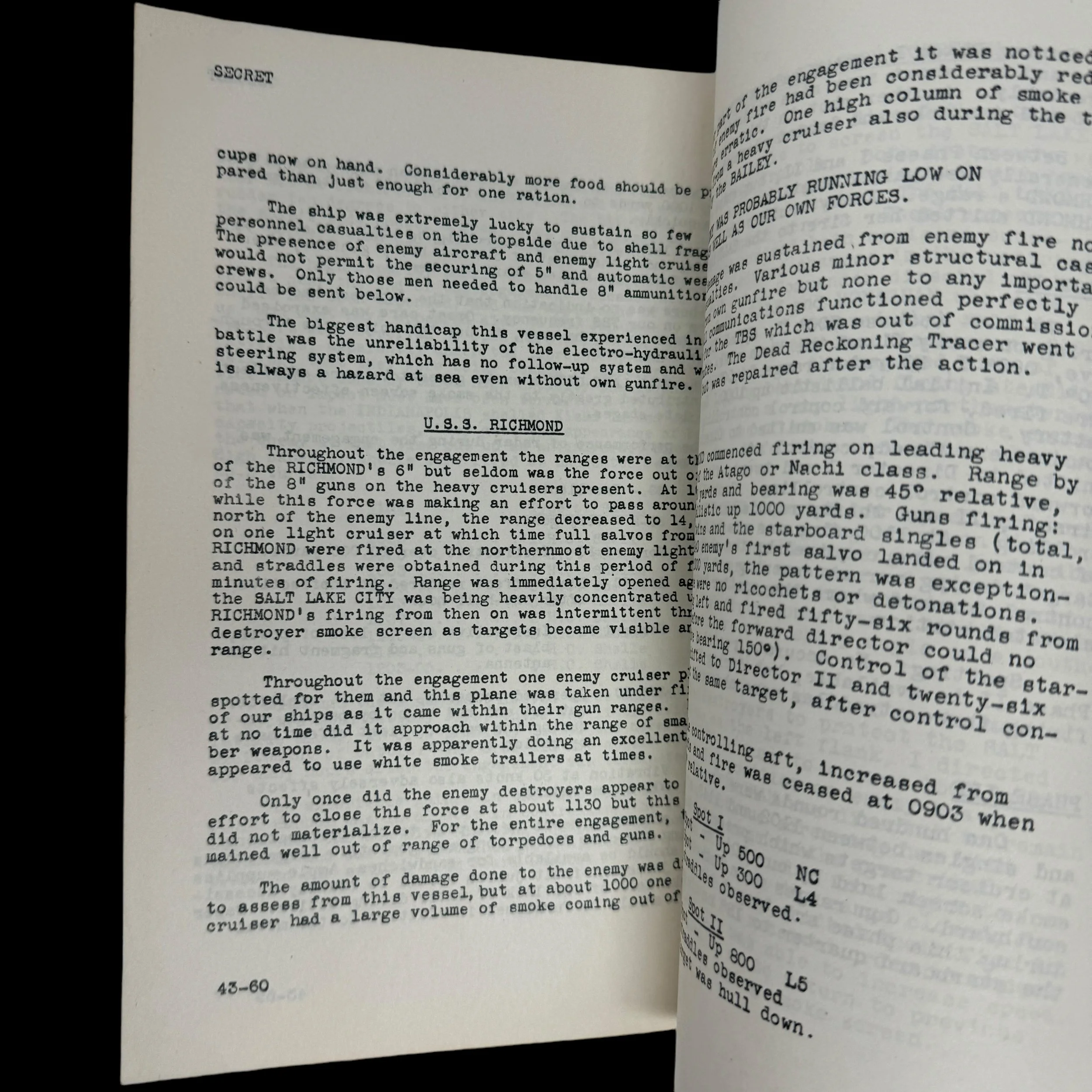
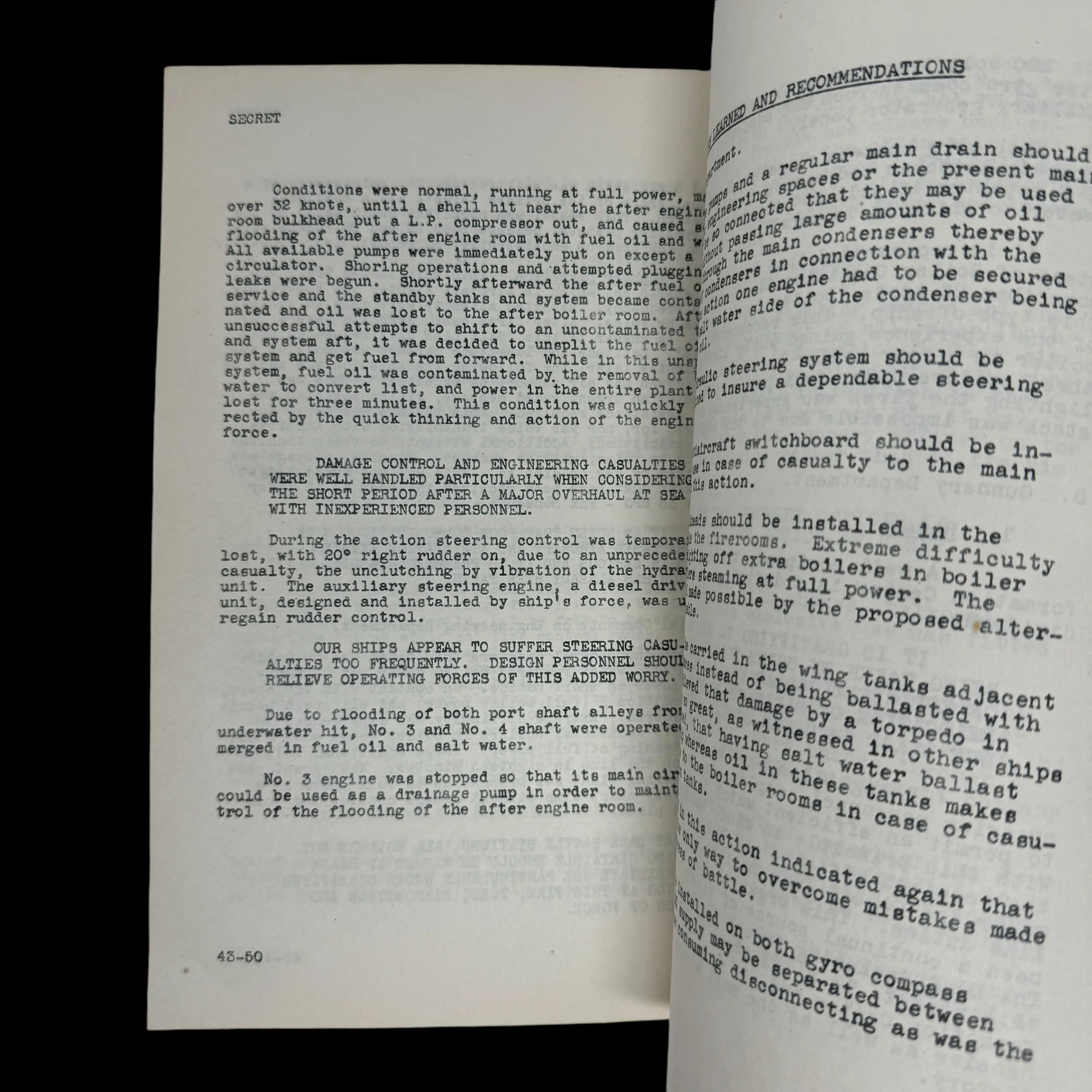
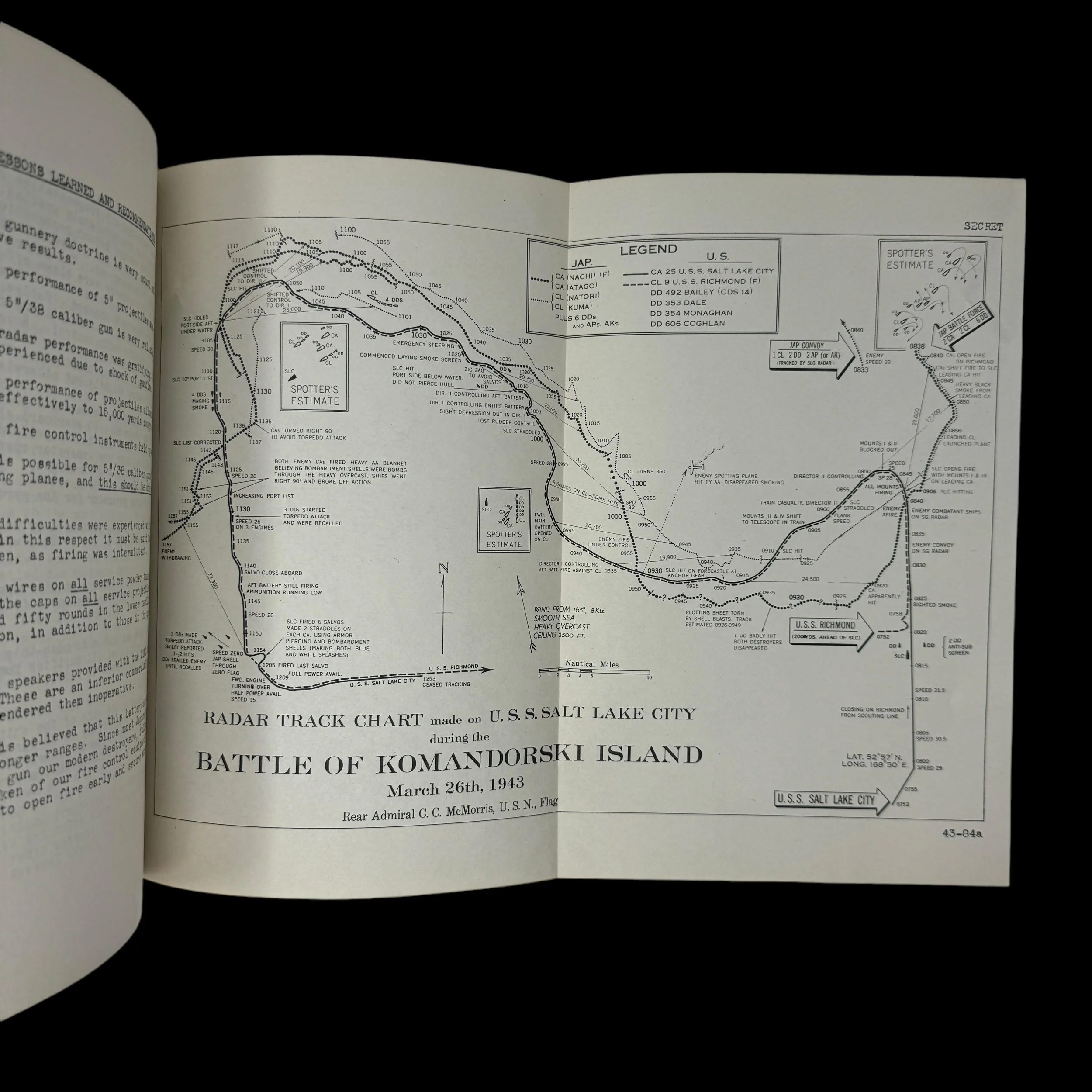
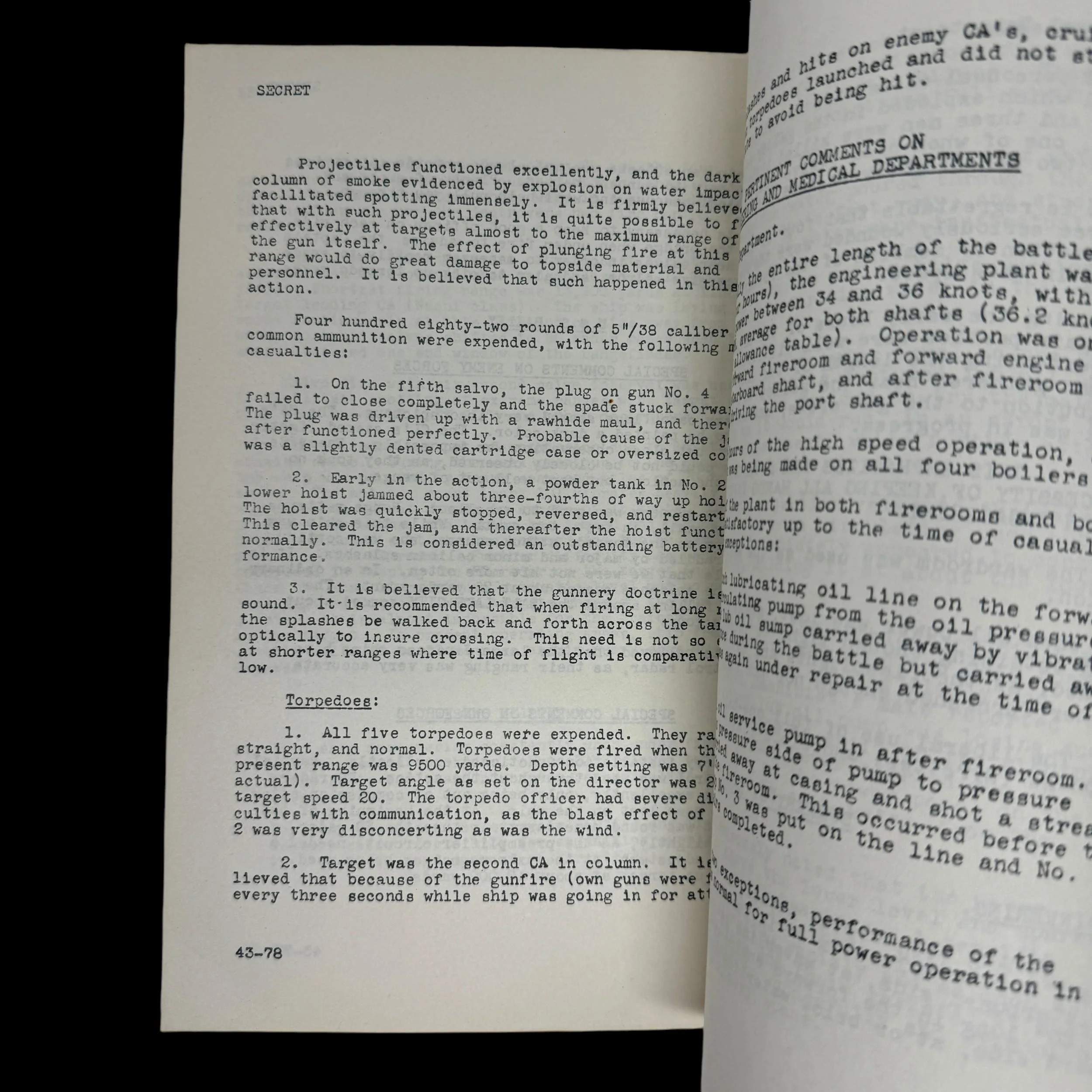
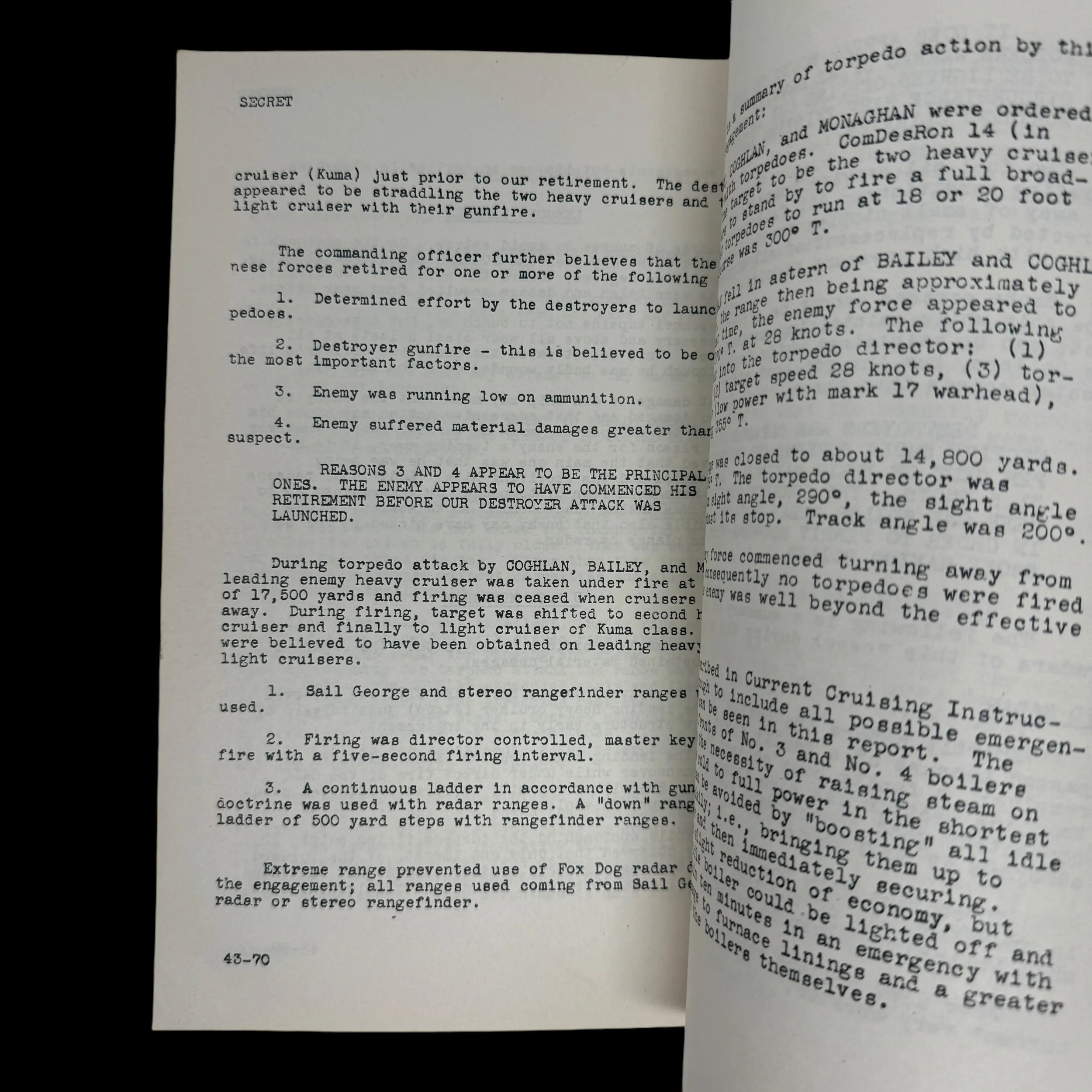
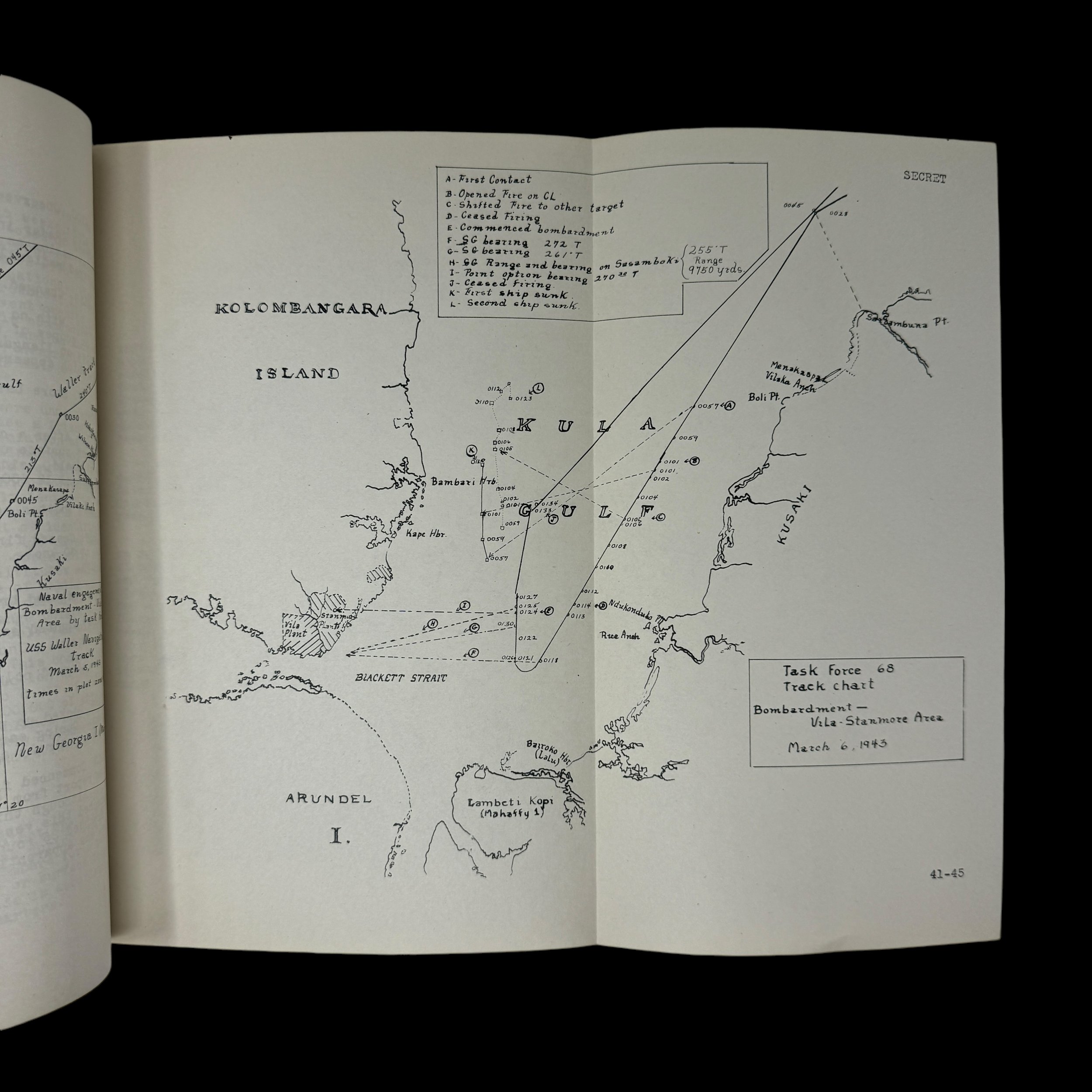

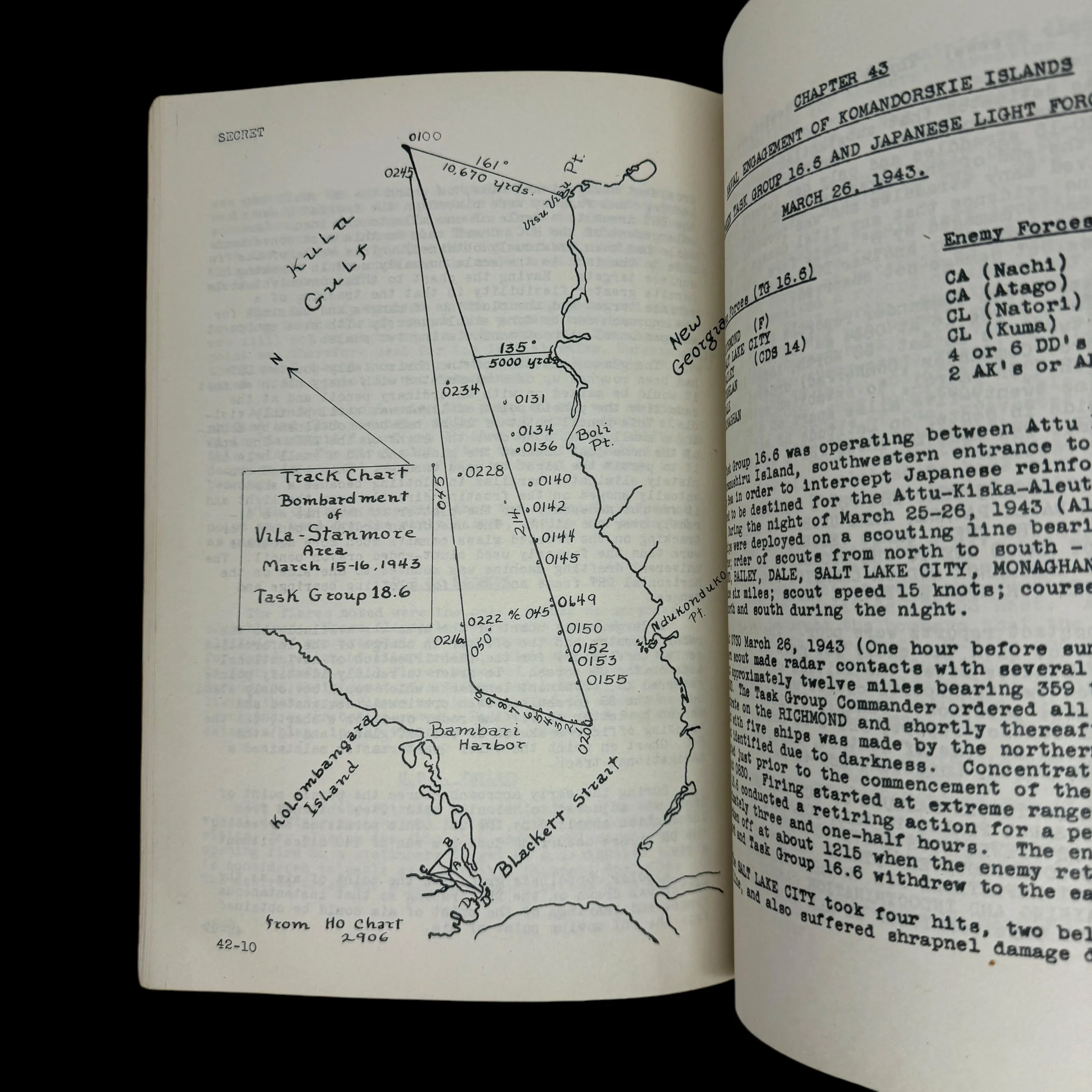
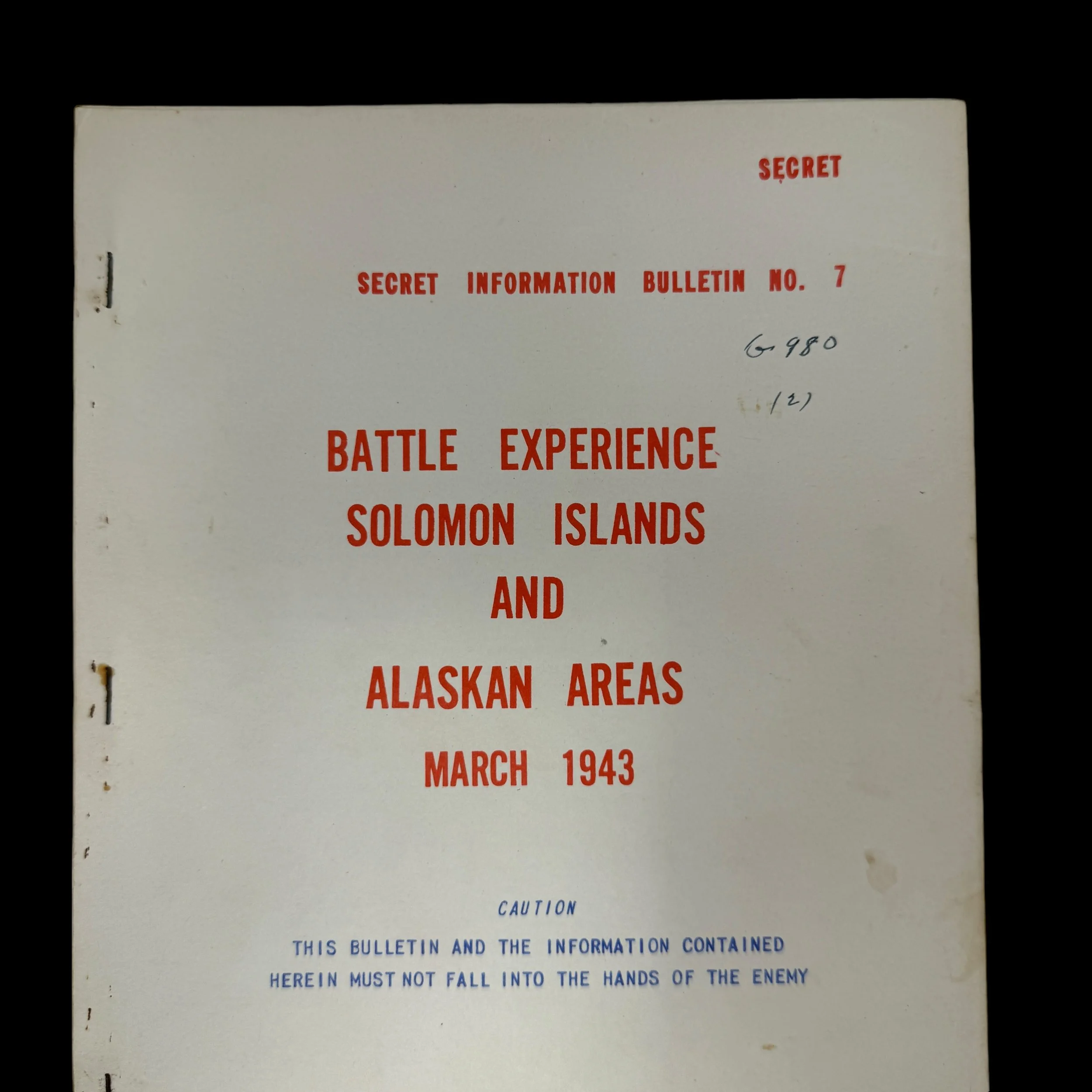
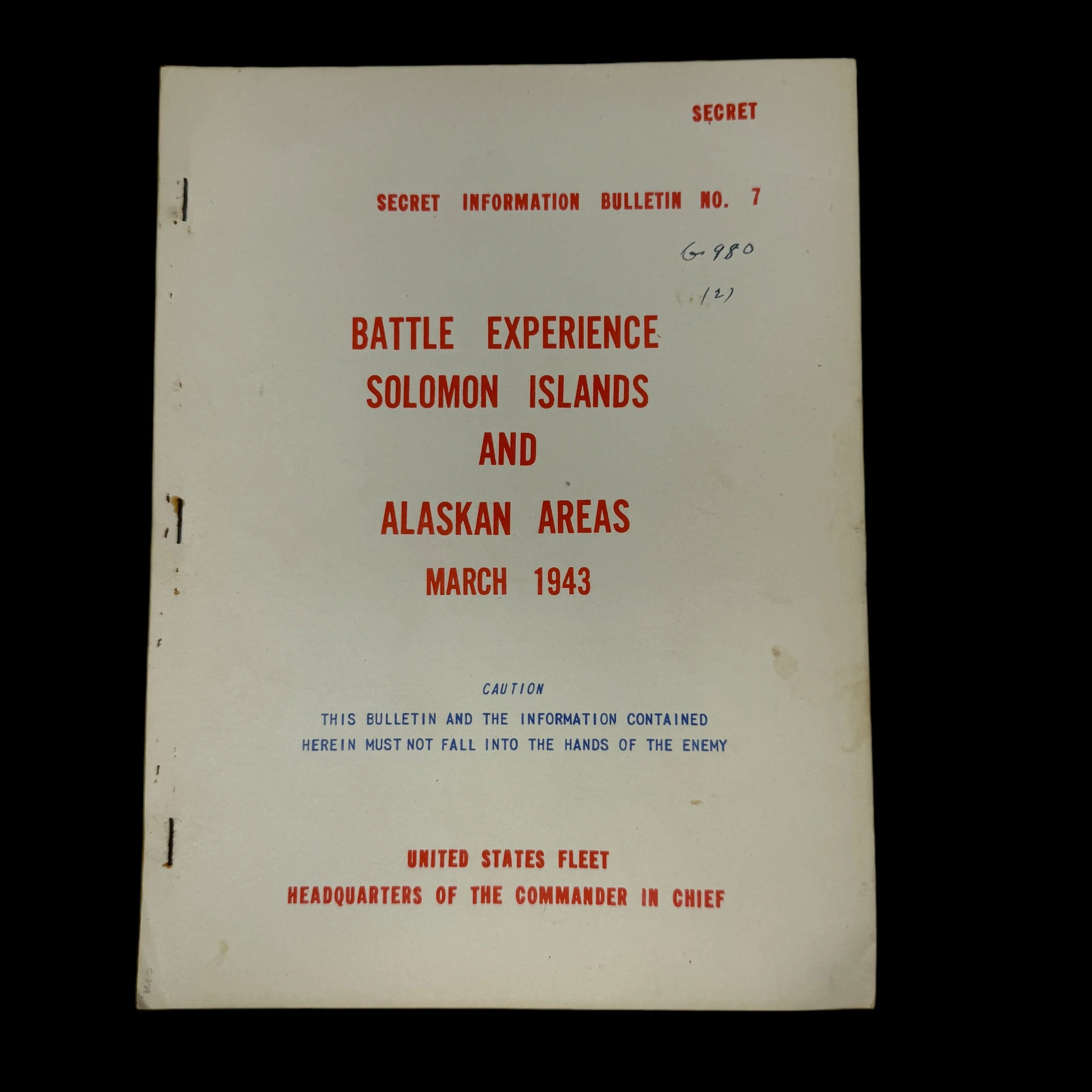
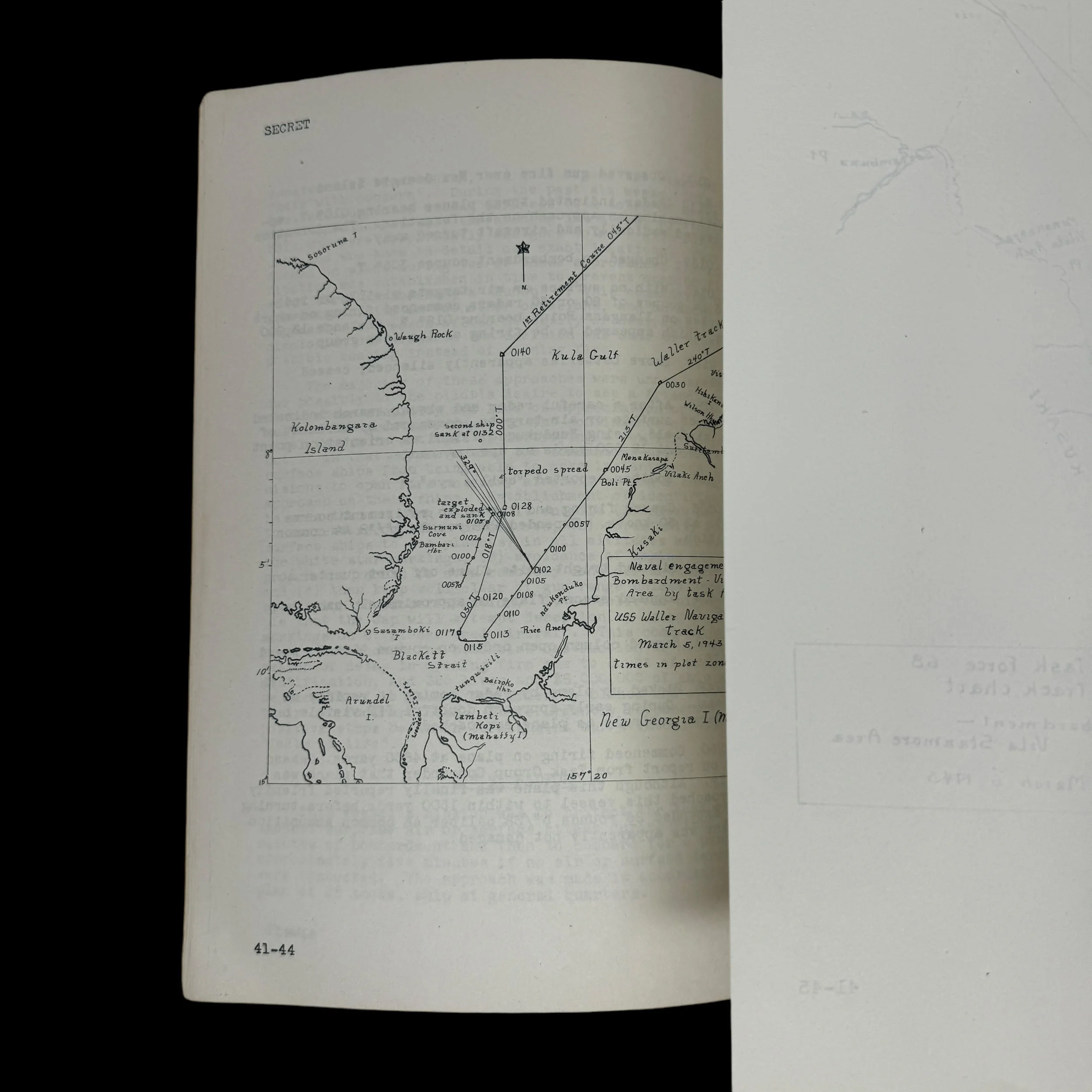
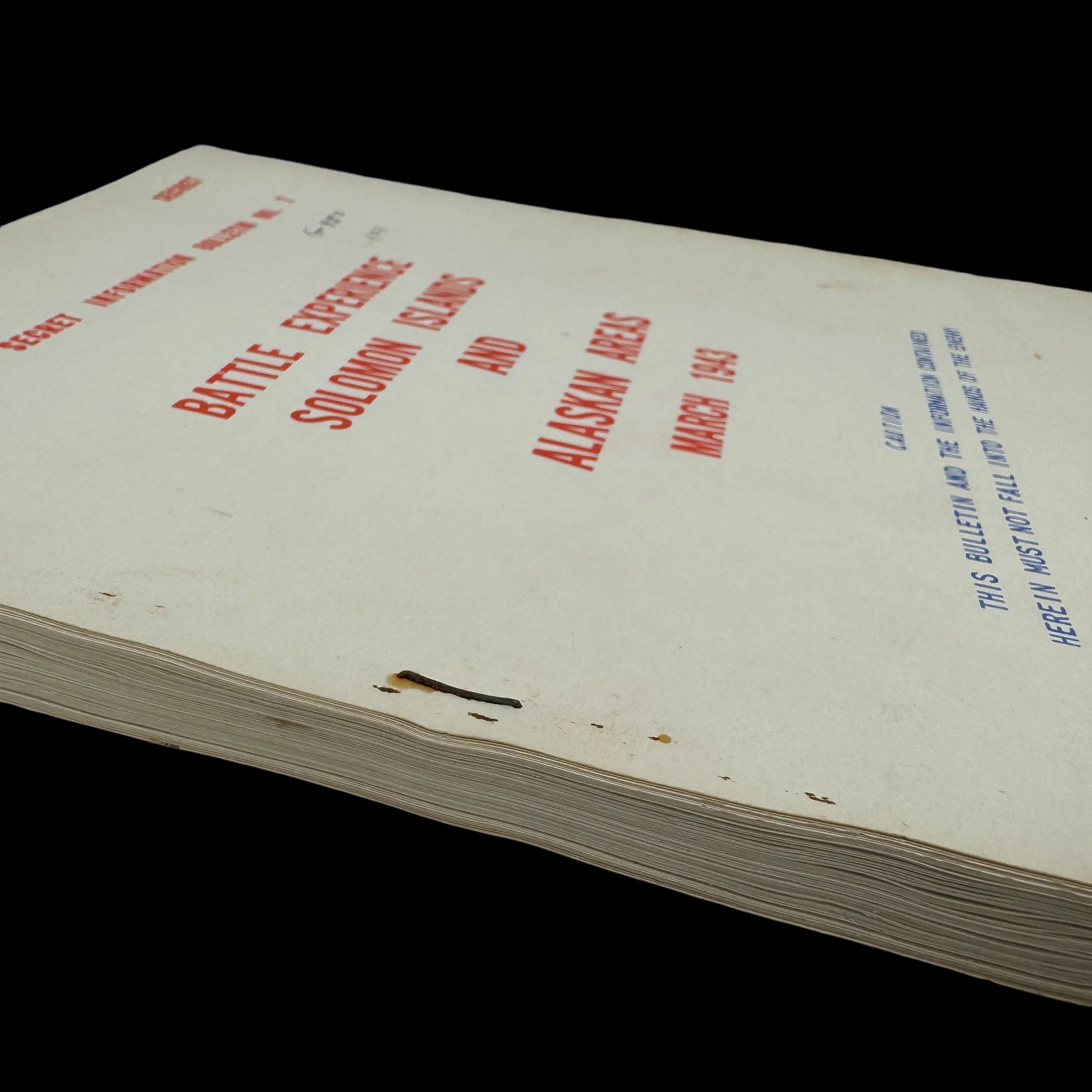
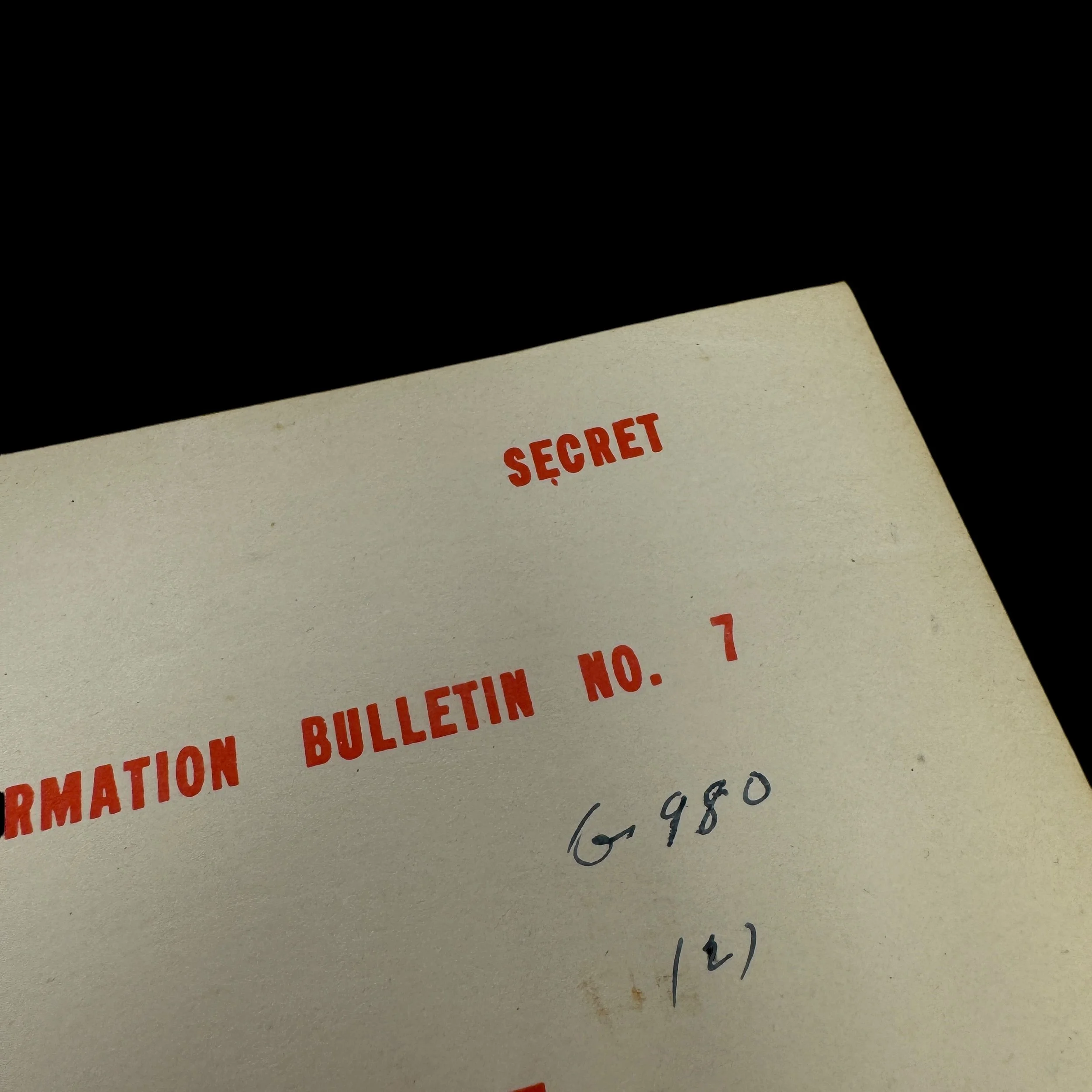
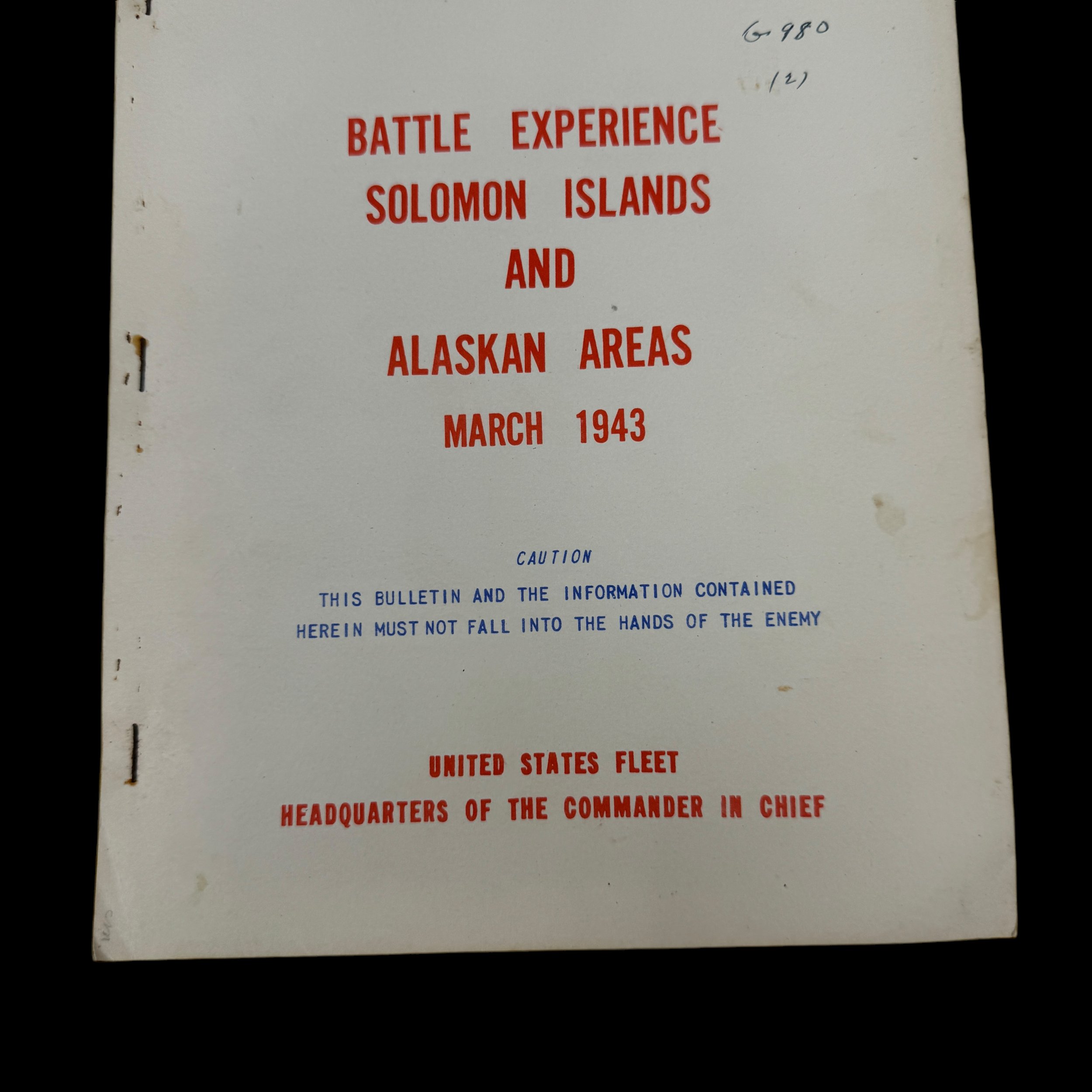
EXTREMELY RARE! WWII SECRET March 1943 Solomon Islands & Alaskan Areas Headquarters of the Commander in Chief Military Intelligence Report*
Comes with a hand-signed C.O.A.
This extraordinarily rare, museum-grade World War II artifact is an original "SECRET" marked "Battle Experience - Informational Bulletin," meticulously produced by the United States Fleet under the Headquarters of the Commander in Chief. During WWII, the operations and strategic planning of the U.S. Navy were directed by two prominent commanders: Admiral Chester W. Nimitz, Commander in Chief of the United States Pacific Fleet (CINCPAC), and Admiral Ernest J. King, Commander in Chief of the United States Fleet (CINCUS). Their combined leadership played a pivotal role in the Allied victory.
This highly classified and intricately detailed bulletin, issued by the Headquarters of the Commander in Chief, contains secret military maps, intelligence reports, tactical movements, and a unique compilation of "battle experiences." These experiences were drawn from war diaries and battle reports submitted by various commanders and ships engaged in key operations. The bulletin was printed in extremely limited quantities, strictly for the eyes of high-ranking military officials, including Officers and Generals.
The rarity of this document is underscored by the directive on its first page, which states: "Information must not fall into enemy hands - when no longer required they shall be destroyed by burning. No report of destruction need be submitted." As a result, only a handful of these original "SECRET" "Battle Experience - Informational Bulletins" are believed to still exist.
This particular "SECRET INFORMATION BULLETIN NO. 7" is a remarkable example, titled "Battle Experience - Solomon Islands & Alaskan Areas March 1943" It offers an unparalleled glimpse into the strategic operations and experiences of the United States Navy during some of the most crucial campaigns of the Pacific Theater.
The WWII Battle Experience in the Solomon Islands and Alaskan Areas – March 1943
The Solomon Islands and the Alaskan areas were two critical theaters in the Pacific War during World War II. By March 1943, both regions had seen fierce fighting as the United States and its Allies sought to contain and repel the Japanese forces that had expanded rapidly throughout the Pacific in the early stages of the war. The battles fought in these areas were characterized by harsh environmental conditions, difficult terrain, and a tenacious enemy, making them some of the most grueling campaigns of the war.
The Solomon Islands Campaign: Guadalcanal and Beyond
The Solomon Islands were a focal point for Japanese expansion in the South Pacific, and by March 1943, the Allies had been engaged in a protracted struggle to secure the islands, particularly Guadalcanal, which was captured after months of bloody combat. The battle for Guadalcanal, which began in August 1942, was a turning point in the Pacific War. By early 1943, the Allies had finally secured the island after a costly six-month campaign marked by naval engagements, air battles, and brutal jungle warfare.
Following the Allied victory at Guadalcanal, the next phase of the Solomon Islands campaign focused on the strategic island of New Georgia and the surrounding areas. The Japanese maintained a strong presence in the Solomons, including on the island of Kolombangara, where they had established a key base. The Americans, under the command of Admiral William Halsey, were determined to push further north and dislodge the Japanese from their remaining positions in the island chain.
In March 1943, the Allies faced numerous challenges in the Solomon Islands. The terrain was incredibly difficult, with dense jungles, mountainous regions, and treacherous rivers making movement slow and arduous. Malaria and other tropical diseases were rampant, posing a significant threat to both sides. The Japanese were highly skilled in jungle warfare, and their defensive positions were well-fortified. As a result, combat in the Solomon Islands was often a brutal and exhausting affair, with both sides suffering heavy casualties.
One notable battle during this period was the Battle of Blackett Strait, fought on March 5, 1943. In this naval engagement, American destroyers attacked and sank two Japanese destroyers attempting to reinforce Japanese troops on Kolombangara. The sinking of the Japanese vessels was a significant blow to their ability to resupply and reinforce their garrisons in the Solomon Islands, and it further cemented American naval dominance in the region.
The Aleutian Islands Campaign: The Forgotten Front
While the Solomon Islands campaign is well-known, the fighting in the Aleutian Islands, part of the Alaskan area, remains a lesser-known aspect of the Pacific War. The Aleutians were strategically important because of their location along the Great Circle route between North America and Asia. In June 1942, the Japanese occupied the islands of Attu and Kiska, marking the first time since the War of 1812 that enemy forces had occupied American territory.
By March 1943, the United States was preparing to mount a counteroffensive to retake the Aleutian Islands. The campaign was characterized by its unique challenges, particularly the extreme weather conditions in the region. The Aleutian Islands are located in the North Pacific, where frigid temperatures, heavy fog, and gale-force winds were common. The harsh weather made combat operations incredibly difficult, as aircraft were often grounded due to poor visibility, and naval vessels struggled to navigate the treacherous waters.
The Japanese occupation of Attu and Kiska was largely defensive, as they hoped to divert American forces from the more critical campaigns in the South Pacific. However, the Americans recognized the importance of securing the Aleutians to prevent further Japanese expansion and protect the northern approaches to the United States.
In March 1943, American forces launched a series of bombing raids on the Japanese-held islands in preparation for a full-scale invasion. These raids were largely ineffective due to the poor weather, but they signaled the beginning of the end for Japanese control of the Aleutians. The buildup of American forces in Alaska and the Aleutians continued throughout the spring, setting the stage for the eventual recapture of Attu in May 1943.
The Experience of Soldiers and Sailors in the Solomon and Alaskan Areas
For the men who fought in the Solomon Islands and the Aleutians, the experience of war in these remote and challenging regions was unlike anything they had encountered before. In the Solomons, American troops had to contend not only with the Japanese but also with the environment. The thick jungles, swamps, and rivers of the islands made movement difficult and often limited the effectiveness of heavy equipment. Soldiers frequently found themselves fighting in close-quarters engagements, where small-unit tactics and individual bravery were often decisive.
The constant threat of disease also weighed heavily on Allied forces in the Solomons. Malaria, dengue fever, and other tropical illnesses were widespread, and many soldiers became sick even before engaging in combat. The importance of medical support and preventative measures, such as mosquito netting and anti-malaria drugs, became apparent, though these measures were not always available in sufficient quantities.
In contrast, the Aleutian campaign was defined by the extreme cold and unpredictable weather. Soldiers stationed in Alaska and the Aleutians faced bitterly cold temperatures, often well below freezing, and had to endure snowstorms and heavy fog. The isolation of the region added to the difficulty, as supplies and reinforcements were often delayed or cut off entirely by the weather. Despite these challenges, American forces in the Aleutians persevered and prepared for the eventual liberation of the islands.
Naval and air forces also played a crucial role in both campaigns. In the Solomon Islands, control of the seas was essential to the success of the Allied campaign, as naval forces were needed to transport troops and supplies to the islands and to protect them from Japanese counterattacks. In the Aleutians, the weather made naval operations extremely hazardous, but American forces used their superior resources to maintain pressure on the Japanese and prevent them from consolidating their gains.
The battles fought in the Solomon Islands and the Alaskan areas in March 1943 were critical to the overall Allied strategy in the Pacific during World War II. In the Solomons, the Allies sought to continue their momentum after the victory at Guadalcanal, while in the Aleutians, American forces prepared for the eventual liberation of Japanese-occupied islands. Both campaigns were marked by harsh environmental conditions, difficult terrain, and tenacious enemy resistance, but the determination and resilience of the Allied forces ultimately paved the way for future successes in the Pacific War.